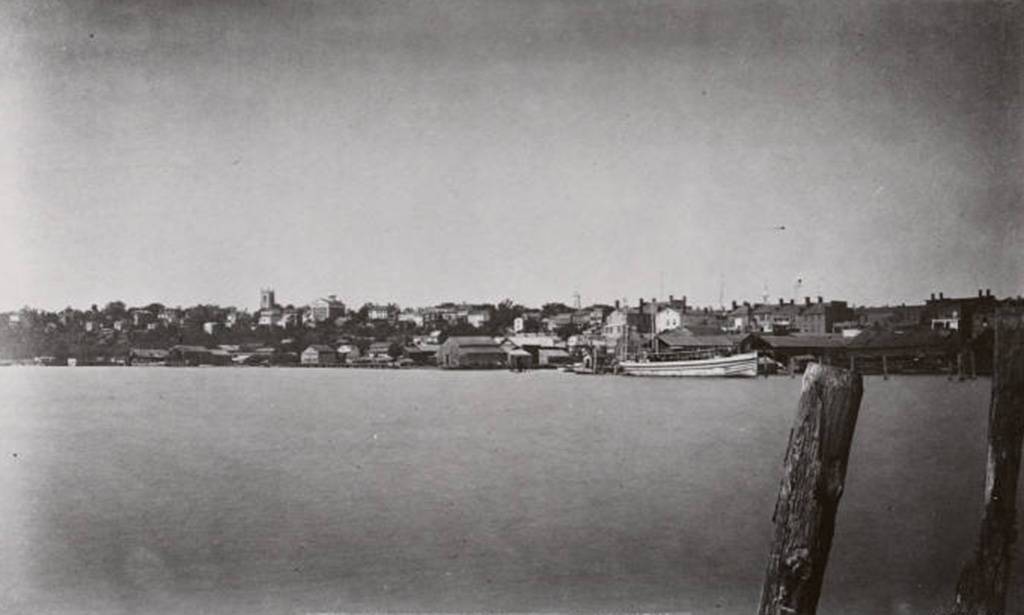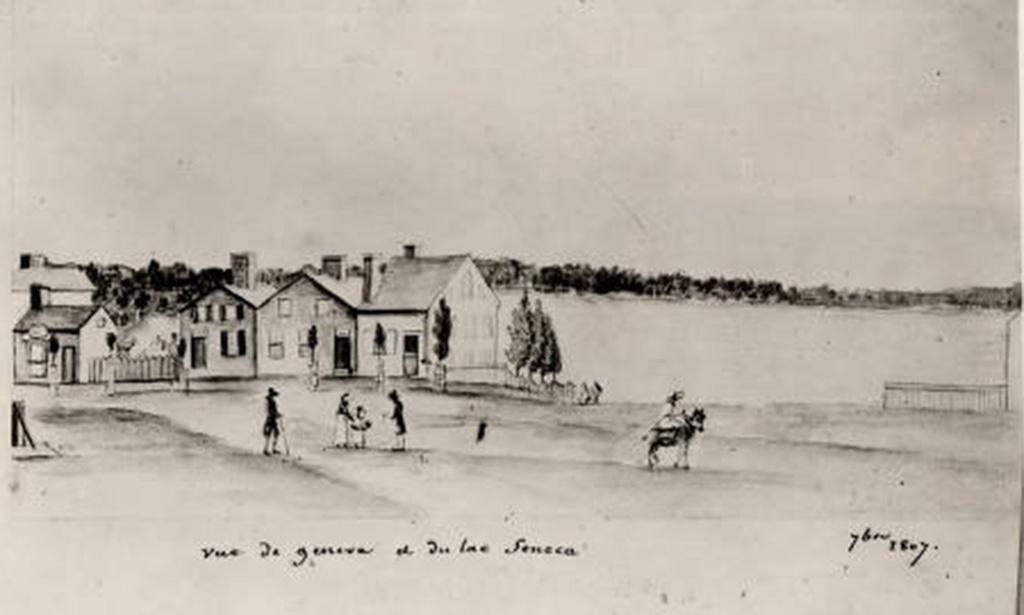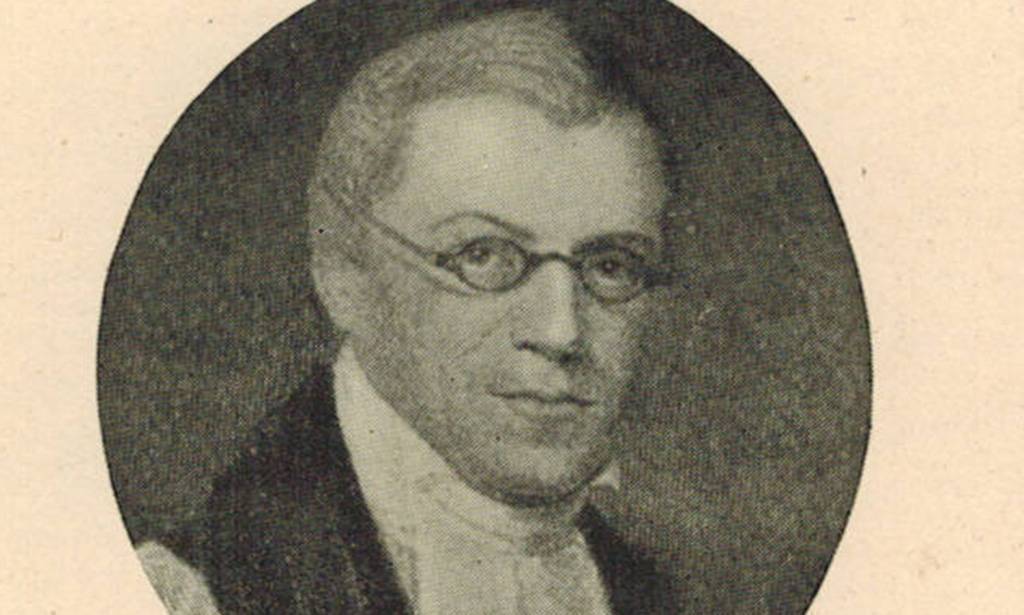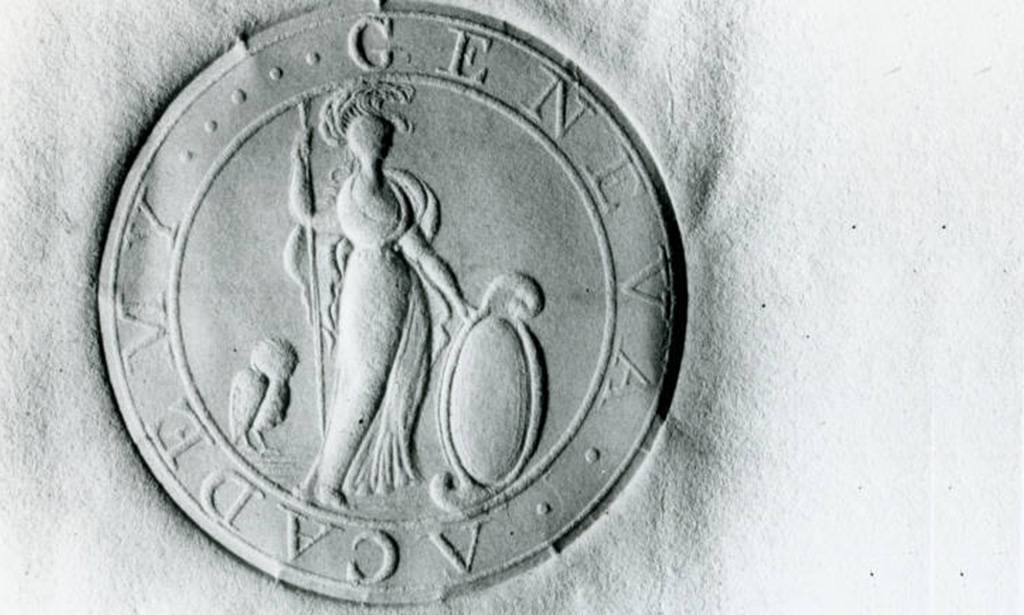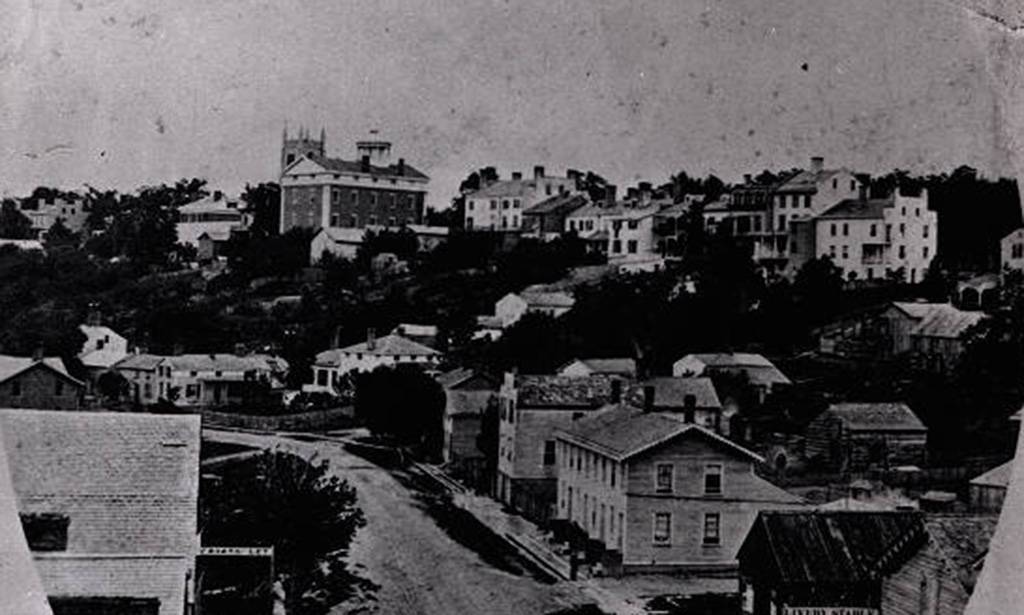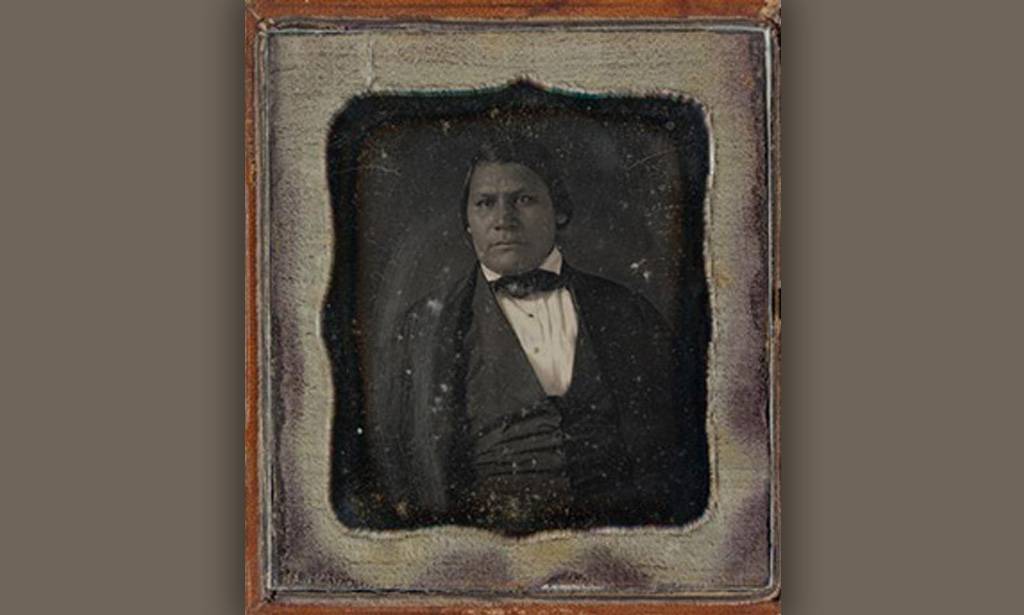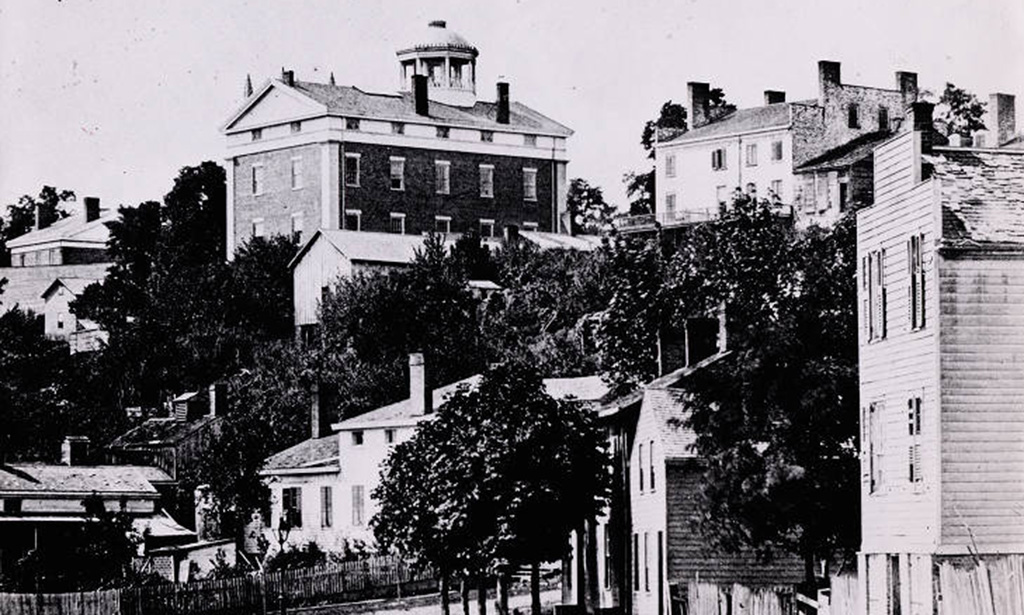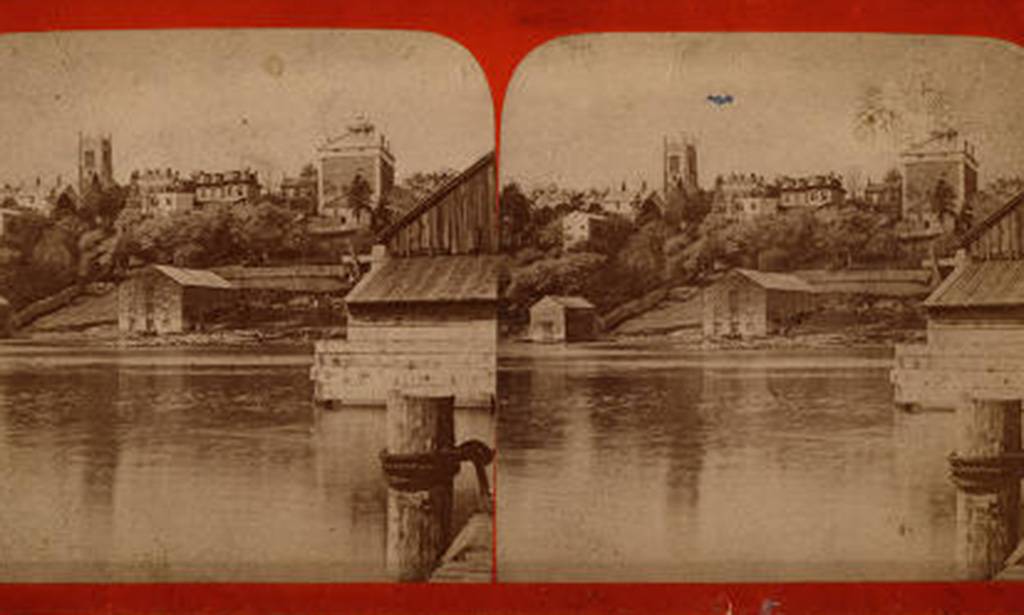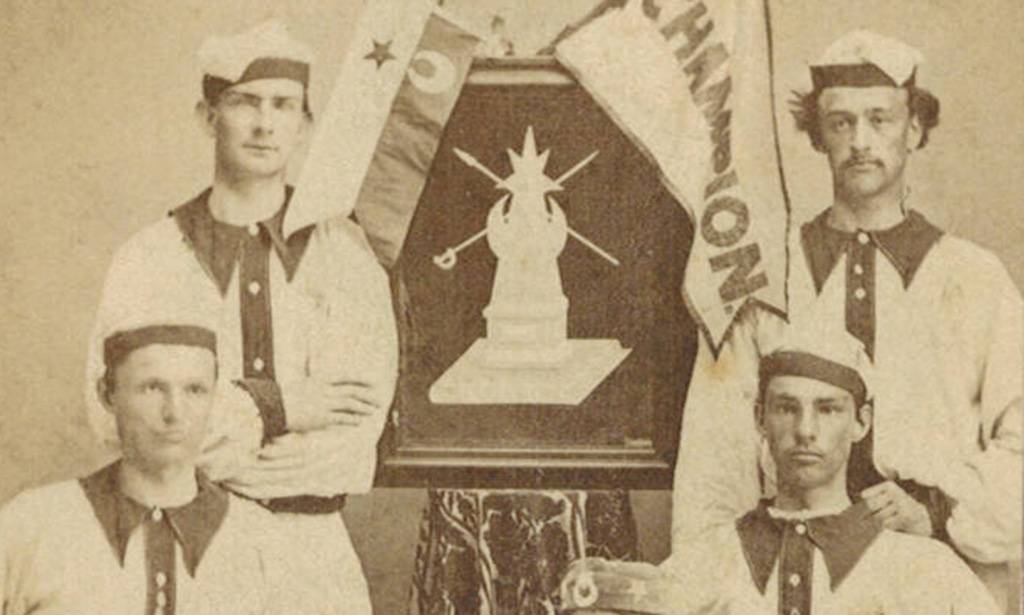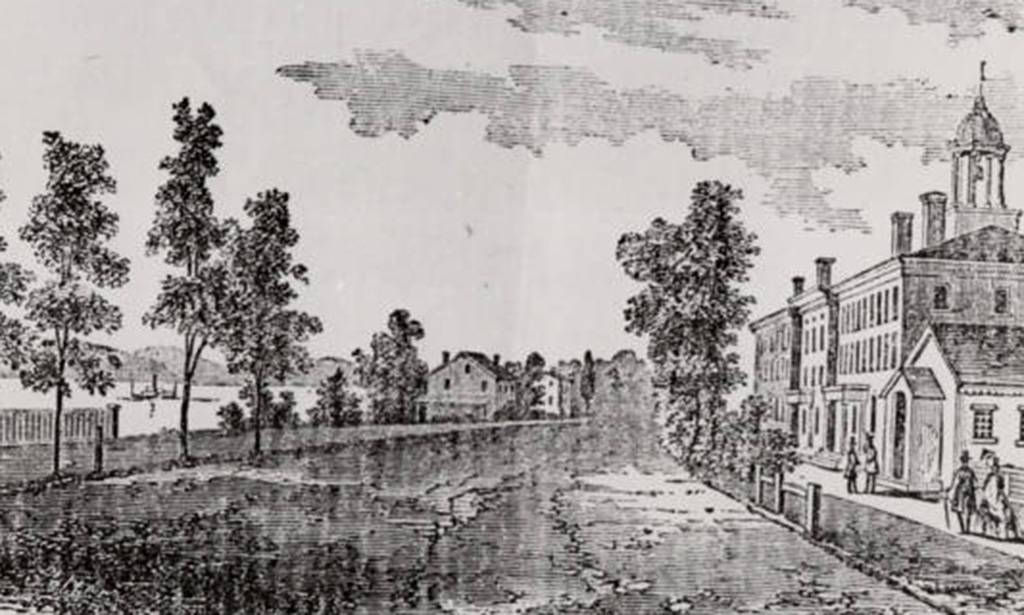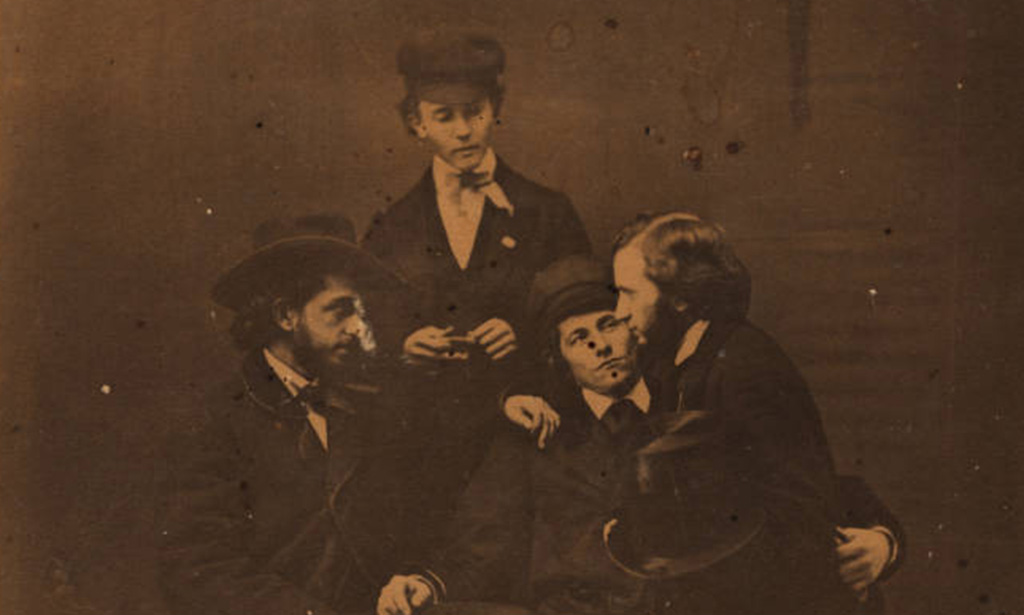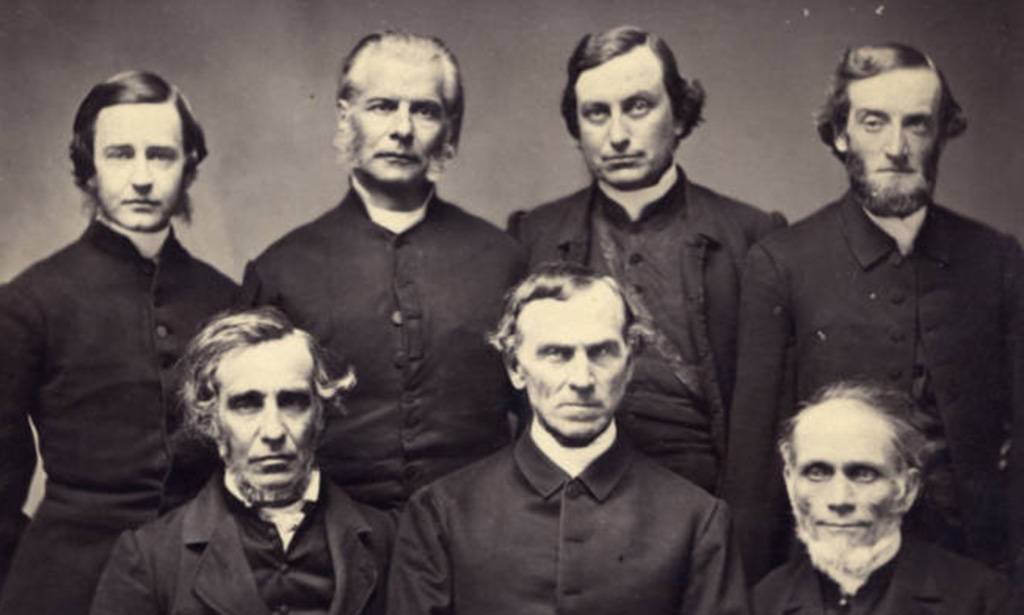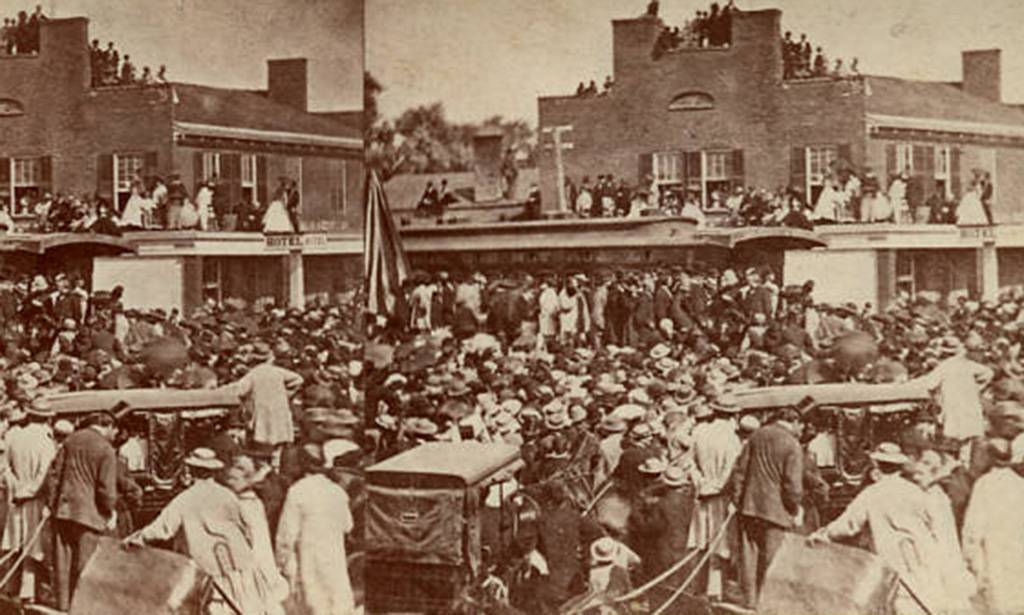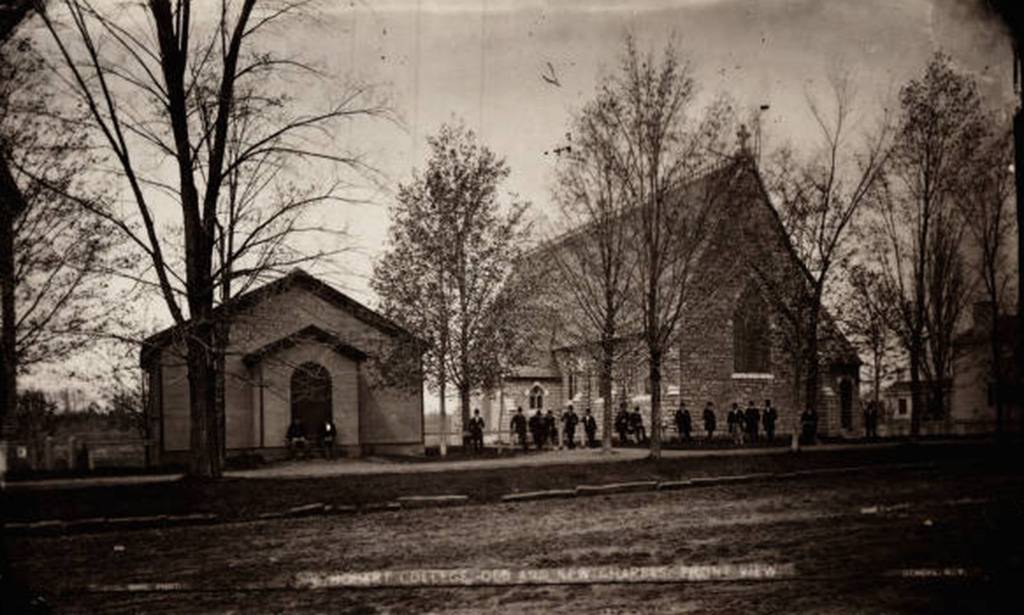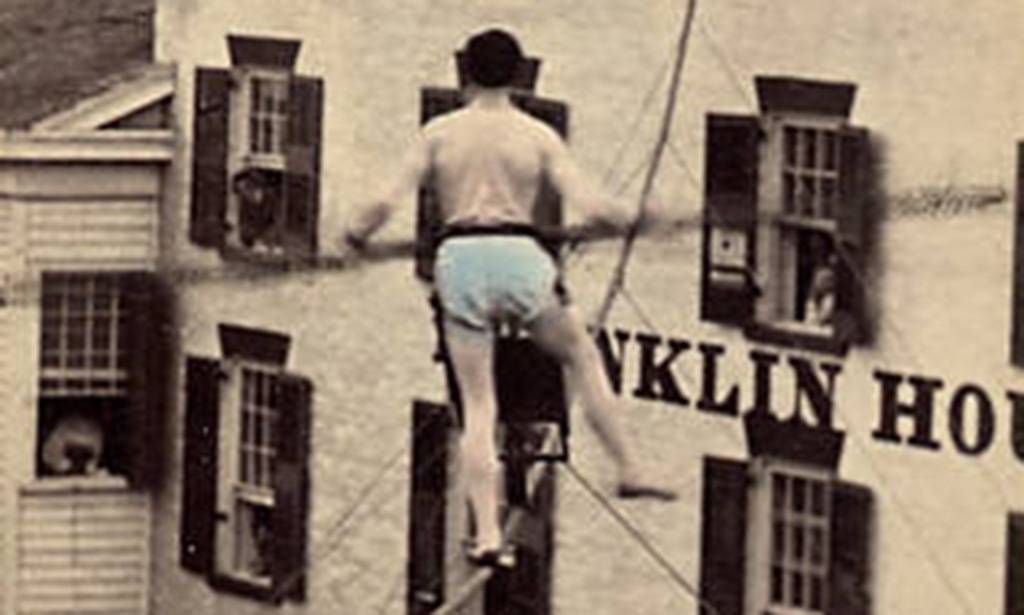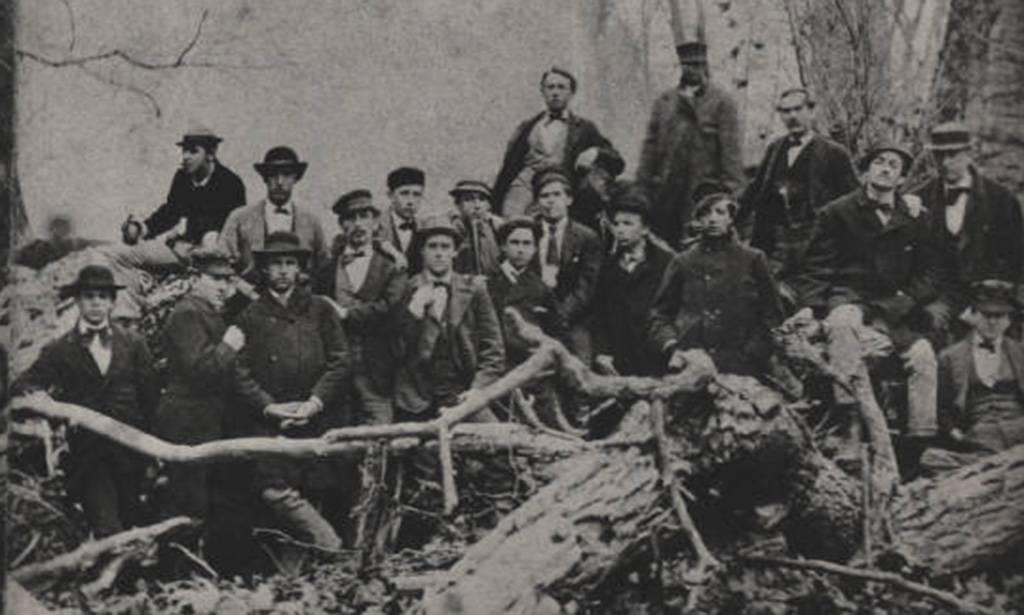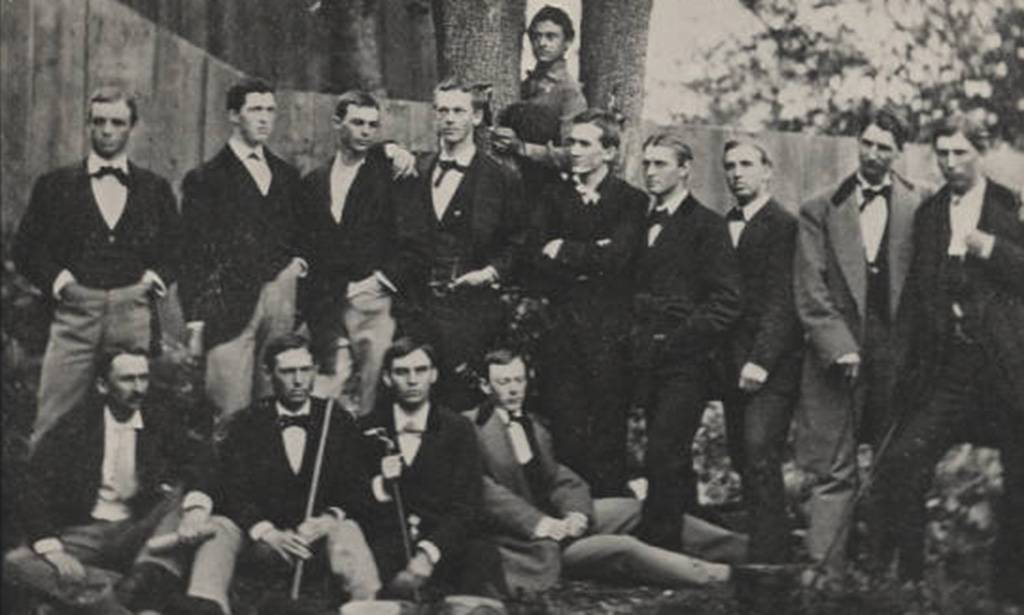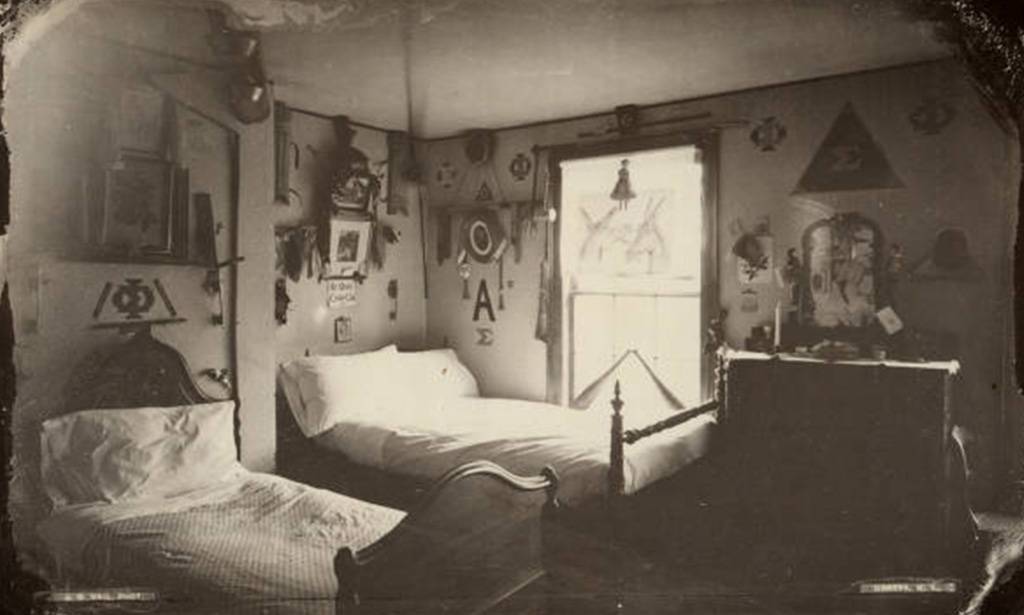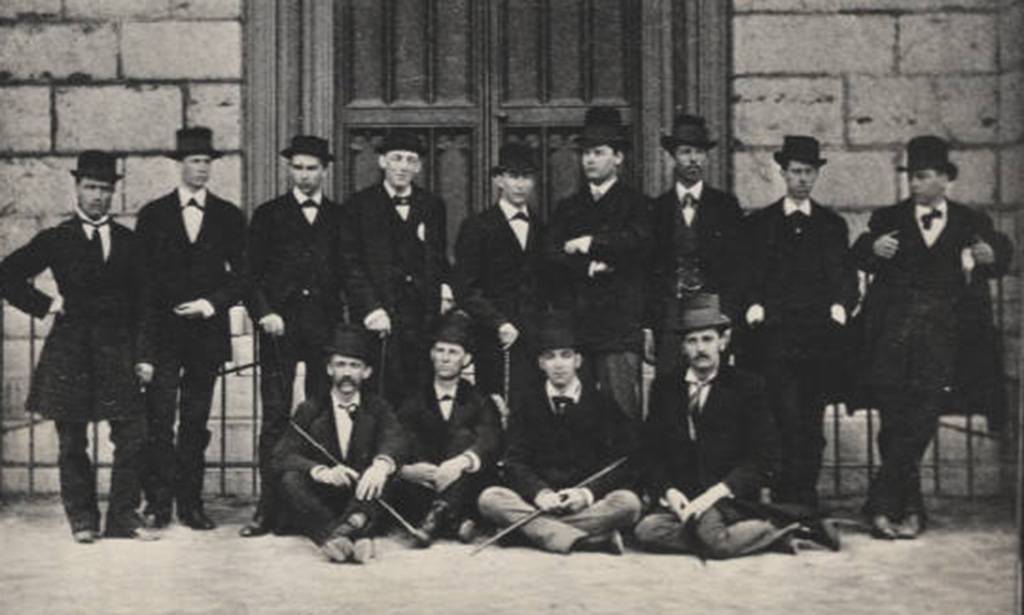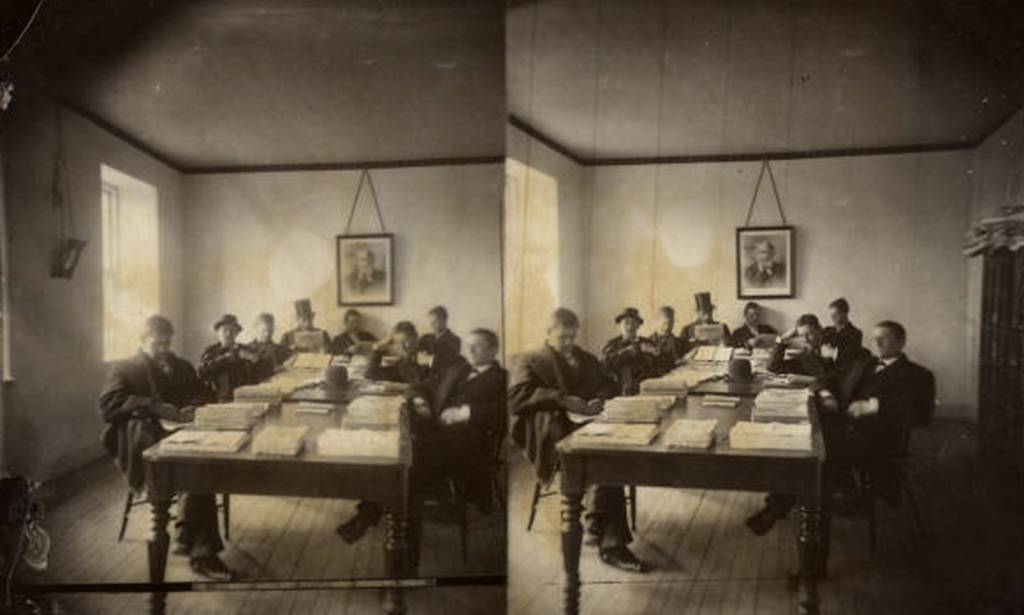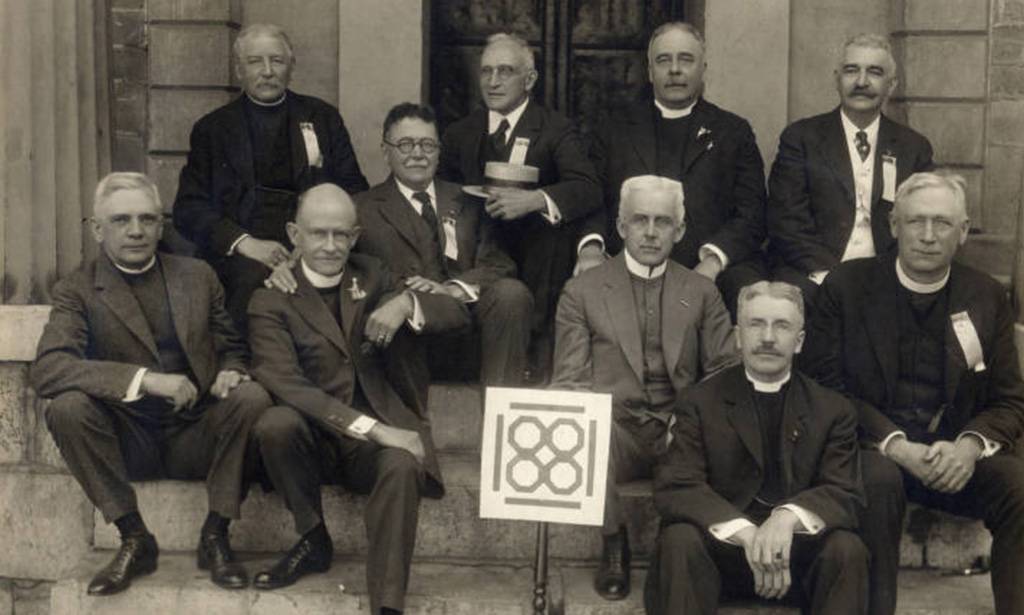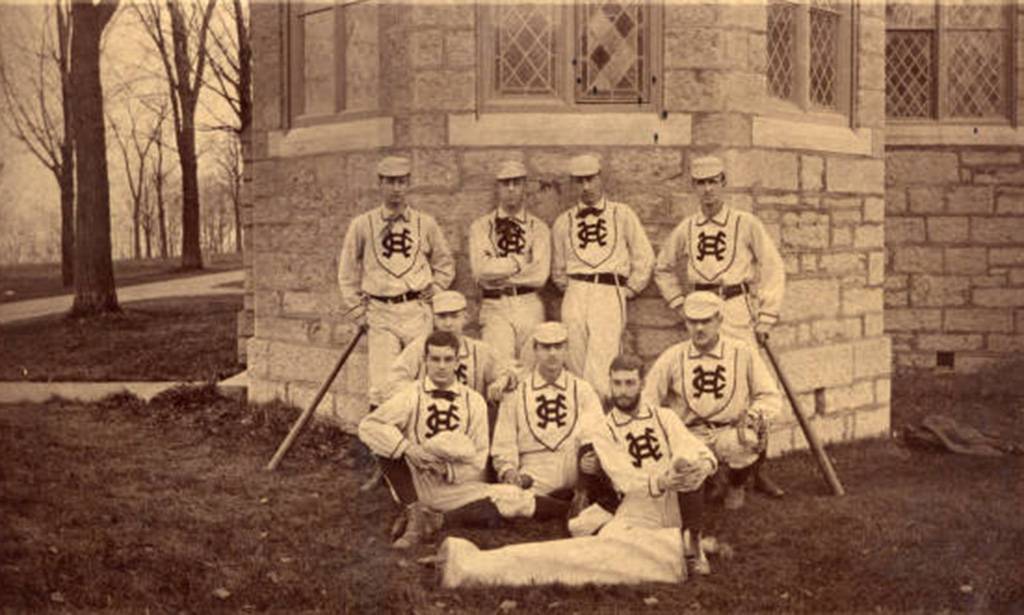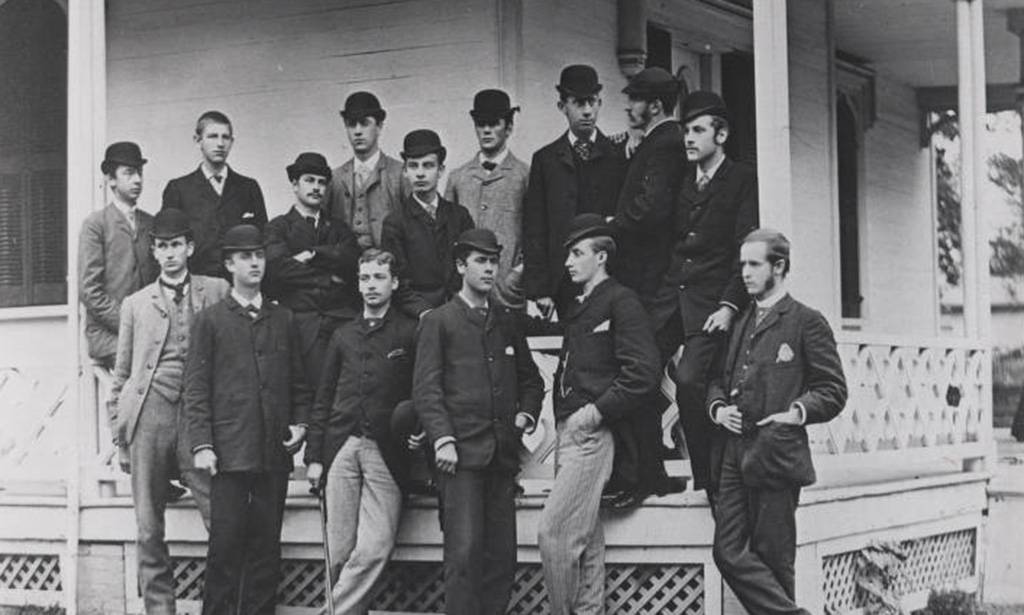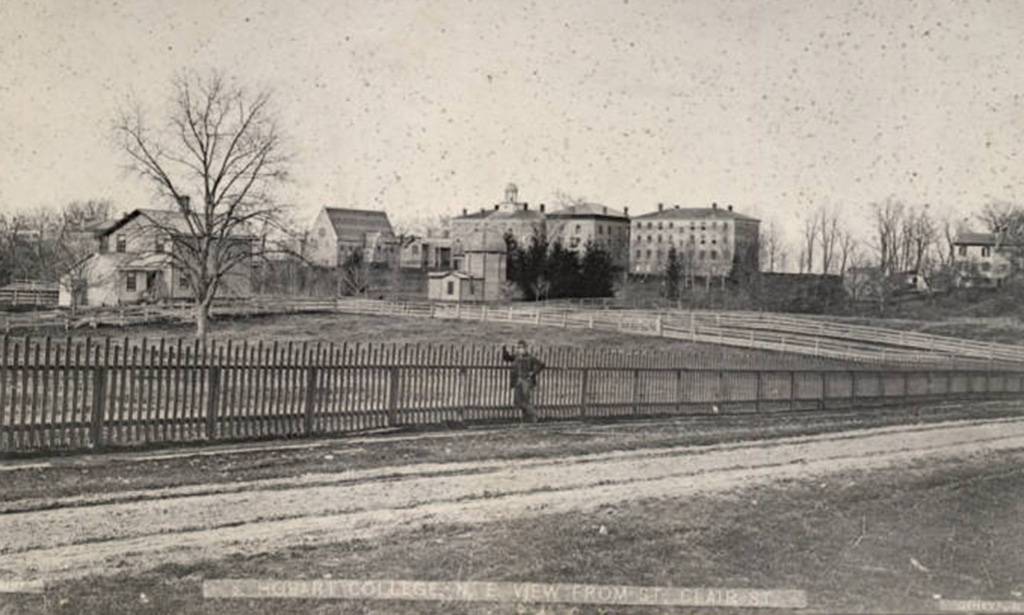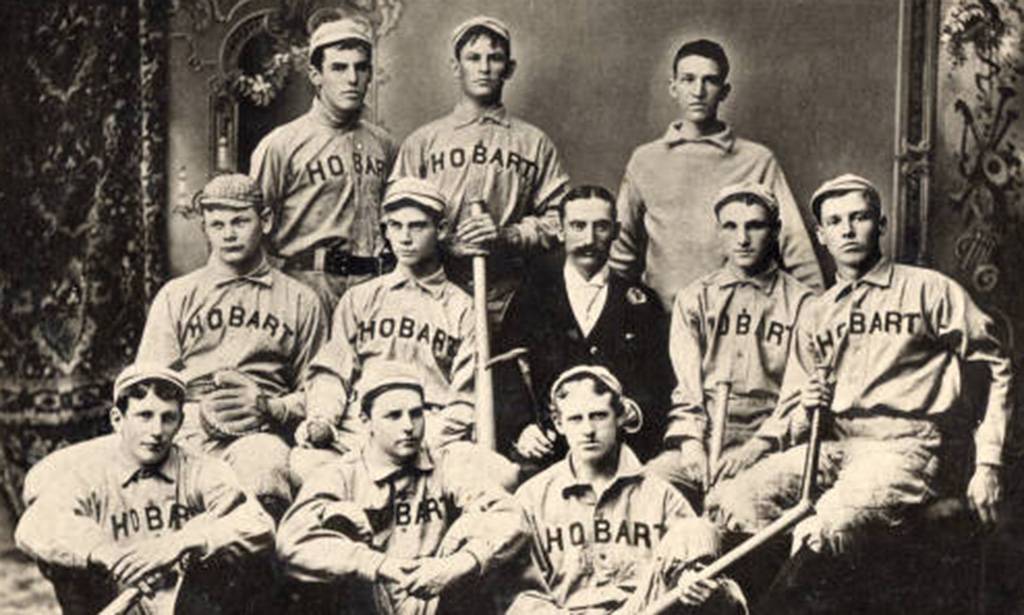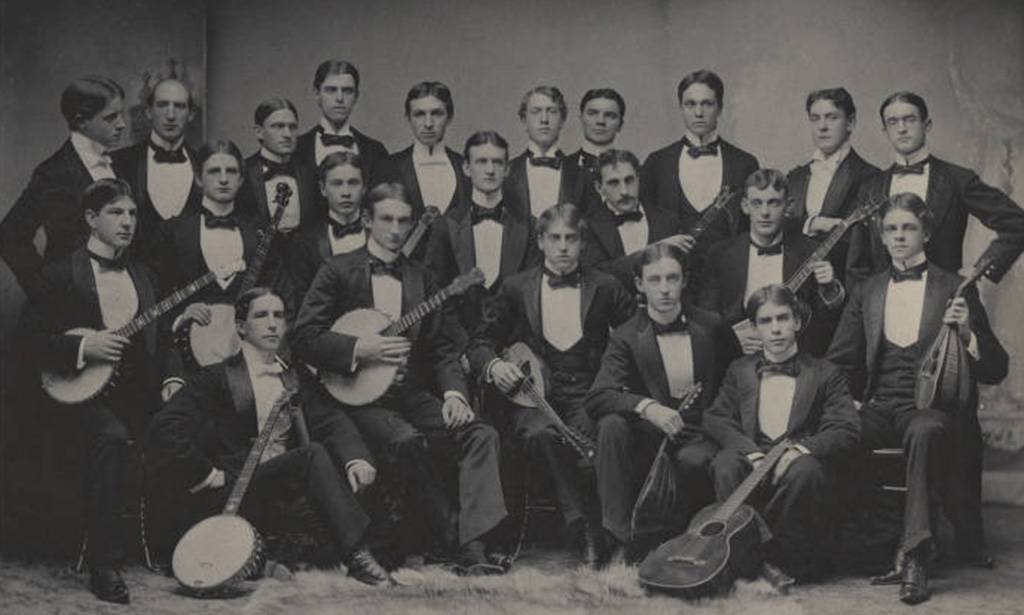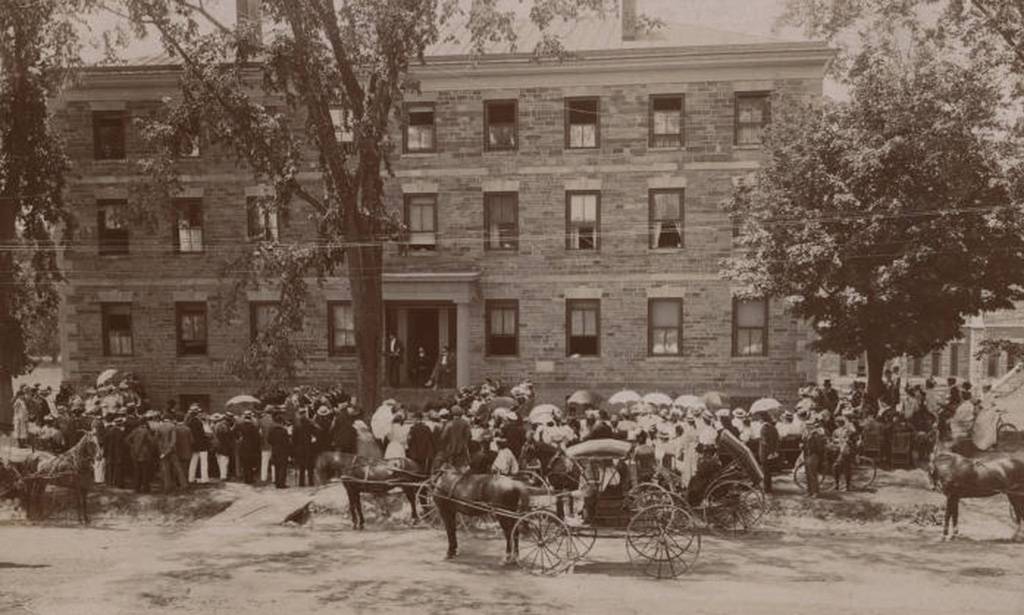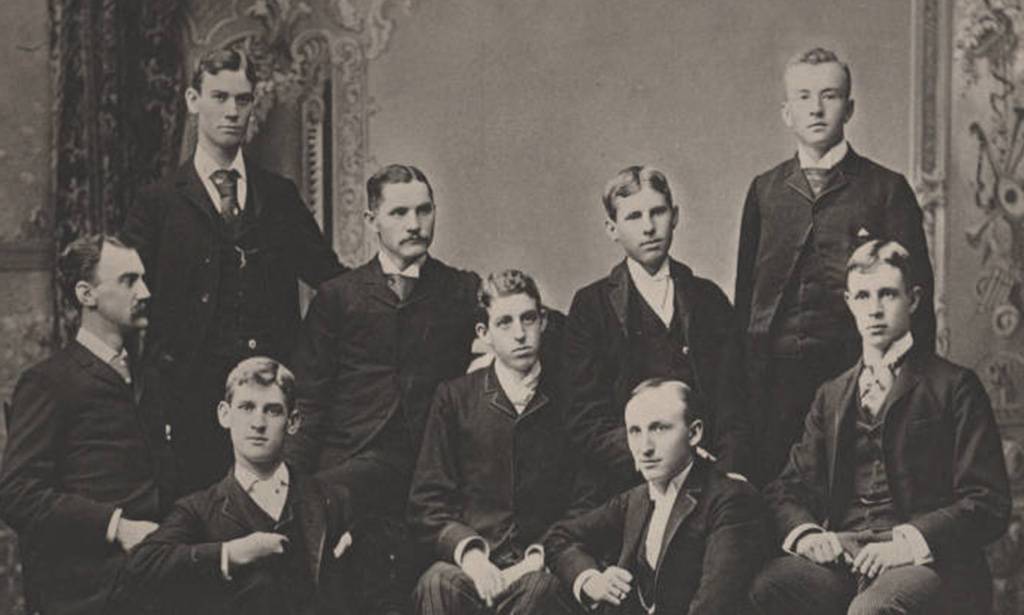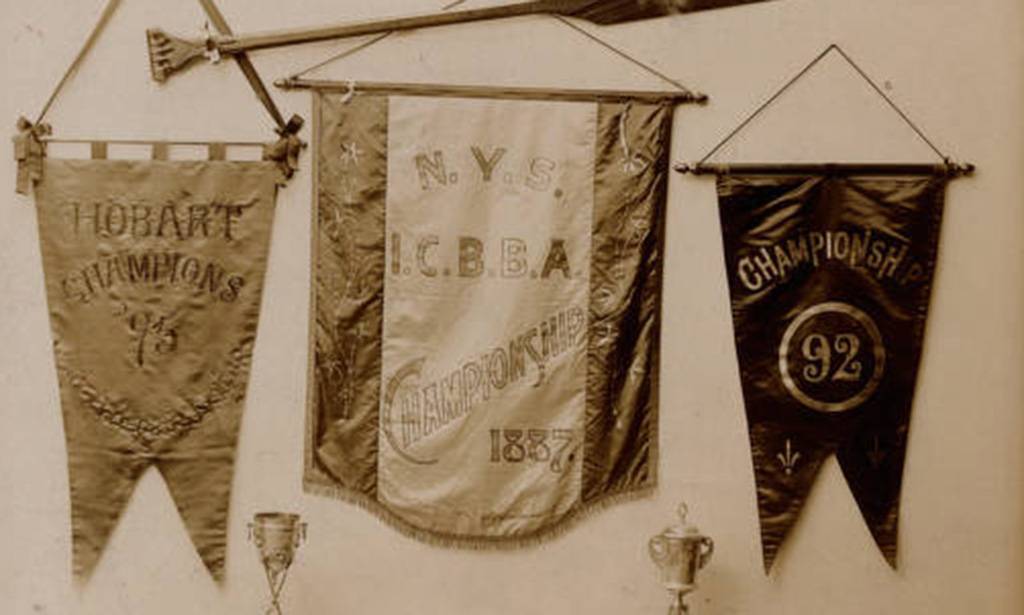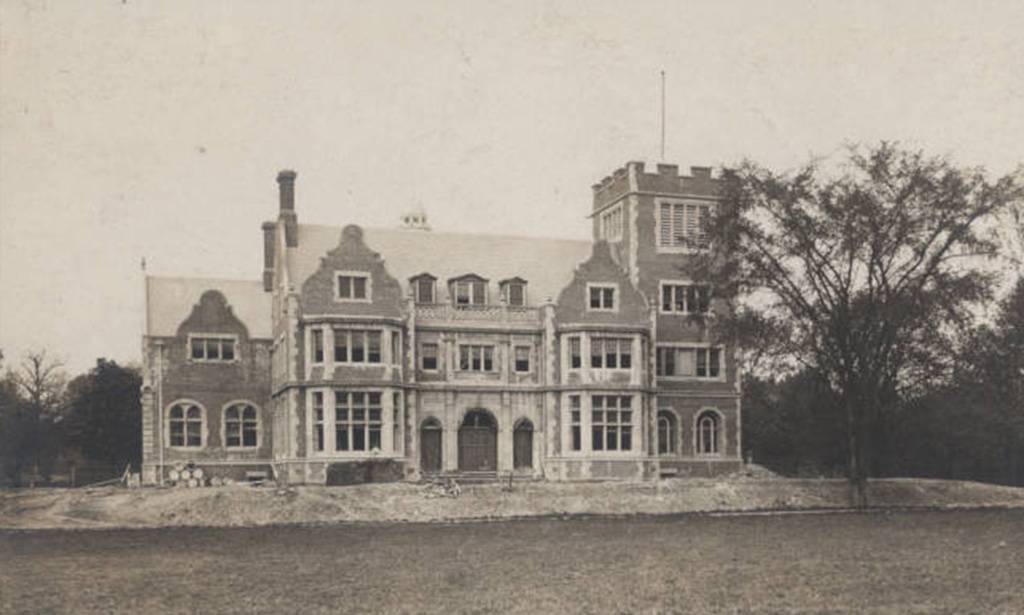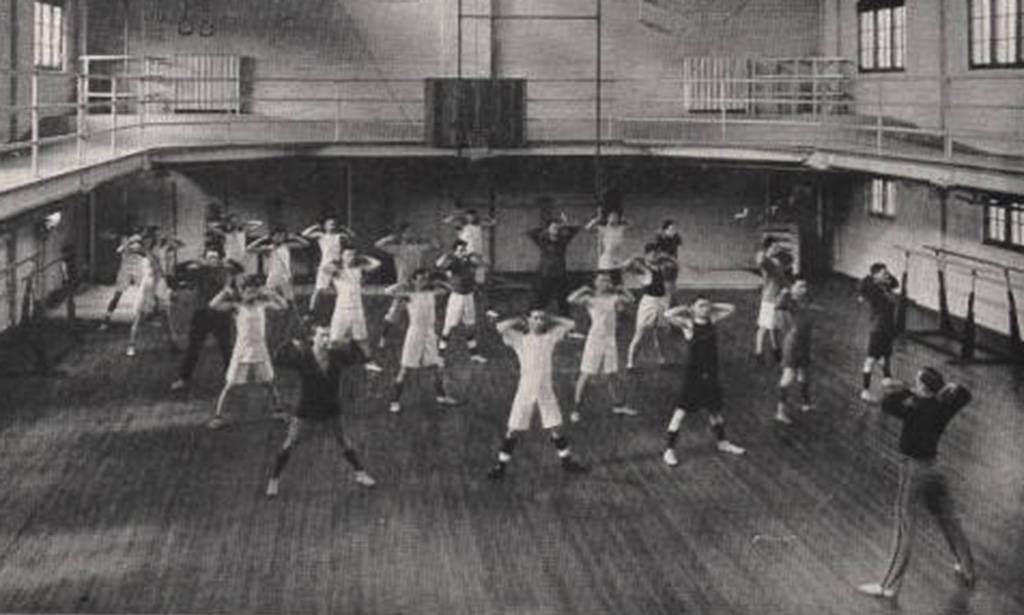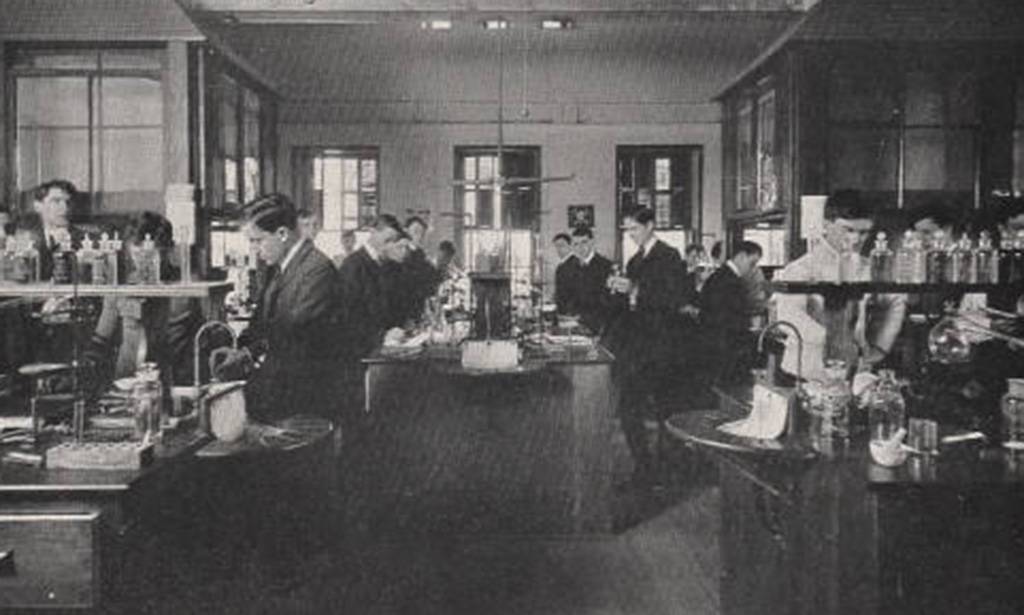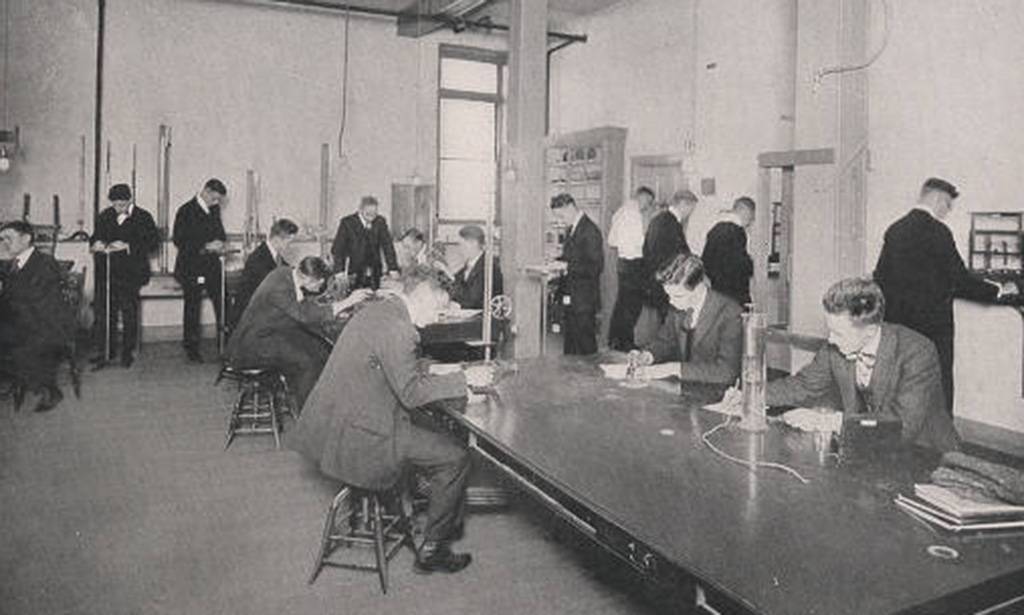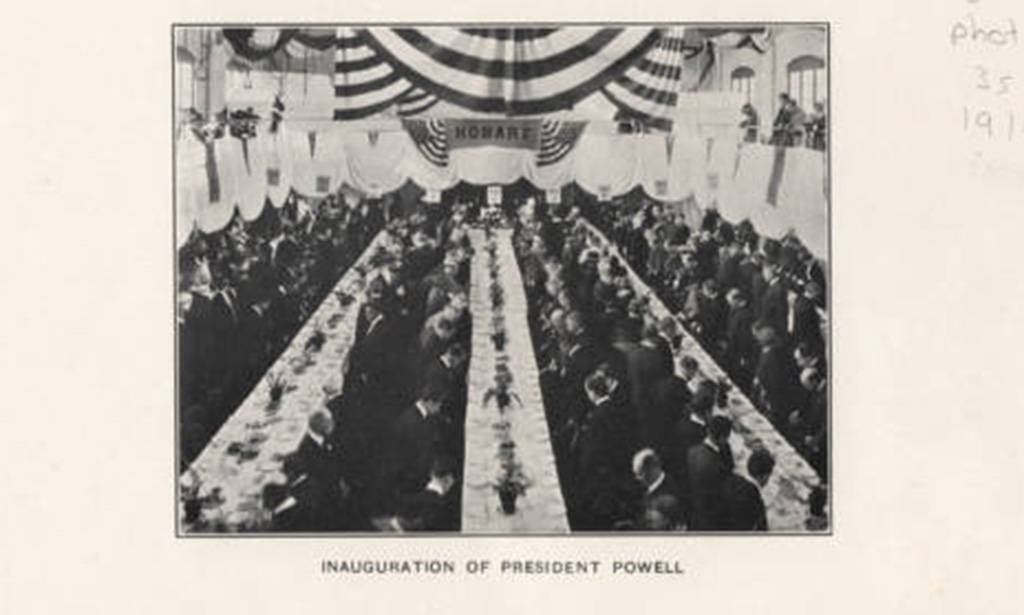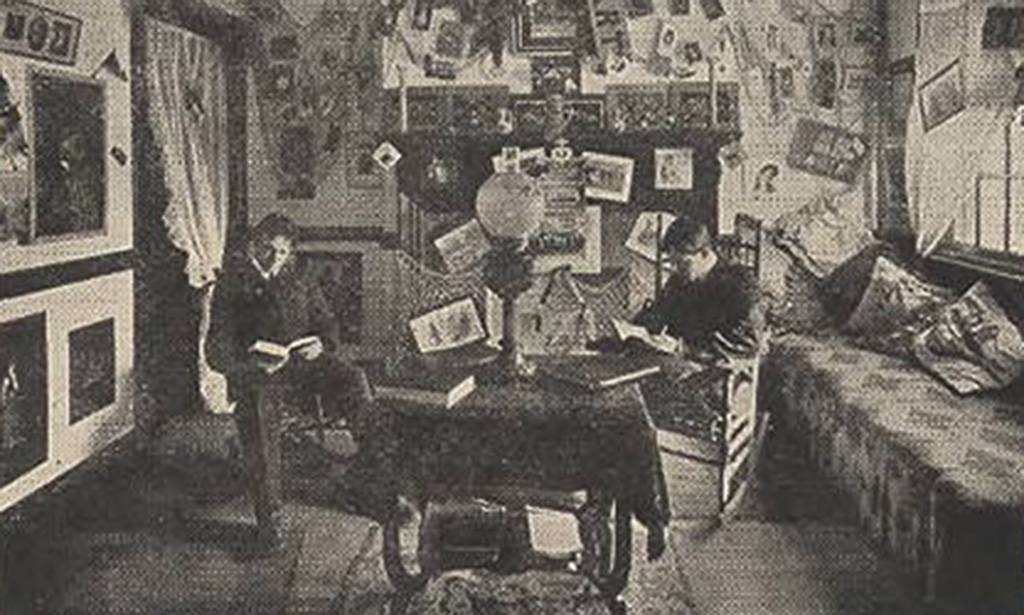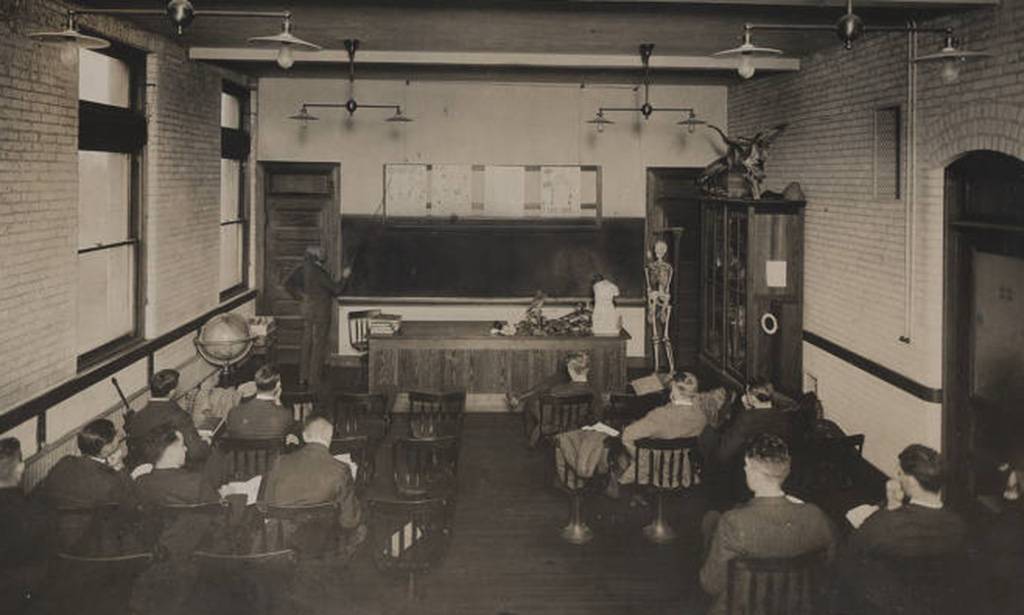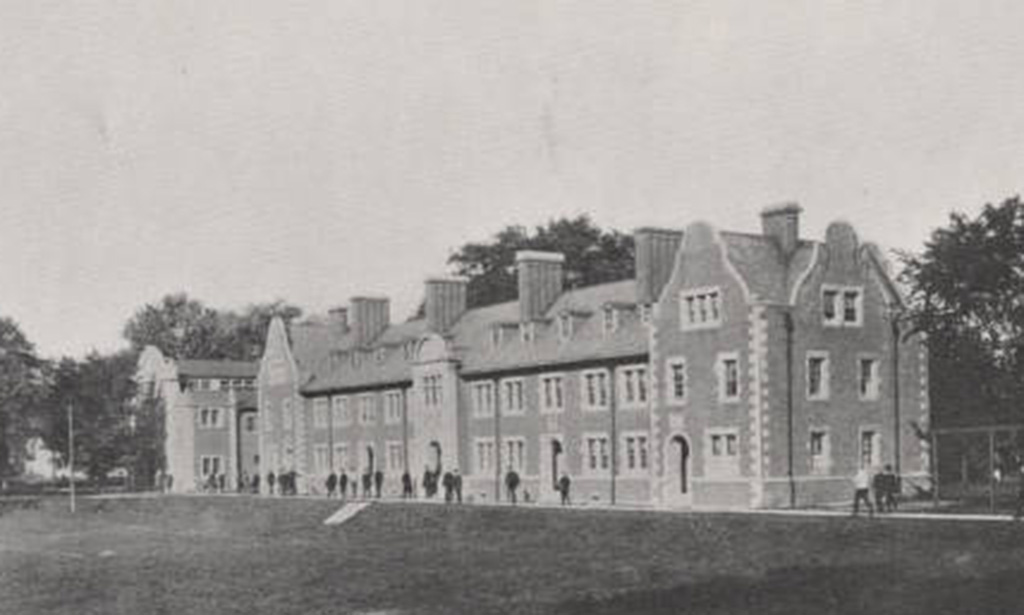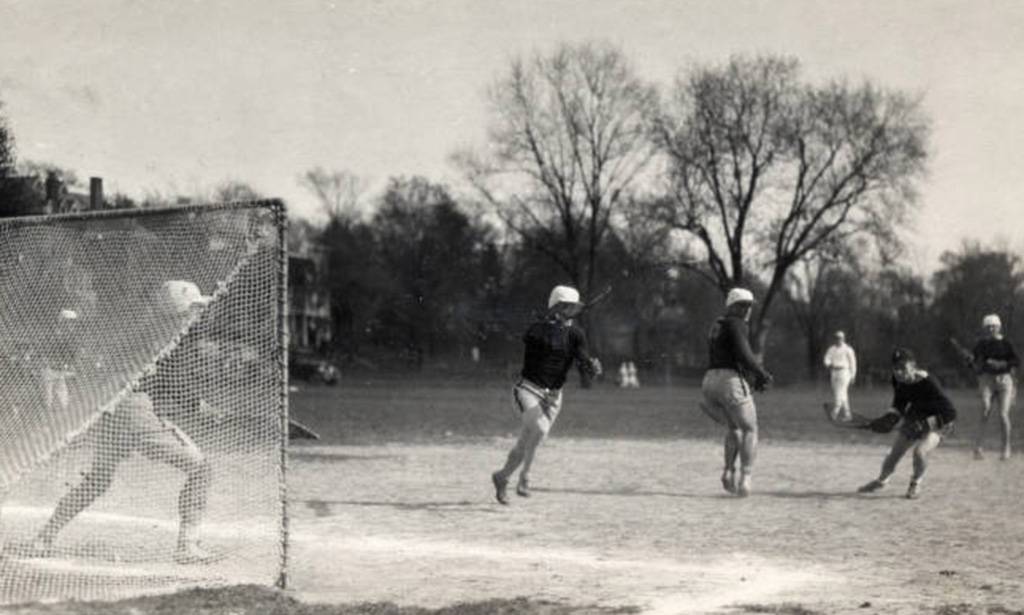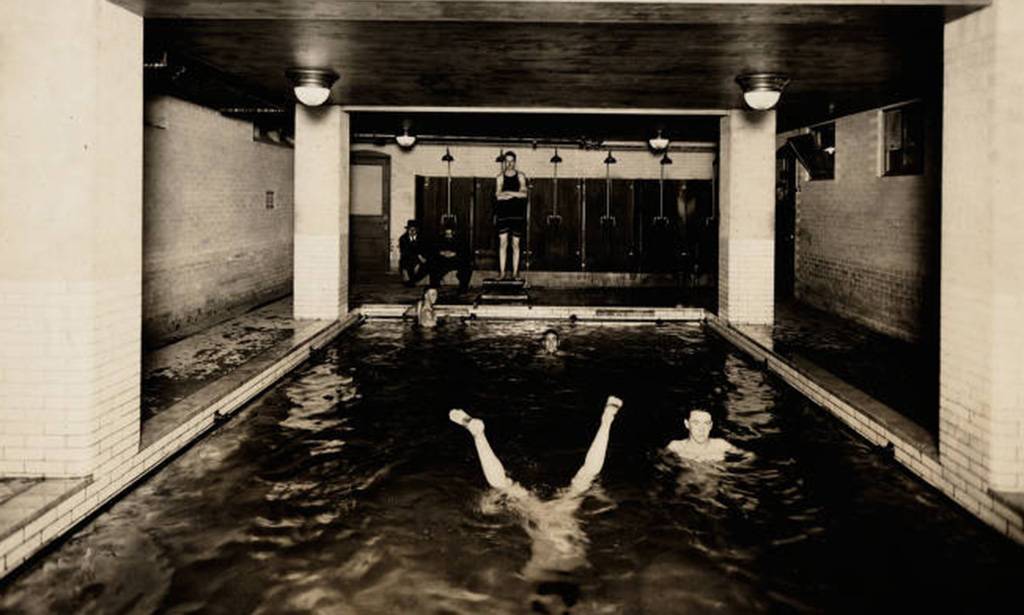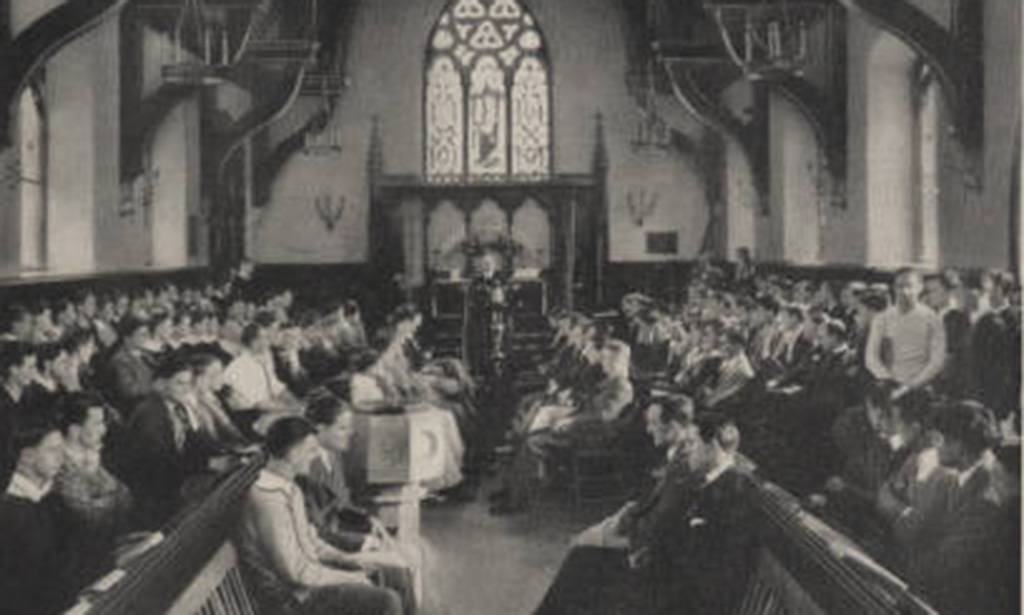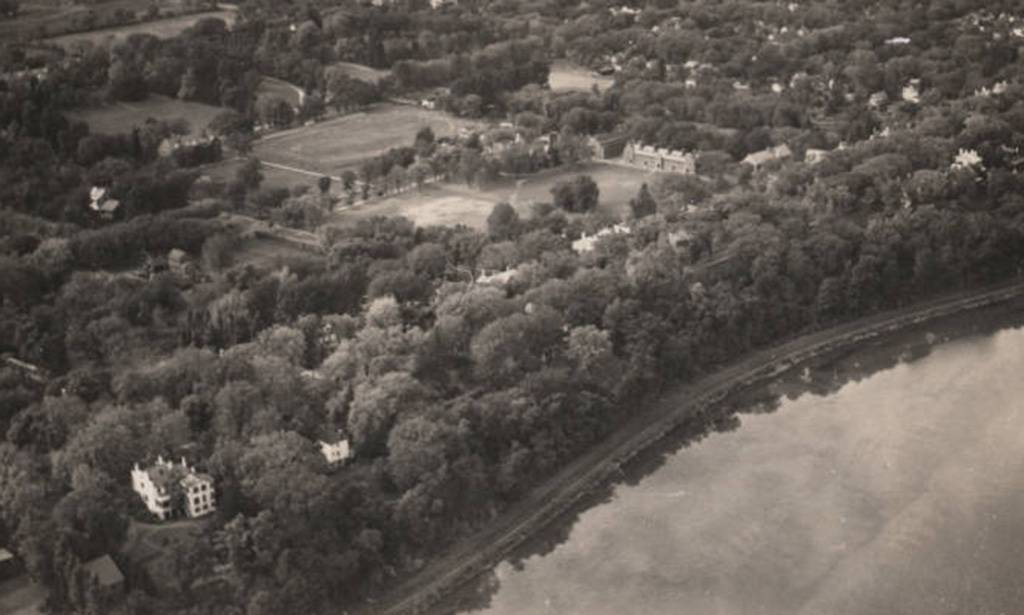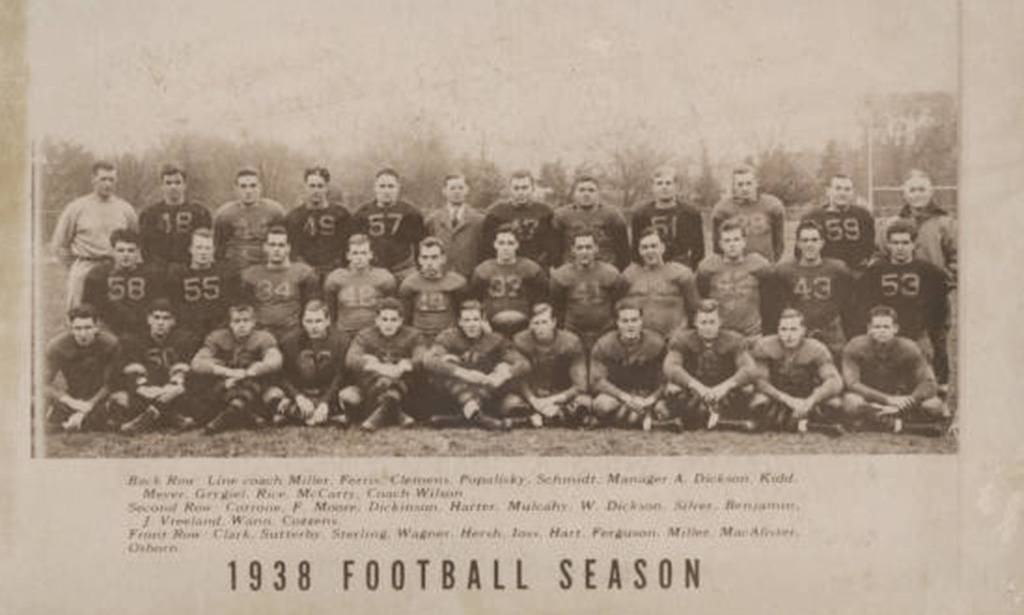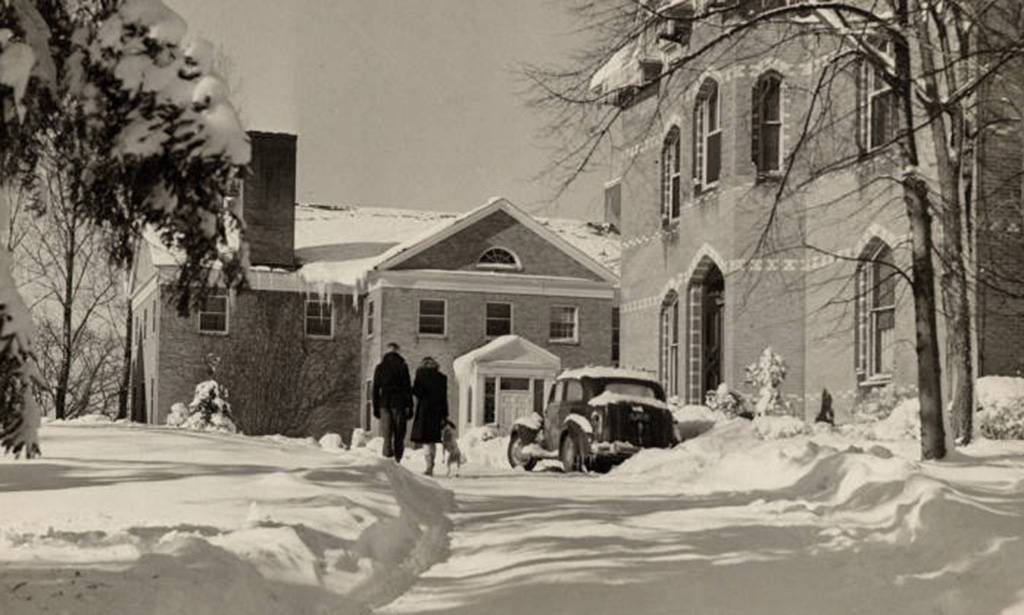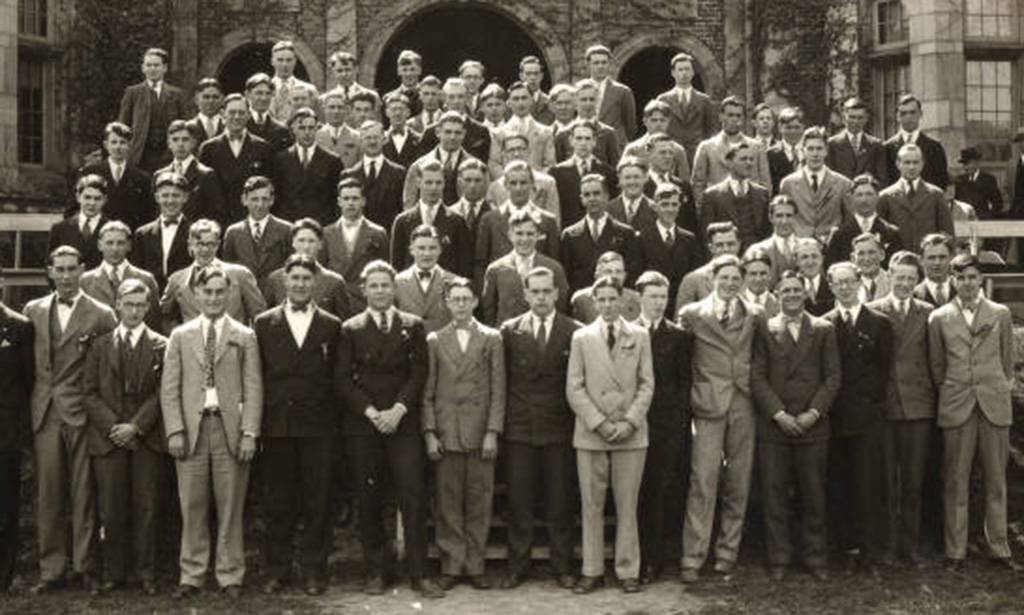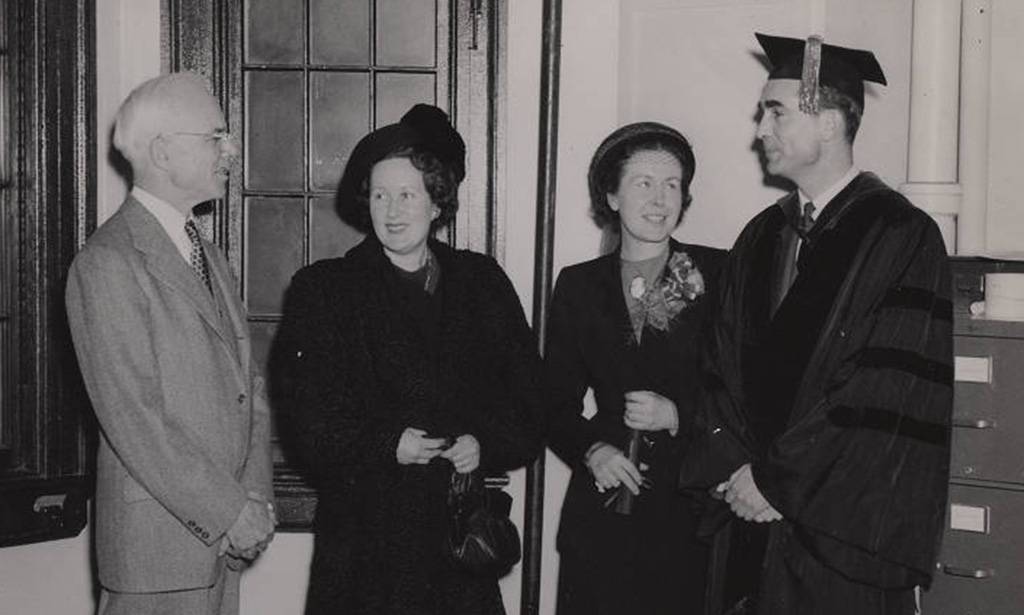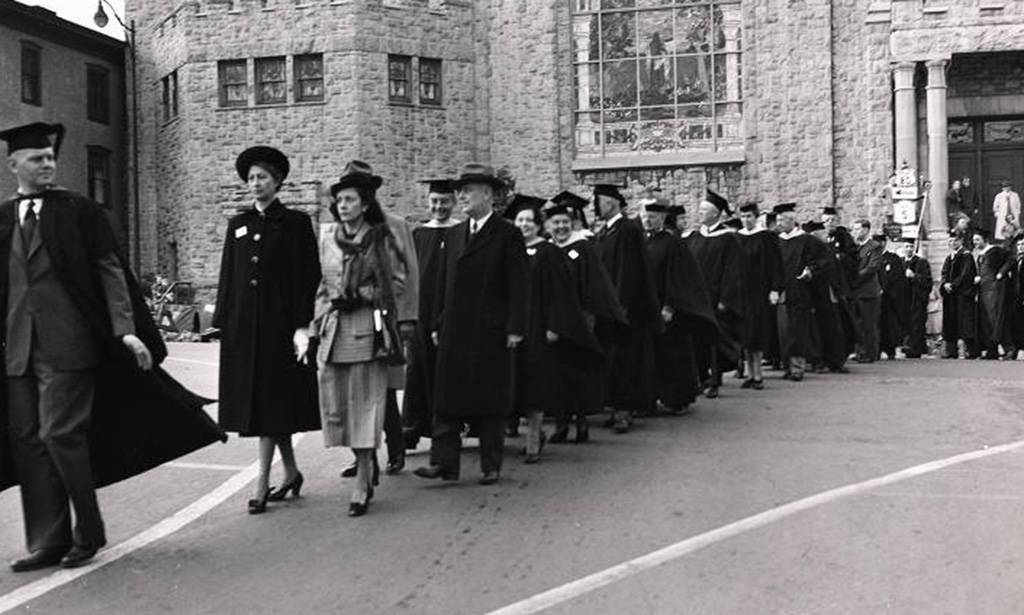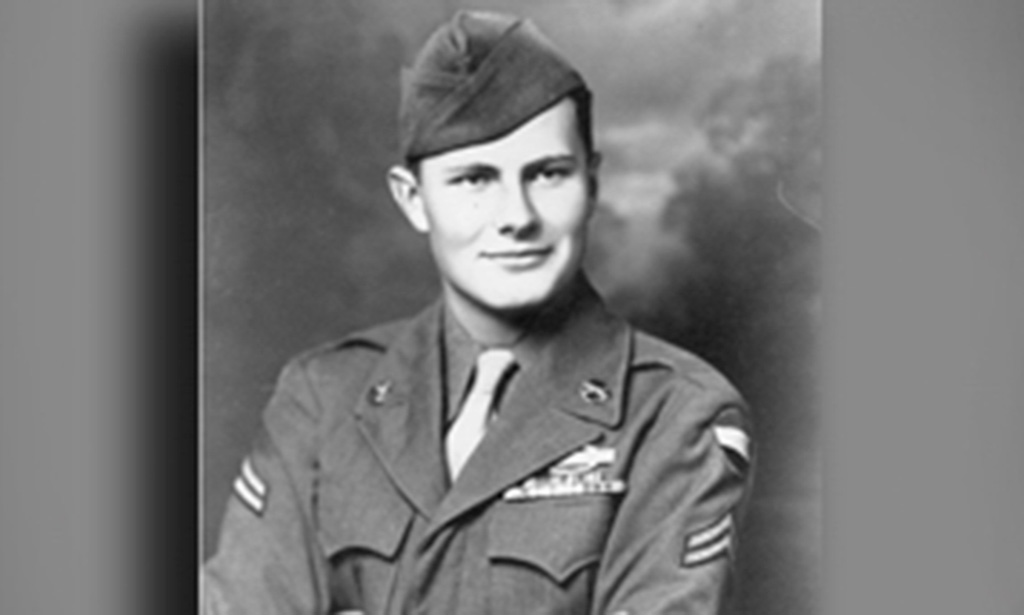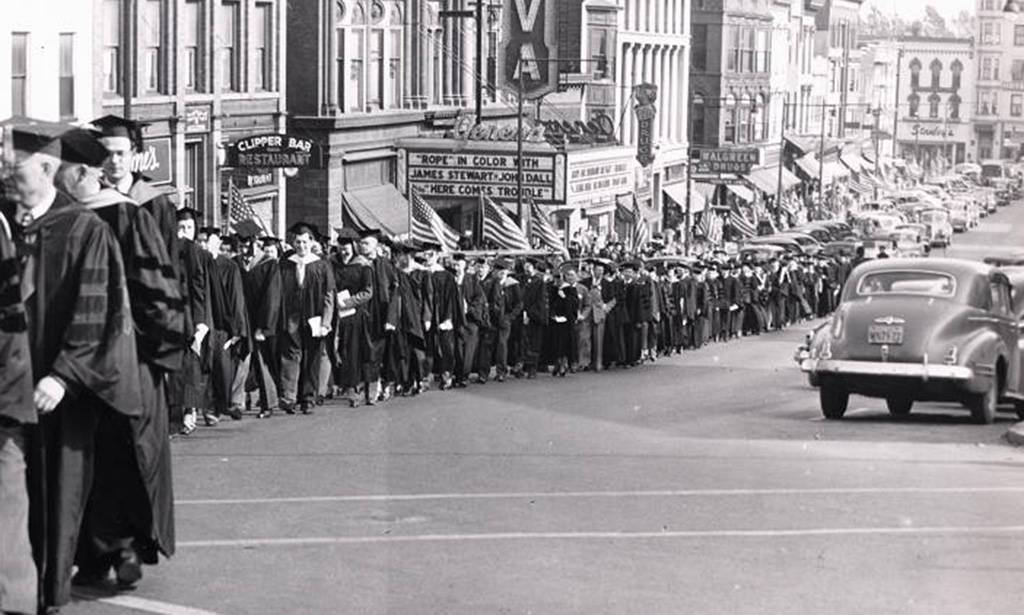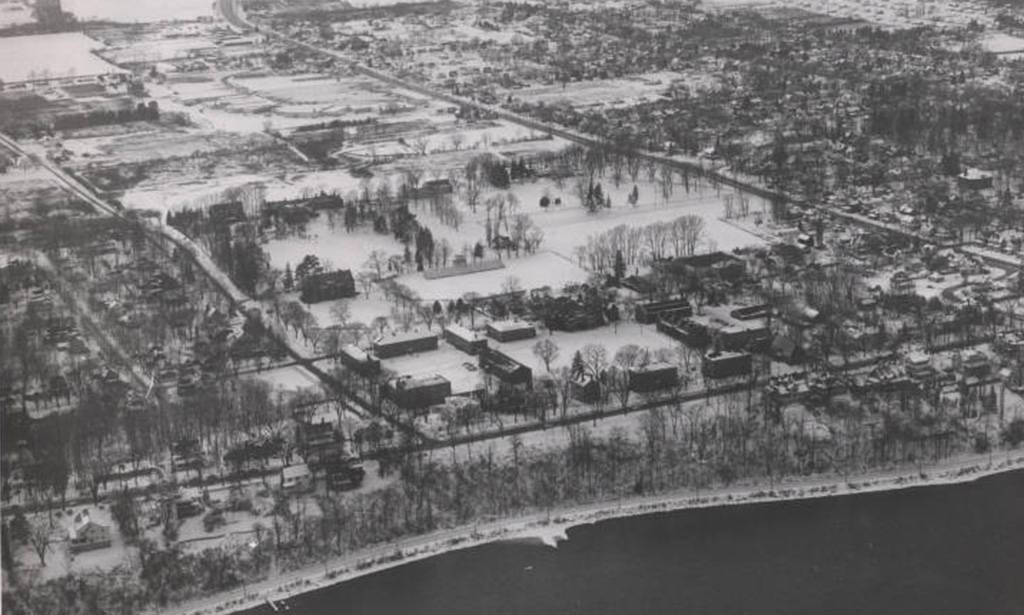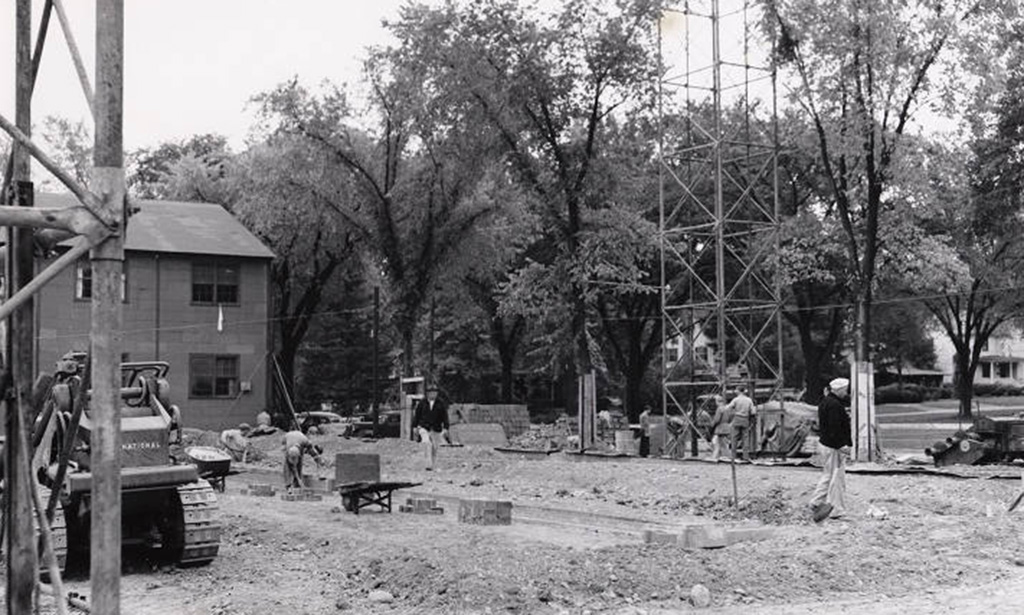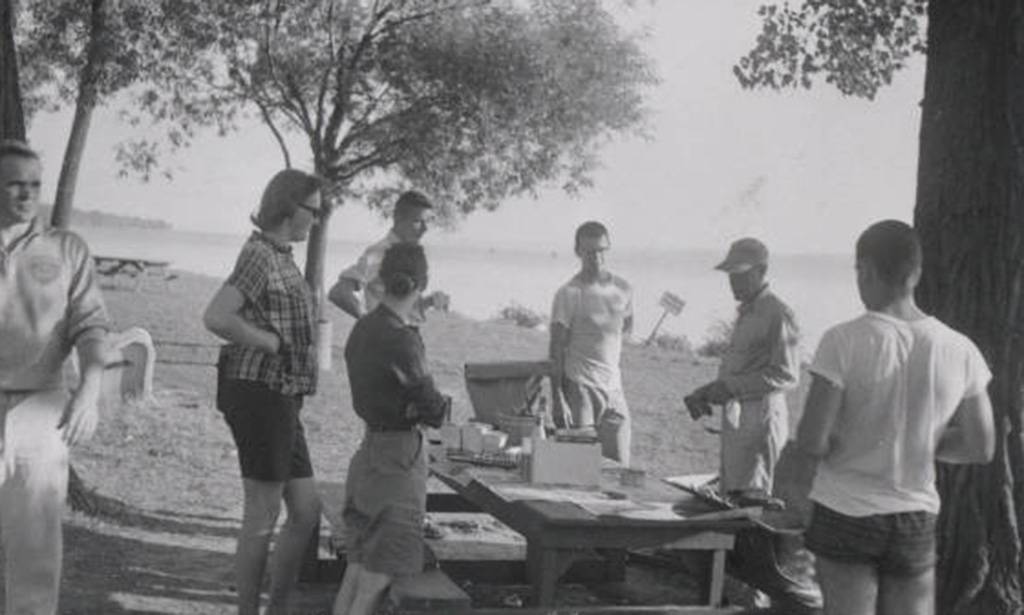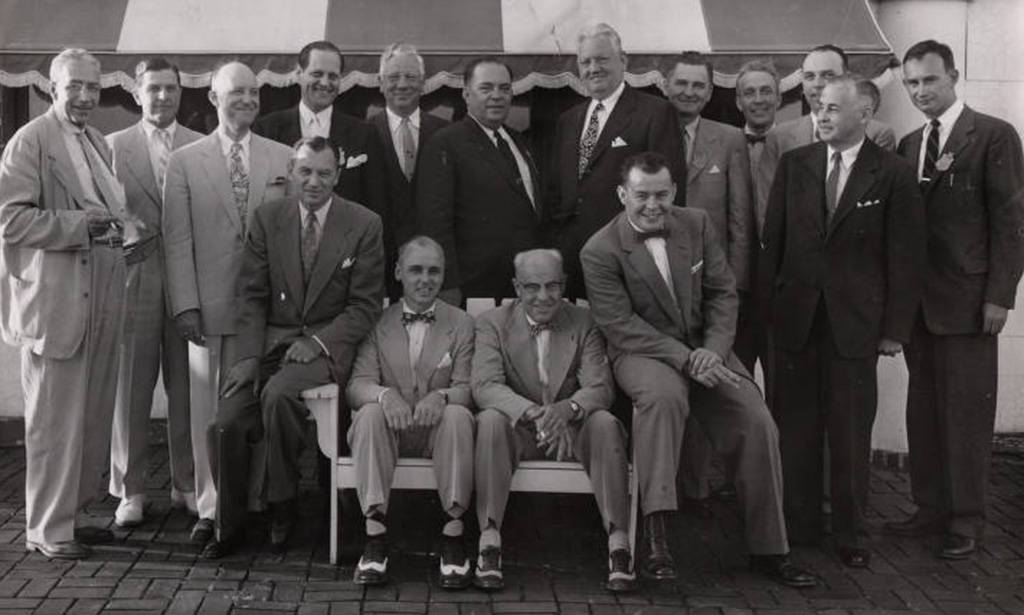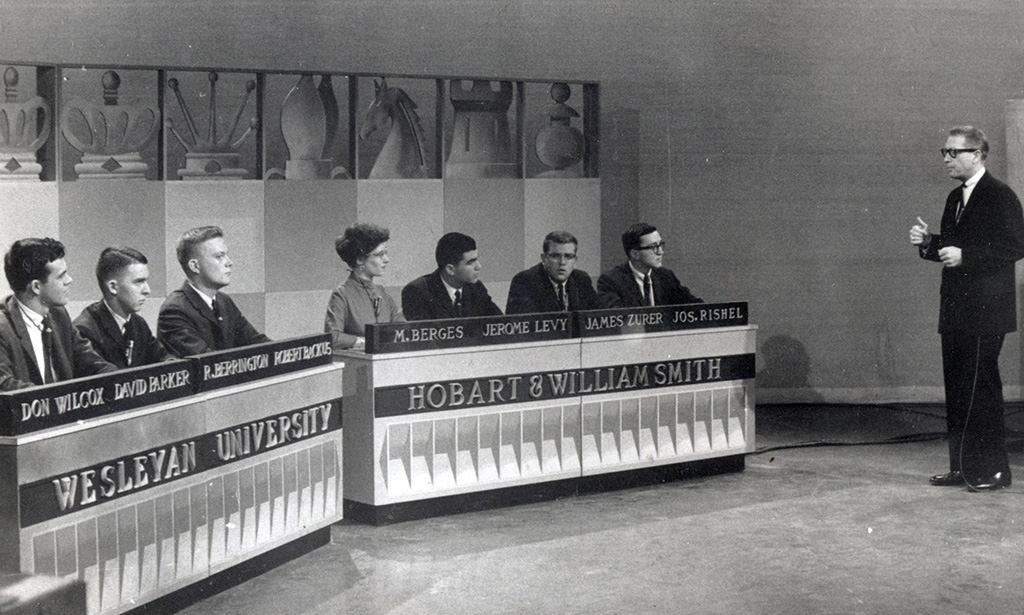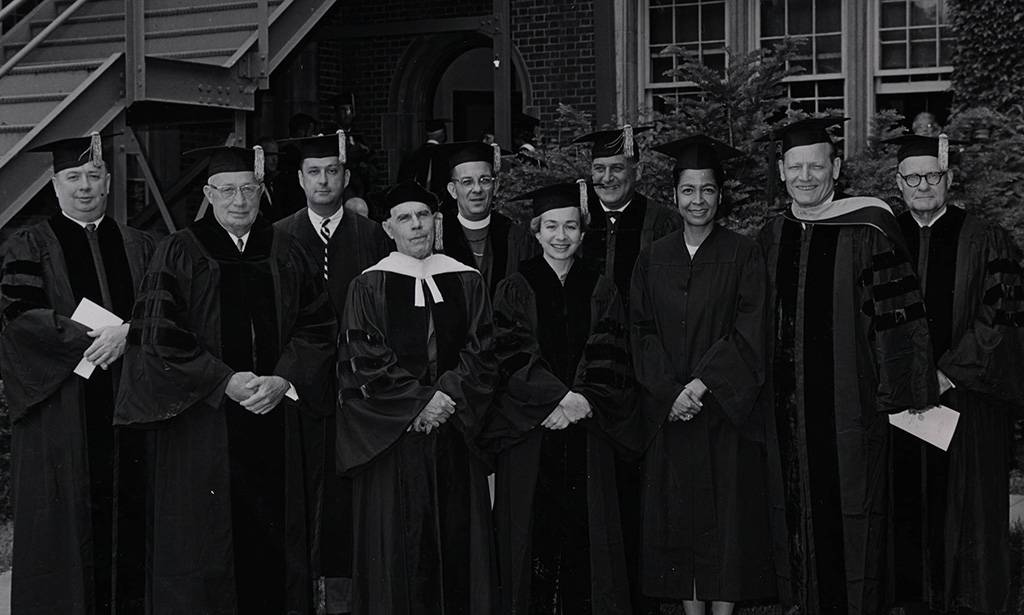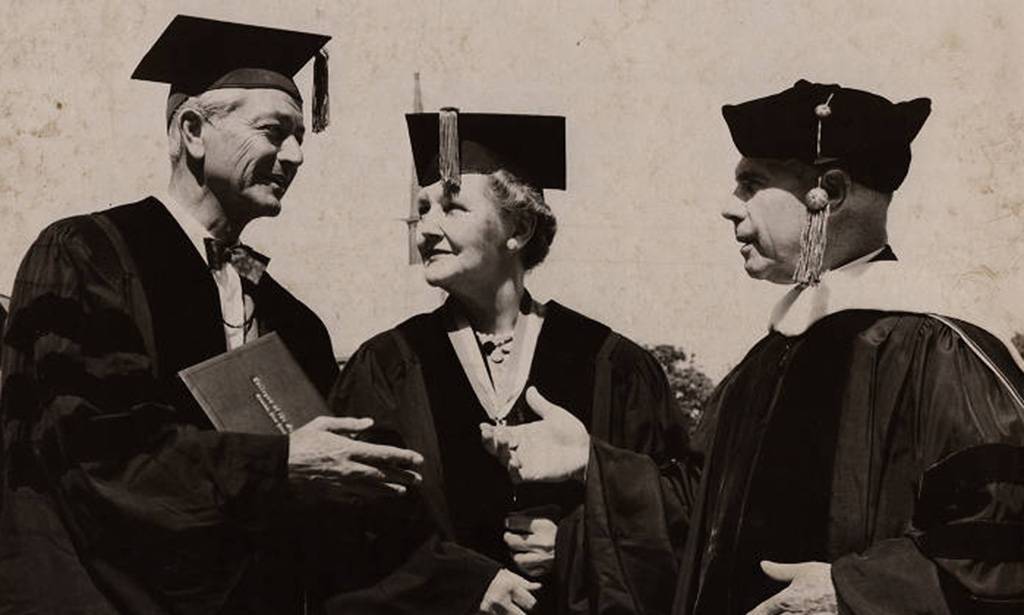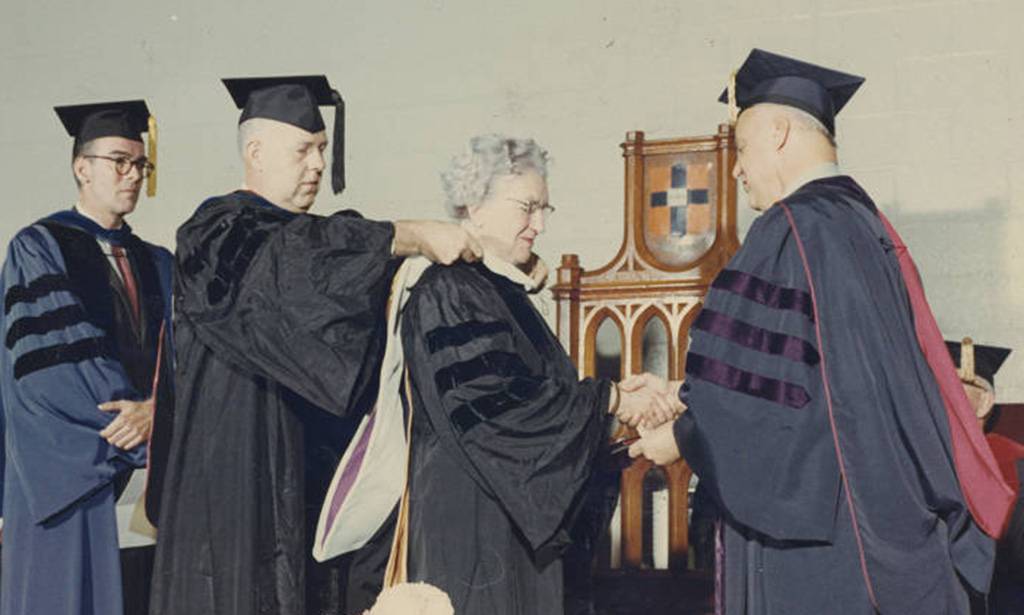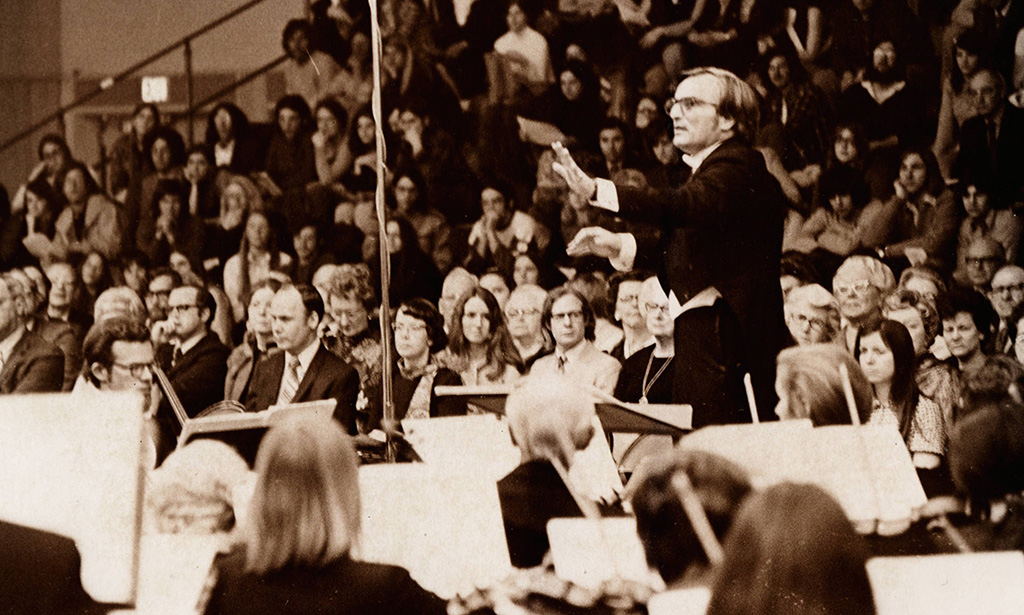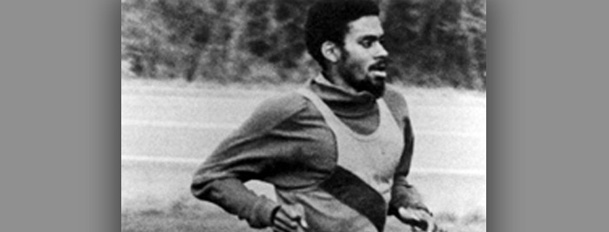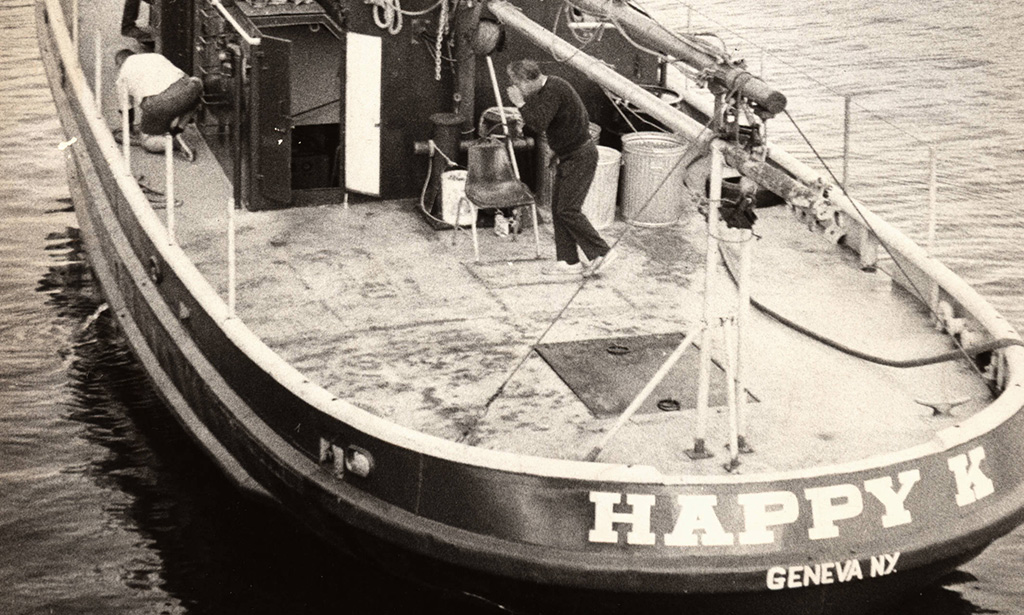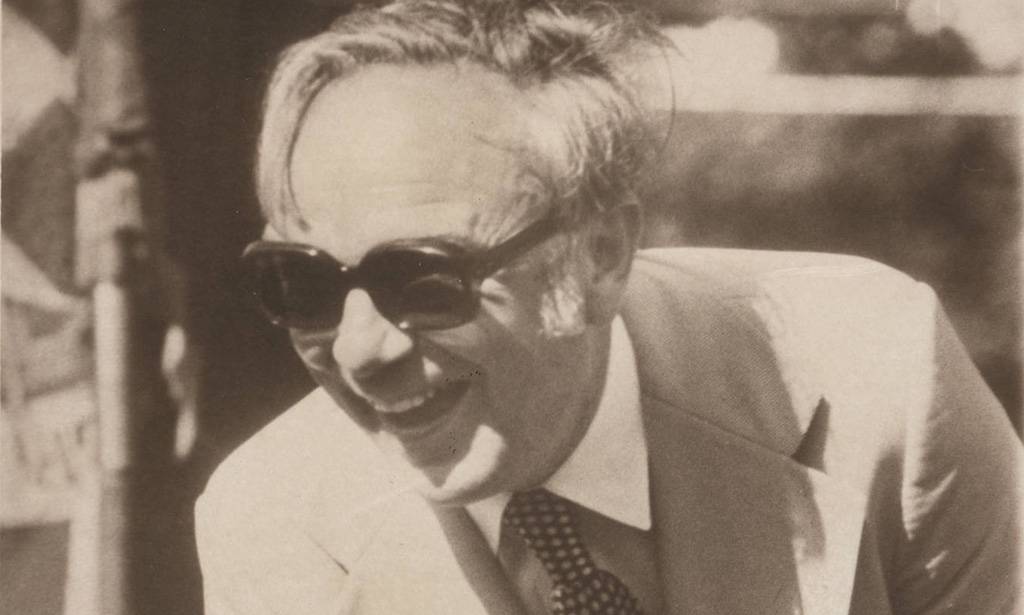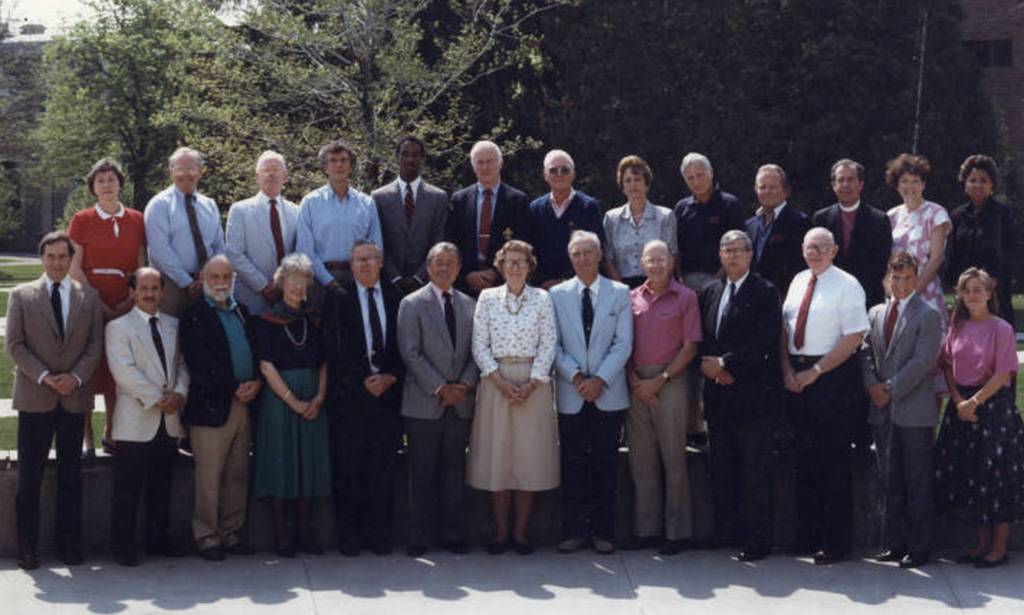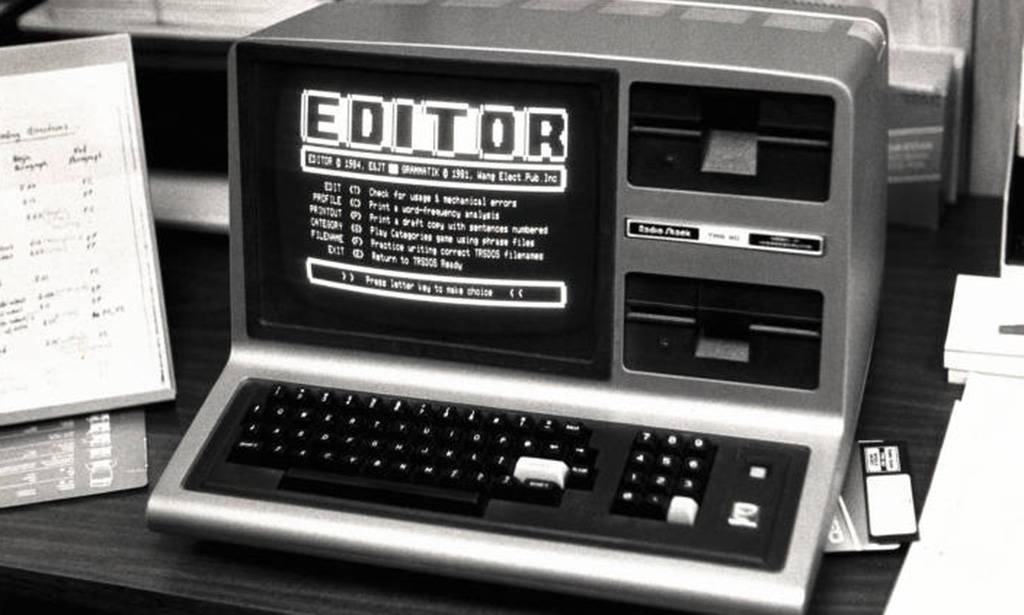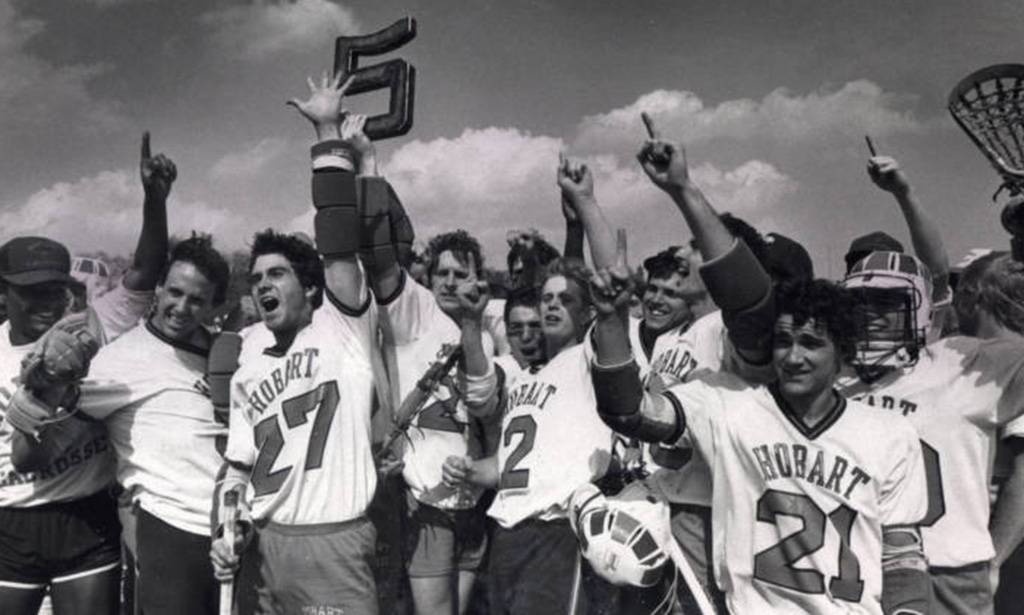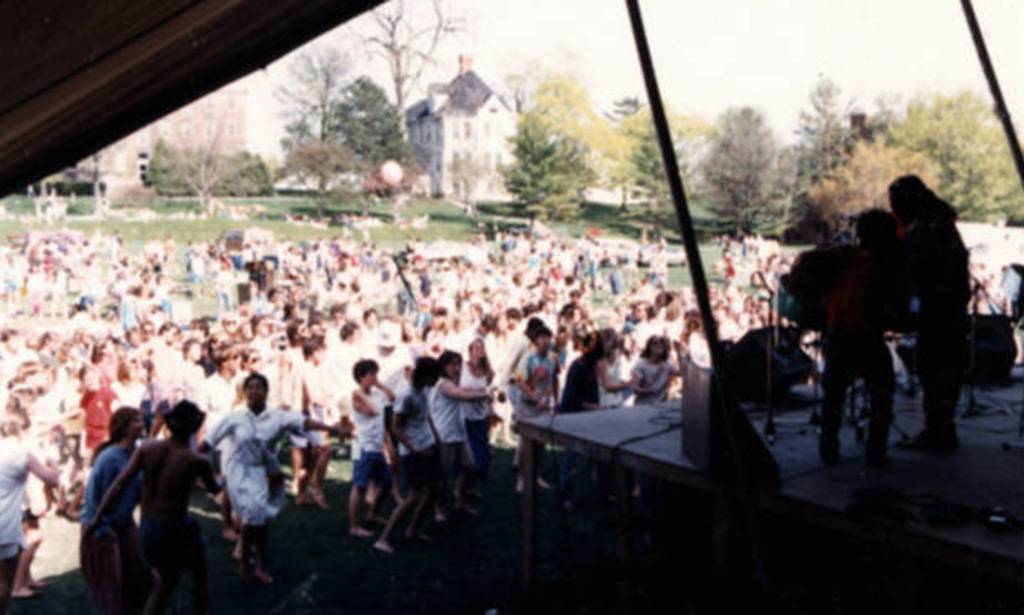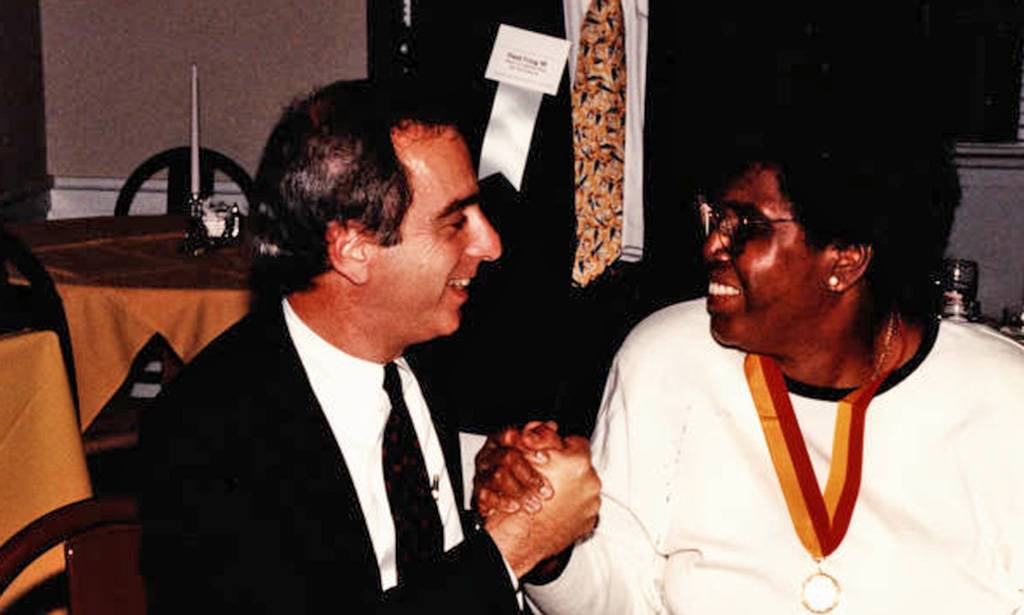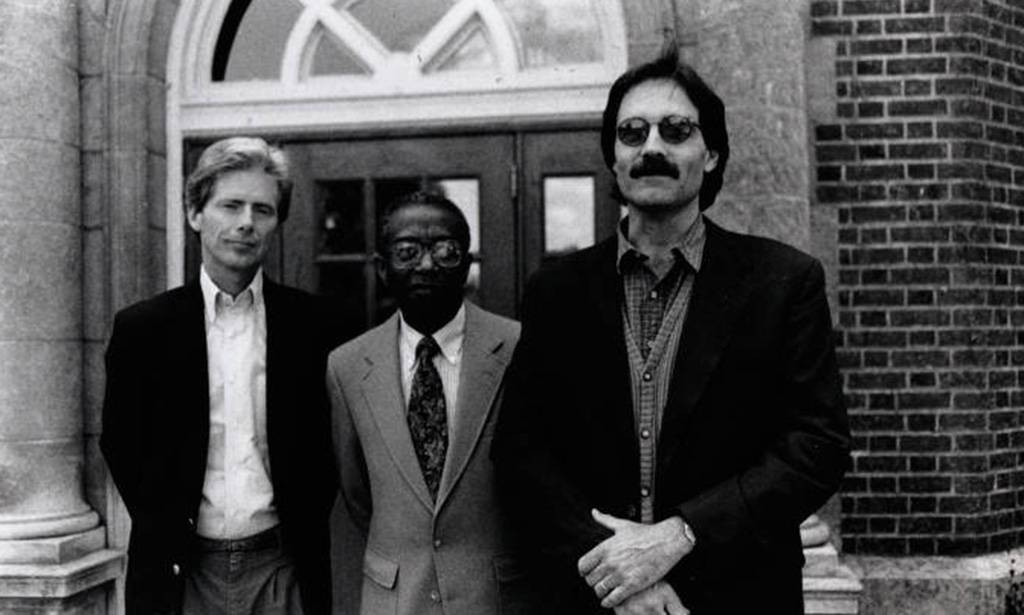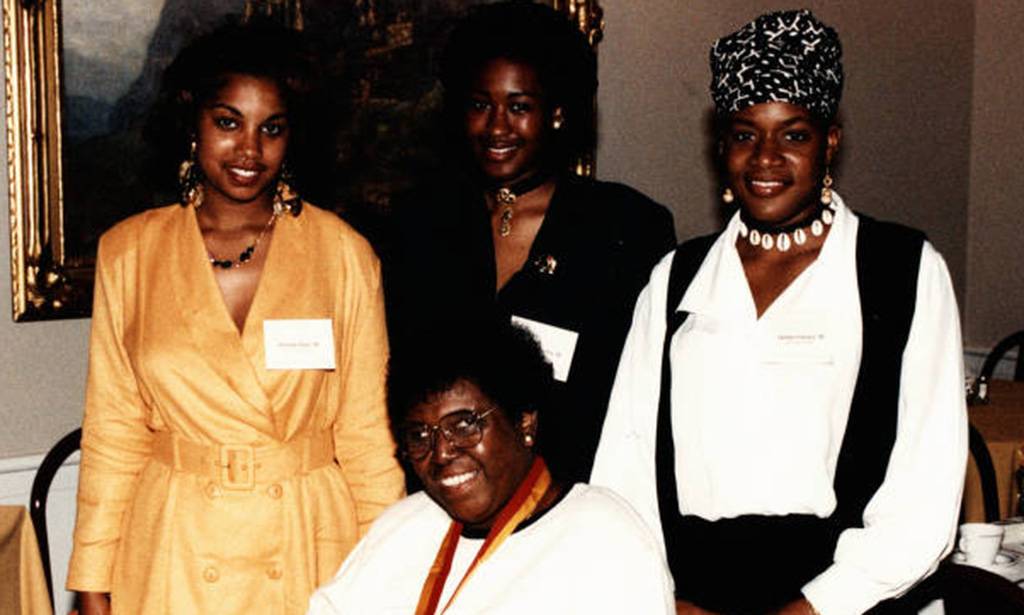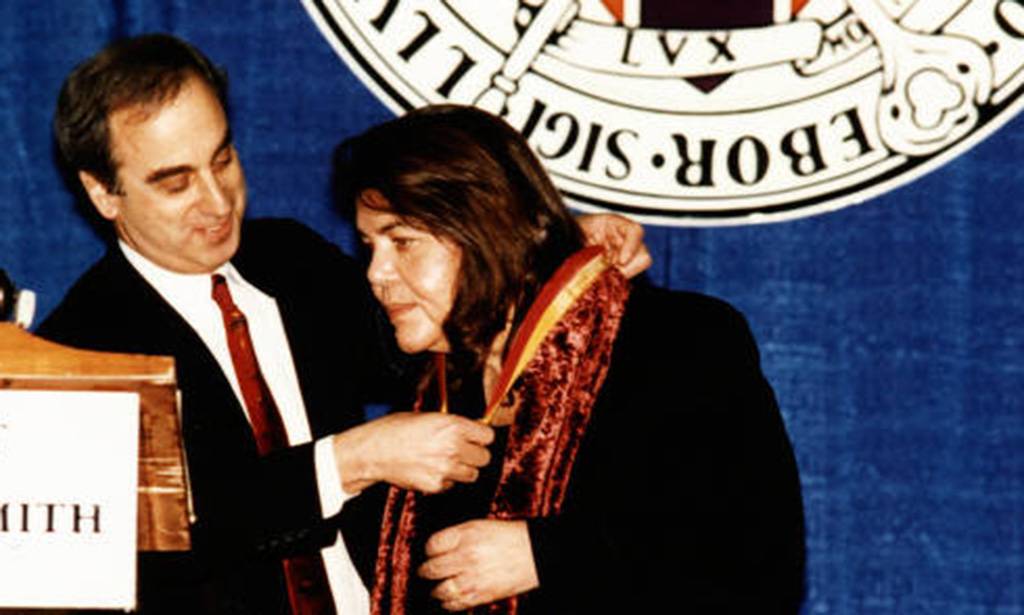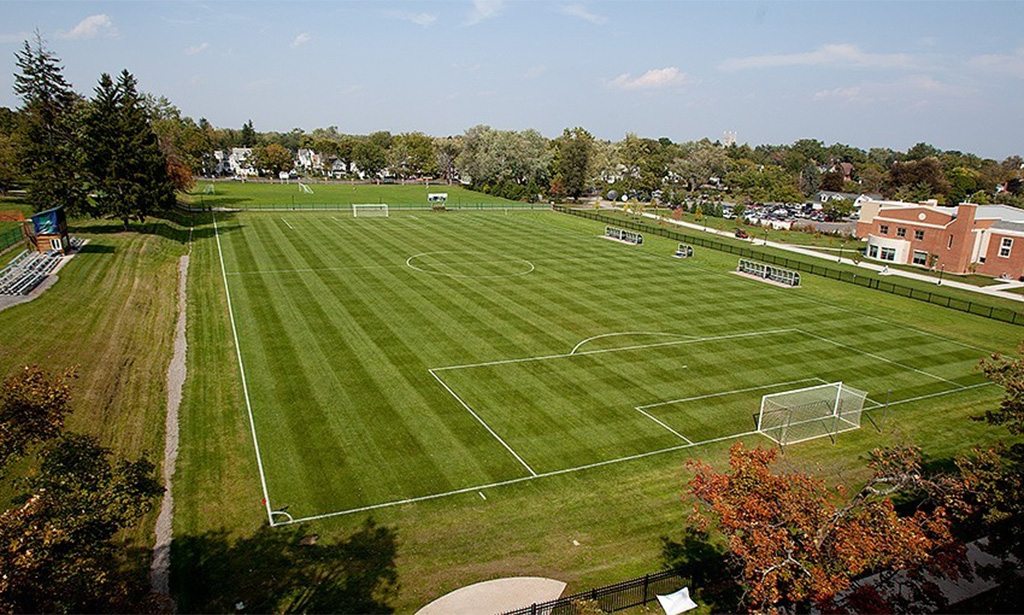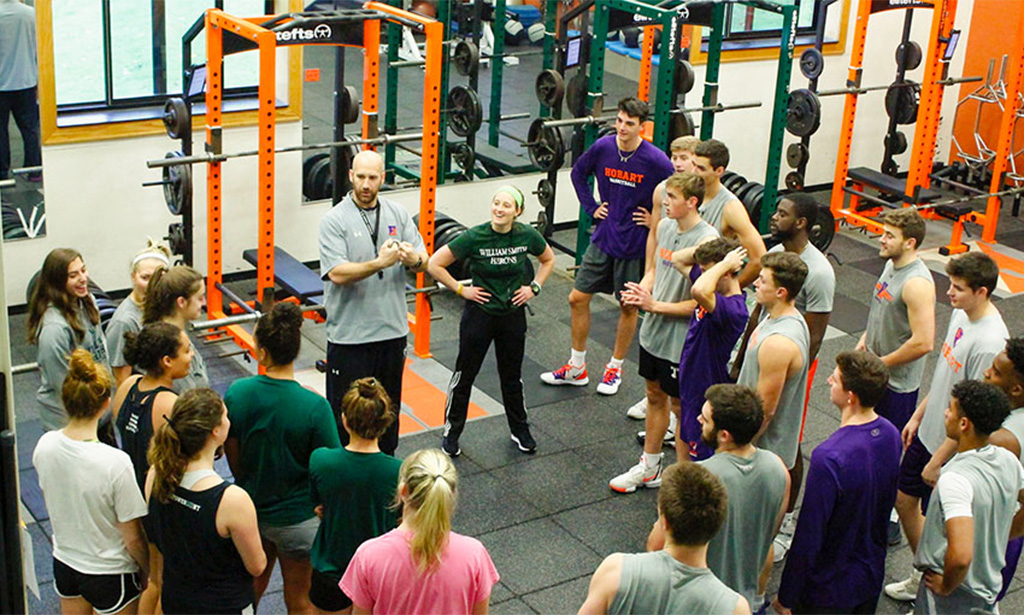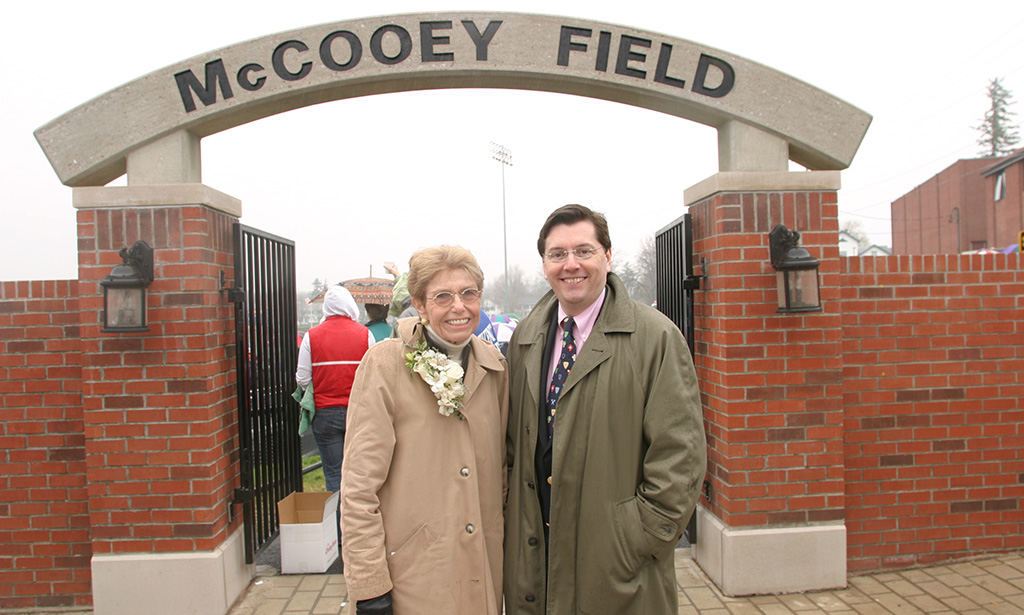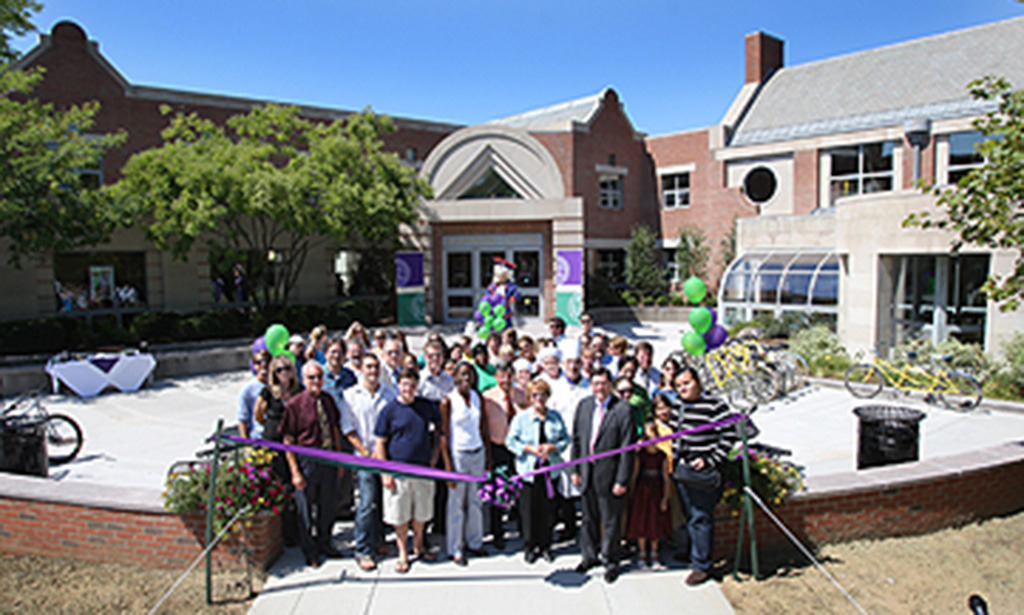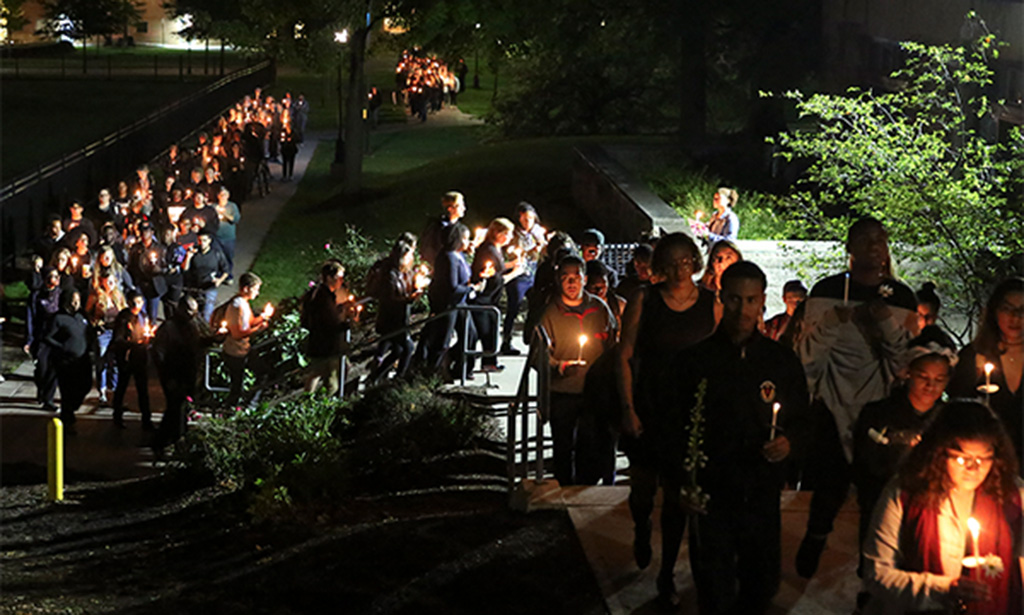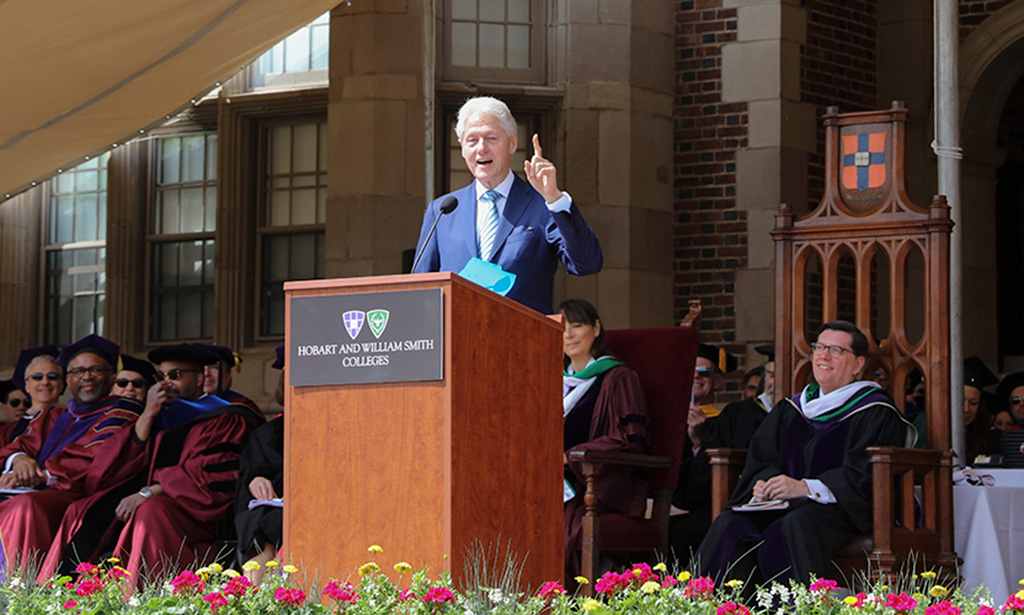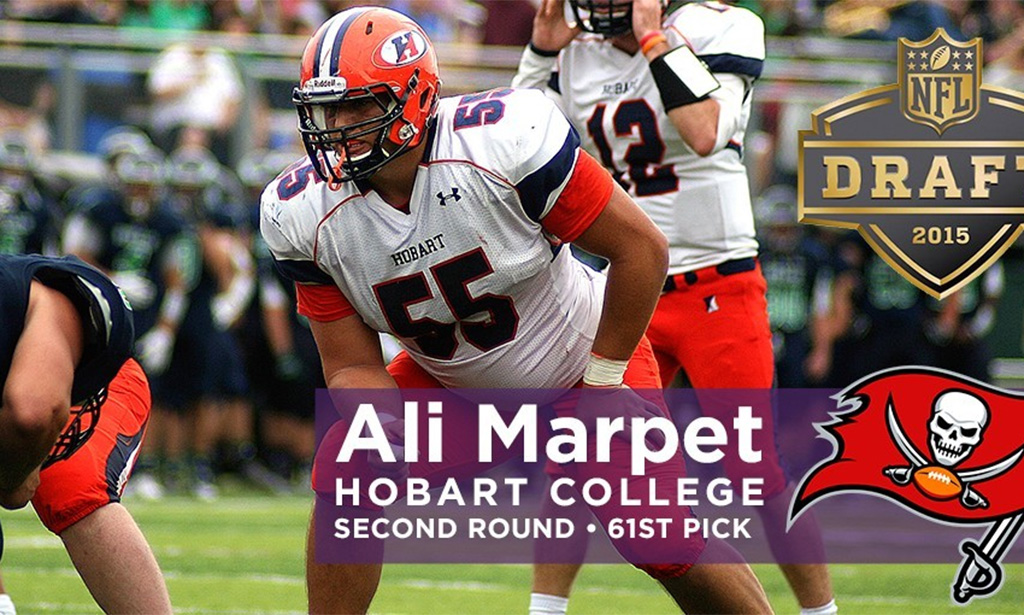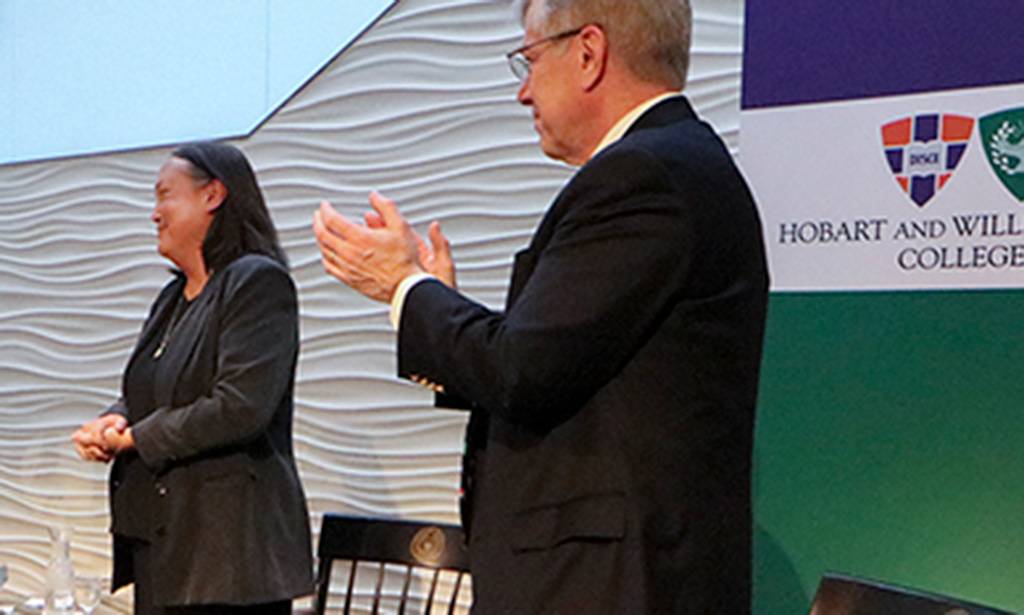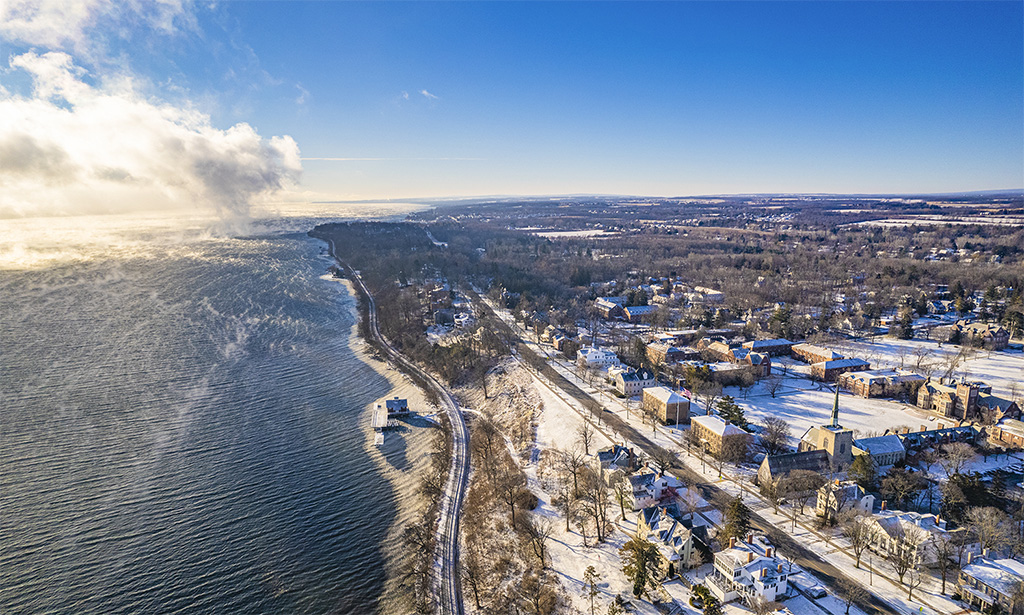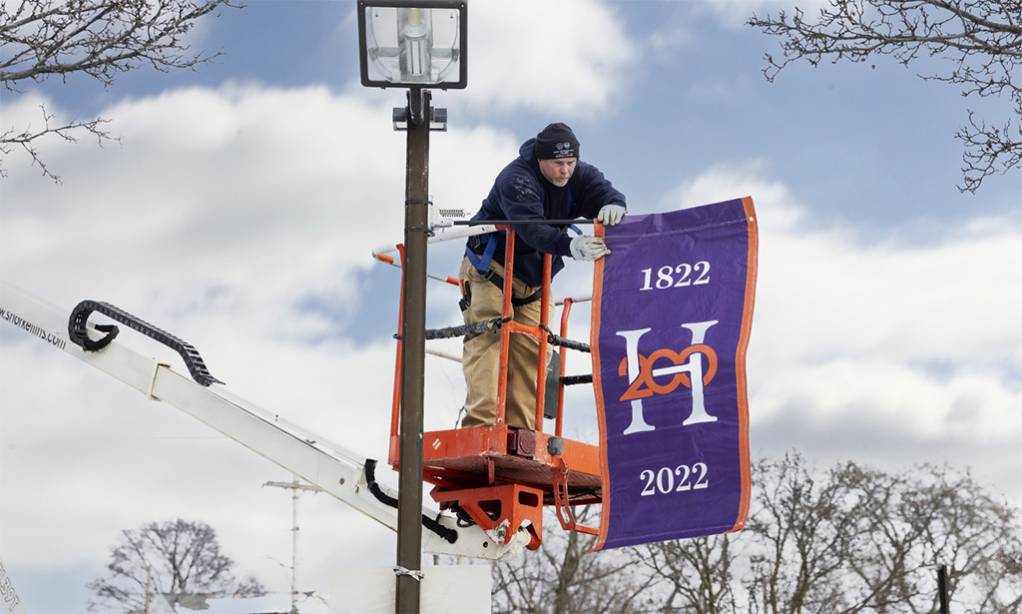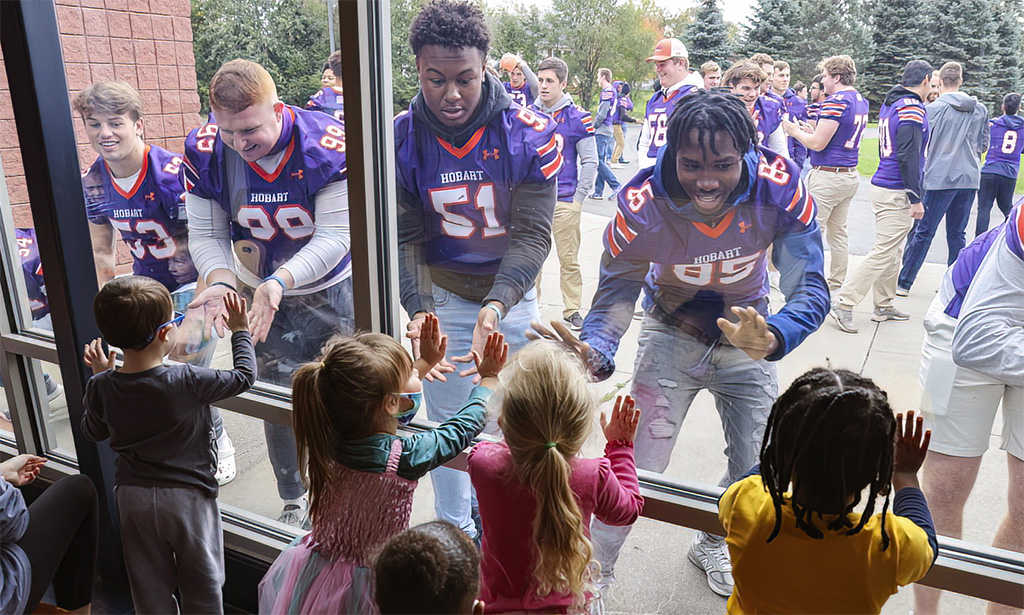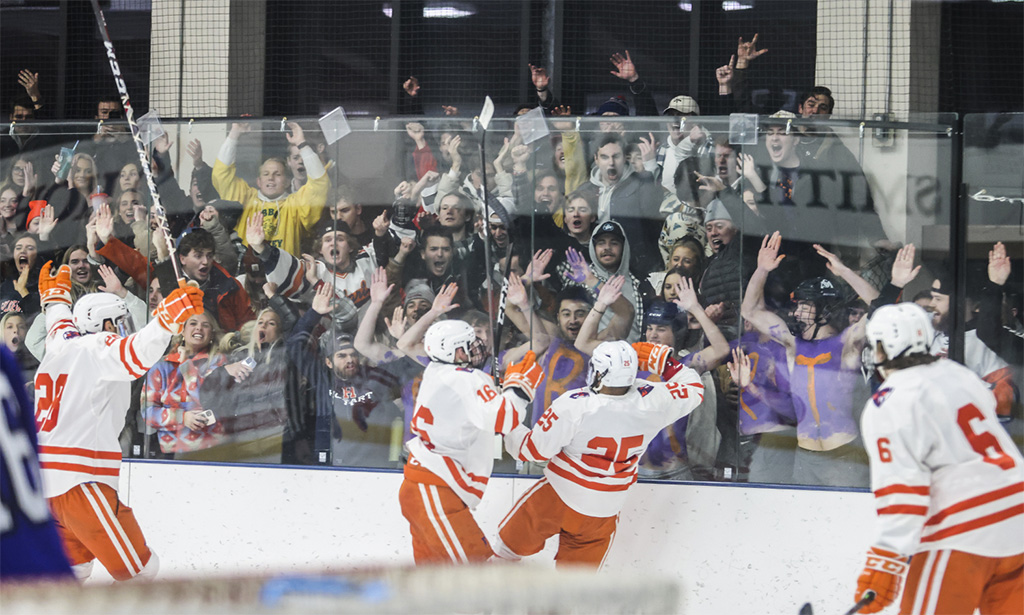
Timeline
A Timeline of Hobart College
In 2022, we celebrated the Bicentennial of Hobart College. It’s nearly impossible to include a definitive timeline of every important moment in our history. If you think there’s an important moment missing, have a photo to share, or if you’d like us to research an event, please email the Office of Communications at publicity@hws.edu.
1790-1799
1794: The Treaty of Canandaigua is signed by the U.S. and the Haudenosaunee Confederacy, creating the boundaries of land recognized as belonging to the Seneca Nation and a promise not to disturb it. Read more about the history of the Seneca people and the land that Hobart and William Smith now occupy.
1798: Geneva Academy is founded through the combined efforts of local Presbyterians and Episcopalians.
1810-1819

Bishop John Henry Hobart
1818: Bishop John Henry Hobart, the third Episcopal Bishop of the State of New York, meets with four Geneva citizens to outline his plans for the establishment of a college. Of the meeting, attendee Thomas Davies Burrall, writes: “Bishop Hobart announced his purpose of building a stronghold for the Church in the West (as he then expressed it), at Geneva…In his quick, decisive manner he proceeded at once to unfold his scheme, and point out the way by which it could be effected.”
1820-1829
1820: At the turn of the decade, Geneva, N.Y., is thriving, boasting 1,700 residents, 250 dwellings, two printing processes, a bank and a land office. Citizens begin to feel the need for education at a higher level than Geneva Academy provides.
1820: By public subscription, Genevans begin to raise the necessary funds to elevate the Academy to the rank of a college. Principal of the Academy Rev. Daniel McDonald and the Rector of Trinity Church Rev. Orin Clark address an appeal to the Rt. Rev. John Henry Hobart: “Such is the charm of a diploma to a youth that he will ever prefer a college to an academy…. A diploma, like an oath in a dispute, cuts off all controversies, and the possessor is admitted by the world as competent, without further examination.”
Sept., 1820: Bishop Hobart chooses the site for the college. Thomas Davies Burrall describes the morning: “just as the first rays of the sun were glancing over the waters of our beautiful lake; a few friends were present by appointment…when on consultation and deliberation on the different opinions of those present, [Hobart] in his brisk and decided manner, struck his cane to the ground, saying, ‘Here, gentlemen, this is the spot for the College’; and on that spot it was placed.”

Geneva Hall
1822: Geneva Hall, the first Hobart building, is constructed. Named for the citizens of Geneva who raised the funds to construct the building, it is the oldest standing academic building in Western New York.
April 10, 1822: New York State Regents grants a provisional charter to Geneva College. This day is now celebrated every spring with the Hobart College tradition of Charter Day.
Aug. 5, 1822: Instruction begins in Geneva Hall.
Feb. 8, 1825: A permanent charter is granted to Geneva College. Read the permanent charter.
1826: Geneva College holds its first commencement; Henry Gregory is considered the first graduate.
Aug. 1, 1827: The first president of Geneva College, Rev. Jasper Adams, is inaugurated at Trinity Church. In a lengthy and detailed address, he discussed the essential parts of “an accomplished education:” ancient literature, mathematics, “skill in both constructing arguments and in detecting sophistical reasoning,” religion, science, government, and physical education.
1829: The first Native American student, Abraham (or Abram) La Fort from the Class of 1829, studied at Geneva College but did not graduate.

Geneva Medical College building on South Main St.
Sept. 12, 1830: Bishop Hobart dies and is buried at Trinity Churchyard in New York City.
1831: Among the charges listed in the College prospectus: tuition, $130.75; fire and lights, $12; washing, $10.25.
1834: Geneva Medical College was founded as a department/subsidiary of Geneva College and existed from 1834-1871. The curriculum consisted of two intensive 16-week terms during which, according to Warren Hunting Smith's The History of Two Colleges, students "attended lectures and watched operations. Animals were dissected..." as were "corpses from Auburn prison...." The medical school issued its last degree in 1872 when it was transferred to Syracuse University.
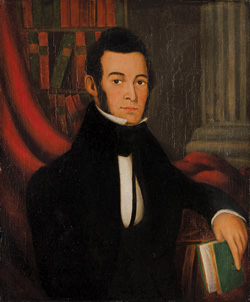
Isaiah George DeGrasse
1836: Benjamin Hale becomes the president of Hobart College and remained in the role until 1858 (and therefore was the longest serving president of Hobart College; President Emeritus Mark D. Gearan L.H.D. '17, P'21 is the longest serving president of Hobart and William Smith Colleges). As president, Hale was able to guide the College through near bankruptcy, build up the faculty, add to the library and improve the buildings.
1836: Isaiah George DeGrasse is the first African American student to matriculate at Geneva Medical College.
1840: Sigma Phi and Alpha Delta Phi become the first Greek letter fraternities at Geneva College.
Sept. 25, 1841: Foreshadowing the coming Civil War, the College Senate holds a debate on the topic “Resolved that the United States of America be divided into two independent governments and that Mason and Dixon’s line be the division between the same.”
1842: Philip Spencer, a former student at Geneva College, is executed aboard the U.S.S. Somers after reportedly making an off-hand remark about seizing the ship. His life inspired Herman Melville’s posthumously published Billy Budd. Read more about Spencer and the connection to Melville.
1844: Hobart’s oldest active fraternity, the Kappa Alpha Society, is chartered as the third chapter of the nation.

Peter Wilson, 1844
1844: Peter Wilson, a member of the Cayuga Nation, is the First Native American graduate of Geneva Medical College. He went on to practice medicine, served as an interpreter and was a noted orator. Read more about Wilson.
August 1847: At commencement, the Board of Trustees hears dismal financial news. The College treasurer reports faculty are due $6,000 in salary with only $1,400 in guaranteed income for the coming year. The state, which previously allocated $3,000, has no plans to allocate funds for the coming year. Consequently, a Board of Trustees committee recommends the College retain four officers: the president, one professor, and two tutors. The president’s salary is reduced from $1,500 to $1,000; the professor will make $800 instead of $1,000, and the tutors’ salary will remain at $400. Total: $2,600.
Jan. 23, 1849: Elizabeth Blackwell graduates at the top of her class from Geneva Medical College, becoming the first woman in America to receive a medical degree.
1850: Millard Fillmore, 13th President of the United States, receives an honorary degree from Geneva College. On a tour of Europe five years later, Fillmore declined an honorary doctorate from the University of Oxford because he “had not the advantage of a classical education” and, as the diploma was issued in Latin, believed that “no man should … accept a degree he cannot read.” (The 1850 honorary degree from Geneva College was inscribed in Latin.)
Nov. 18, 1851: Hobart celebrates (with the illumination of all buildings) the Vestry of Trinity Church donation of $3,000 a year in perpetuity. The gift comes with one condition: the College will assume the name Hobart Free College and give free instruction and the free use of rooms to all students, although that practice lasted only a few years.
April 10, 1852: Geneva College is renamed Hobart Free College in honor of Bishop Hobart.
1858: The 22-year presidency of Benjamin Hale ends. Under Hale the faculty and library grew significantly, a variety of capital improvements took place, and the financial situation of the young institution improved dramatically. At a time in American higher education when a great many institutions were forced to close their doors for extended periods, Hale managed to keep the College running.
1858: The first issue of the Hobart College yearbook, The Echo of the Seneca, is released. The 1859 version of The Echo of the Seneca is the first publication to include the legend of Agayentah, the source of the yearbook’s name as well as the name of the campus radio station (WEOS – Echo of the Seneca) and the Hobart oar. As part of the Hobart Bicentennial and through a donation from Trustee Dr. Richard L. Wasserman ’70, Vice President for Diversity, Equity and Inclusion Khuram Hussain is working with students to better understand and articulate the history and to create new traditions around the oar. Read a digitized version of the 1859 Echo.
March 27, 1860: The college is renamed Hobart College.
1860: Organized sports make their first appearance on campus with the introduction of a Hobart baseball team. The first several seasons consist mostly of games played against local city teams. The popularity of the sport quickly leads to intercollegiate competition. Hobart’s baseball team officially joined an intercollegiate league (I.C.B.B.A.) in 1884.
1861-1865: Seventy-eight commissioned officers from Hobart serve in the Union Army during the Civil War. Records show that several Hobart men fought for the Confederacy as well. During the war, Hobart alum E.H.C. Taylor corresponds regularly with his family and accounts his experiences as a soldier for the Union Army in the 4th Regiment Michigan Infantry. Explore the archive of his letters.
April 16, 1861: Elizabeth Blackwell and Louisa Lee Schuyler, who began training women for work as army nurses at New York’s Bellevue Hospital, organize a meeting of 4,000 women at Cooper Union to start the Women’s Central Association of Relief for the Sick and Wounded of the Army. On June 13, 1861, it officially becomes the U.S. Sanitary Commission as the result of an order signed by President Abraham Lincoln.
July 16, 1861: Edward S. Bragg '48 enters the Union Army as a captain in the 6th Wisconsin Volunteer Infantry Regiment. He is promoted to major Sept. 17, 1861, lieutenant colonel June 21, 1862, and colonel March 10, 1863. “The Little Colonel” misses the Battle of Gettysburg due to wounds suffered at the Battle of Chancellorsville but after recovering and returning to his field command, he is promoted to brigadier general. He commands the famous Iron Brigade, a unit noted for its sacrifices in several famous Civil War battles. After the war, he serves in the U.S. House of Representatives from 1887-1893, as U.S. Minister to Mexico during the presidency of Grover Cleveland, and consul-general to the Republic of Cuba and British Hong Long under President Theodore Roosevelt.
July 21, 1861- Sept. 17, 1862: Albert J. Myer ’47, who organized and commanded the U.S. Army Signal Corps, serves as chief signal officer to Union General George B. McClellan in all battles from Bull Run to Antietam. He is also recognized as the father of the U.S. Weather Bureau.
Oct. 7, 1868: Andrew Dickson White ’53, who cofounded Cornell University with Ezra Cornell in 1865, is inaugurated as the first president of Cornell. “Hobart College,” White once said, “was the place where the germ idea of Cornell University was conceived.”
1870: Two years shy of its 50th anniversary, Hobart College boasts an enrollment of 50 students taught by nine faculty members.
1870: Offering social opportunities to Hobart students are three secret societies and an array of other clubs and organizations, including the Whiskey Ring, Royal Order of Billy Goats, and the Order of Intellectual Smugglers.
1870: The Board of Trustees shoots down a proposal to move Hobart College to Buffalo. The Board reported that it was “inconsistent with the interests of Hobart College and with pledges heretofore given to the public and to the Church to entertain the idea of removing the College from the Village of Geneva.”
1871: Phi Beta Kappa adds a new chapter to its society at Hobart College.
1879: The first issue of the Hobart Herald is published. Read a digitized version here.
1879: The wife of a Hobart history professor donates a mummy to the College. For years, it was publicly displayed on campus and thought to be a hoax. In 1975, Hobart student David Kamerance ’76 began an independent research project to see if the body was authentic. The mummy was X-rayed and carbon dated. The results showed that it was a female, 18-25 years old, who had lived around 320 B.C. Analyses of the hieroglyphics were inconclusive. It is believed that the case was repainted during the early part of the 20th century. The country of Egypt declined an offer by the Colleges to return it. The mummy is no longer on public display and is in special storage in the Warren Hunting Smith Library.
1879: Hobart acquires some former students of St. Stephen’s College (now Bard College), which had suffered from an “unfortunate affair,” that is, a drunken riot.
1884: William Pitt Durfee, known to more than 50 Hobart classes as “Durf,” joins the faculty as professor of mathematics. One of the most beloved teachers in Hobart history, he also served as dean from 1888 to 1925 and acting president four times.
Sept. 9, 1884: The funeral of Charles James Folger ’36, secretary of the treasury under President Chester A. Arthur, is held at First Presbyterian Church in Geneva. The funeral, attended by President Arthur, New York State Gov. Grover Cleveland, the postmaster general, and four Supreme Court justices, is considered the nation’s most distinguished funeral.

Hobart Football Team
1891: Football debuts with two games: a 28-0 win over Canandaigua and a 24-10 victory over the Cornell freshman team.
1894: Barnabas Tokutaro Sakai, from Nagoya, Japan, is the first Asian student to graduate from Hobart. He went on to graduate from the Harvard University Divinity School.
1895: Arthur Cleveland Coxe, class of 1895 and grandson of Bishop Coxe, for whom Coxe Hall was also named, designs the Hobart Seal.
1897: The publication of a complete alumni list reveals that of 750 Hobart graduates there are 212 lawyers, 194 clergymen, 153 in education positions, 117 in public service, and 70 in medicine.

1897: Lacrosse is introduced on campus by Professor of Philosophy Joseph A. Leighton.
1897: Track and Field becomes a varsity sport.
1898: Hobart rowing fields a varsity team for the first time.
1900: Student enrollment totals 100.
July 14, 1900: Passengers on a steamboat claim to have encountered and crashed into a “monster” in Seneca Lake, about 15 miles south of Geneva. Read more about the creature that might have been lurking in the lake.
Dec. 13, 1900: The Hobart Glee Club sings the alma mater for the first time after Professor C.J. Rose, class of 1876, composed the music and Edward John Cook, class of 1895, wrote the lyrics. The phrase “Hip Hobart, Forever” is prominent in the alma mater and is still used to cheer the College.
1901: The first basketball game is played. Games are played in barns, drill halls and other locales large enough to hang two baskets.
June 23, 1903: The inauguration of Rev. Langdon C. Stewardson, who would go on to become the first president of both Hobart College and William Smith College, takes place at commencement. “Man is not only the possessor of a mind, but also an inhabitant of the world,” he says. “He must not only know himself, but also his world.” He went on to argue that “all educational systems must therefore provide for the demands of the world as well as for the needs of the spirit” and to “give not merely training for the mind but preparation for life.”
Dec. 12, 1903: The Druid Society is founded as a senior honor society charged with being the guardian of Hobart traditions and advising the dean and president on matters relating to Hobart heritage and customs.
1904: The Board of Trustees formally adopts orange and purple as Hobart’s official colors. According to legend, these colors date back to the 1870s when students went to Geneva to buy paint and those were the least expensive options. Others say that the colors are inspired by sunsets over the Quad.
1904: Ralph C. Willard ’04 receives a Rhodes Scholarship, the first Hobart student to earn the award.
1906: Hobart is in desperate need of an influx of funds to increase its endowment, expand curriculum, hire new faculty and add much-needed modern science facilities. The College’s President, The Rev. Langdon C. Stewardson, asks local philanthropist and suffragist William Smith to donate funds directly to Hobart. Smith, though, wants to create a non-vocational, nondenominational college for women. With Seneca Falls so close by, the women’s rights movement was integral to the intellectual life of Geneva. Smith’s commitment to founding a college for women was influenced by his friendships with suffragettes and activists including Elizabeth Smith Miller and her daughter Anne Fitzhugh Miller.

Elizabeth Smith Miller
Eventually, Stewardson conceives the idea to create a coordinate system through the creation of a college for women associated with Hobart, sharing some equipment, staff and faculty. Anna Botsford Comstock, acclaimed author, illustrator, educator and member of the advisory board for the new college, was given the responsibility of deciding whether William Smith College should be coeducational or coordinate. She picked the latter “because, with an old institution like Hobart, I felt coeducation could change it as to alienate the alumni body.” The solution is agreed upon by Smith and Hobart’s trustees.
Dec. 11, 1906: By a unanimous vote of the Board of Trustees, William Smith College is established as a coordinate institution of Hobart College.
Dec. 13, 1906: A deed of gift is signed providing Hobart College with $475,500 for the creation of William Smith College. Smith’s gift, which funded the construction of Smith Hall and the hiring of three new faculty members specializing in biology, sociology and psychology—disciplines not previously taught— not only led to the creation of a college but the saving of another.
1907: Hobart tennis plays its first intercollegiate match.
1909: The cornerstone for Miller House is laid; the building honors Elizabeth Smith Miller for her interest and assistance in the founding of William Smith College.
Feb. 6, 1912: William Smith dies at age 93.
1912: Hobart golf tees off its first varsity season.
March 1912: This spring was the last time Seneca Lake froze over. G. Allen Burroughs ’13 took the opportunity to ice skate 35 miles to Watkins Glen, supposedly taking only two hours and ten minutes to do so, according to the Herald. He travelled back to campus the next morning by train.
1915: Dr. George J. Sweetland becomes Hobart’s first Athletic Director.
1916: The Colleges are forced to deal with a financial deficit for the first time in 11 years. Only 120 students are enrolled at Hobart and 94 at William Smith.
1917-1918: Hugh Gordon Campbell ’18 flies alongside Eddie Rickenbacher in the famed Lafayette Escadrille, shooting down six German planes. One-third of Hobart graduates and undergraduates serve during the war; 10 receive decorations for valor and 17 fall in battle or died from disease.
1917-1919: The effects of World War I are felt around the country, including Geneva. Hobart students work side-by-side with laborers on local farms to alleviate the shortage of the agricultural workforce. Geneva Hall, the oldest building on campus, is closed and its residents moved to Medbery Hall to conserve fuel. Enrollment falls to 30 in 1918.
May 1, 1918: Hobart’s senior class consists of two men and the junior class was too small to publish its yearbook. A month later, enrollment stood at 30 and one senior received his diploma at a short convocation in the chapel.
July 9, 1918: Mandeville J. Barker ’13 becomes the only civilian to receive the Distinguished Service Cross. A YMCA volunteer attached to the 108th Machine Gun Battalion during World War I, he earned the decoration by crawling through a barrage of machine gun fire to recuse five wounded doughboys. He went back a sixth time to rescue a wounded German.
Aug., 1918: Dean Durfee is notified by the War Department Committee on Education and Special Training that Hobart was selected as one of several hundred colleges to be used by the government for the training of reserve officers. Hobart served as the collegiate section of the Students’ Army Training Corps and the Colleges prepared to house 200 men. The auditorium in Coxe Hall (Bartlett) is used as an army mess hall, Medbery and Geneva Halls house the enlisted men, and the President’s House is used as a club room. The S.A.T.C. remained on campus until December of that year, when the enlisted men were discharged after Armistice.

S.A.T.C.
Oct., 1918: Due to the 1918 Influenza outbreak, all classes are discontinued and a quarantine held from Oct. 15 - Nov. 4. According to the Echo, during this time, the Geneva City Hospital was unable to accept the infected patients from the Hobart Unit of the S.A.T.C., so the Sigma Phi and Kappa Alpha houses were turned over to military authorities to serve as an infirmary.
Nov. 11, 1918: After the armistice is signed ending World War I, William Smith students gather for a celebration parade. Unfortunately, the flu becomes more contagious and the Colleges close Nov. 15-27.
June 1919: The Rev. Dr. Murray Bartlett becomes president of the Colleges. Four years earlier, he left his post as president of the University of Philippines to enlist as a Chaplin in the U.S. Army. He served in some of the heaviest fighting in France and was cited for bravery, wounded and received the Croix de Garre and Legion of Honor from the French Government. His wife, Blanchard Bartlett, becomes the director of dramatics.
1922: Enrollment totals 200 for the first time.

Gus Hillman ’26
1922: Gus Hillman ’26 leads Hobart cross country to a pair of victories in its inaugural varsity season.
June 1922: Hobart College officially celebrates its Centennial. During the celebration, President Murray Bartlett announces that the Million Dollar Centennial Fund is under way with a goal to finance more courses of instruction, particularly in science and preparation for business. More than $800,000 is pledged but campaign expenses and delinquencies reduce the total amount realized to just over $500,000. Nonetheless, it gives the Colleges a much-needed financial boost.

President Bartlett raising the centennial flag.
1922: The Colleges hold their first joint commencement. Separate baccalaureate services remain in place until 1942.
1923: The Hobart Review, the first newsletter specifically for alumni of Hobart College, publishes and distributes its first issue.
1924: Enrollment reaches an all-time high of 390 (250 Hobart; 140 William Smith).
June 1924: Teresa Stevens Kane ’13 becomes the first alumna trustee.
1925: A group of Hobart students organize a new theatre club – the Medbery Mummers.
1926: The Orange Key Society for sophomores, an honor society that recognizes those who have had an exceptional first year at Hobart, is founded.
Feb. 1926: From the Hobart Review: “Union will play Hobart next fall, Oct. 16, for the first time in a good many years. Mark that now. It will be Home-Coming and you’d better plan to attend.”
1927: Francis L. “Babe” Kraus ’24 is named head coach of Hobart lacrosse. In 37 seasons spanning five decades, he led the Statesmen to a record of 208-119-5 (.634).

Alger L. Adams ’32, D.D. ’83
Sept. 1928: Alger L. Adams ’32, D.D. ’83 arrives in Geneva from Omaha, Neb., only to discover that Hobart College, which had granted him a scholarship, would not house him because he was Black. But despite the de facto segregation of the era and economic maladies caused by the Great Depression, Adams perseveres and becomes the first African American man to receive a degree from Hobart; in 1932, he graduates magna cum laude with degrees in Greek, English and psychology, and earns membership in Phi Beta Kappa. He went on to become an Episcopal clergyman and the editor and publisher of The Westchester County Press. Learn more about Alger Adams here.

Franklin Delano Roosevelt on campus during commencement.
June 1929: Just months before the stock market crash that would trigger the Great Depression, New York State Governor Franklin Delano Roosevelt, who would lead the country out of the devastating depression during his 11-plus years in the White House, receives an honorary degree from HWS. FDR, who was elected president in 1932, was also welcomed into the HWS Chapter of Phi Beta Kappa by Bartlett, HWS president and close friend.
Read a transcript of his Phi Beta Kappa address here.
Learn more about FDR’s visit and Phi Beta Kappa here.
1929: Hobart takes on Syracuse University in the first night football game played in the East.
1930: Anna Botsford Comstock, first female professor and head of the nature study department at Cornell and first woman to serve as an HWS Trustee, becomes the first woman to receive an honorary degree from the Colleges. Comstock pioneered experimental courses in public schools, broke new ground in the sciences and, in 1923, was voted by the National League of Women Voters as being among the 12 greatest women in the country. She was also instrumental in the founding of William Smith College, guiding William Smith himself in the planning process. Her advice and support was so vital that Smith insisted — even wrote into his will — that three trustees of Hobart College must represent the interests of William Smith College and that one must be a woman.
June 10, 1933: The 25th anniversary of William Smith College is marked during the midst of the Great Depression. Enrollments stands at 134 and tuition at $300.
1934: Marcia Winn L.H.D. ’70 becomes the first Athletic Director of William Smith College.
1935: The Medbery Mummers and William Smith College’s theatre group (the Hill Masquers) combine to form the Little Theatre after several years performing joint productions.
1935: The Little Theatre, founded in part by alum and Professor of English Alexander Campell ’25, becomes the main drama club on campus, after the Medbery Mummers disband.

Eaton working in the field
March 27, 1935: Elon Howard Eaton P’33, ’37, ’40, GP’70, a renowned ornithologist who established the HWS Biology Department in the early 20th century, dies. Between 1880 and 1933, he amassed a meticulous collection of birds. In 2012, approximately 1,000 taxidermy birds were transferred to the New York State Museum in Albany, where Eaton served as state ornithologist and curator for six years. Approximately 300 birds — from the collections of Eaton, Professor of Biology Theodore Odell of the Class of 1920 and William Smith, who was also a bird enthusiast — remain on campus today, fittingly on the second floor of Eaton Hall. Read more about the collection here. Explore a digitized collection of his photos and work here.

William A. Eddy
1936: A New York Times sportswriter refers to the Hobart football team as “the Statesmen from Geneva” in his story on the Hobart-Amherst game. It is a reference to the statesmen of the League of Nations, located in Geneva Switzerland. The name stuck. Prior to becoming the Statesmen, Hobart athletic teams were often referred to as the "Orange and Purple" or, in honor of their coaches, the "Krausmen" for Lacrosse Coach Francis L. Kraus or the "Deacons" or "Welchmen" for Athletic Director and Football and Basketball Coach Vincent S. "Deak" Welch.
Oct. 2, 1936: William A. Eddy becomes the first non-cleric to be inaugurated president of HWS. In 1937 he created the Hobart and William Smith course of study in Citizenship. Though many of the older faculty opposed the measure, it eventually leads to an ever-broader course of study under the heading of Western Civilization. In 1942, with World War II raging on two fronts, Eddy resigns the presidency to enter the cloak and dagger business. He is named head of the Office of Strategic Services (forerunner of the CIA) and was one of the primary planners of the Allied invasion of North Africa. After World War II and Eddy’s departure, Citizenship did not resume. Today, however, the Colleges have very well-respected programs in Public Policy and International Relations that in many ways mirror the intentions of Eddy’s course in Citizenship. Read more about President Eddy.
1938: Classrooms become coeducational with men and women sitting side-by-side in classes for the first time.
Dec. 1941: After the U.S. declares war on the Axis Powers, HWS adopts a plan to assure graduation within three years for every student who wants to serve their country. Read HWS alums’ reflections on World War II from its 70th anniversary here.
Feb. 7, 1942: The Hobart ski team places second at the Clarkson Ice Carnival.
1942: Dr. John Milton Potter, formerly an assistant professor of history at Harvard, is named president. Because of declining enrollment at Hobart due to the war, the future of the Colleges is uncertain.
1942: The Colleges develop a summer session so students can quickly graduate and enter the workforce in support of the war.
1942: The Hobart Herald drops “Hobart” to become The Herald, representing both colleges.

Navy V-12 Unit on campus
July 1, 1943: After signing a contract to have a Naval V-12 Unit at the Colleges in the spring, the program officially begins with 415 enlisted seamen. It lasts until Oct. 13, 1945. To accommodate the Navy training, the Colleges switch to a trimester calendar of three terms, a system that remained in place, with some modifications, until 2000. The V-12 men fill the Hobart dorms and take over Blackwell, Miller and Comstock requiring that William Smith students take up residence in the empty fraternities on South Main Street. Some 1,000 soldiers eventually pursued bachelor’s and trained for war at HWS over the course of two years, significantly boosting enrollment that had declined due to the draft.

The story of Private Edward “Joe” Crone ’45 (pictured above left) is featured in a May 3, 1995 issue of the Rochester Democrat and Chronicle.
Nov. 19, 1943: After learning that William Smith College is legally a department of Hobart, President John Milton Potter lobbies the trustees and changes the status of William Smith to an independent college on equal footing with Hobart. It is advised that the Colleges adopt a single, legal name for both institutions. Potter chooses The Colleges of the Seneca, which remained in place until early in the 21st century. Today, the legal name is Hobart and William Smith Colleges.
1945: HWS institutes a new curriculum, known to students as Western Civ. The core of the curriculum is a sequence of courses that focus on the history, philosophy and literature of Western civilization and its social and political institutions. Students, it seems, found it challenging for the most part. As one of them replied when asked on a test what was written over the Gates to Hell in Dante’s Inferno: “Welcome to Western Civ III.”
April 11, 1945: Private Edward “Joe” Crone ’45 of the 106th Infantry Division dies as a prisoner of war after being held in captivity with Private First Class Gifford Doxsee ’46 and Kurt Vonnegut Litt.D. ’74. He first began refusing food and water and ultimately succumbed to what has been described as “general despair.” Years later, Vonnegut published his seminal novel Slaughterhouse Five which features the protagonist Billy Pilgrim, who was based on Crone. After a five-year search for his remains following the war, Crone’s parents brought him home to be buried at Mount Hope Cemetery in Rochester, N.Y. Every Memorial Day until his death in 2007, Vonnegut sent flowers to be placed on Crone’s grave. Read more about Vonnegut’s connections to Crone and the Colleges.
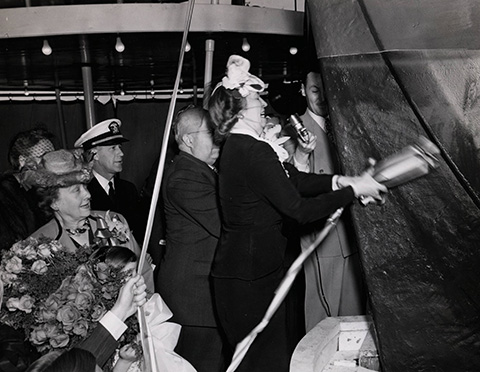
Sen. Tom Connally’s wife swinging a champagne bottle against the prow of the S.S. Hobart Victory during the ship’s launch.
May 25, 1945: The S.S. Hobart Victory, one of about 100 victory ships named after American colleges and universities, is launched to carry supplies to troops in Japan. Thanks to Grady E. Jensen ’44, P’83, L.H.D. ’04, a World War II veteran, artifacts from the decommissioned vessel were installed in the library in 2009 through a long-term loan from the U.S. Department of Transportation’s Maritime Administration. Shortly after the donation, Jensen hired a professional model-maker to create a 16-inch miniature of the ship, which he also gave to the Colleges.
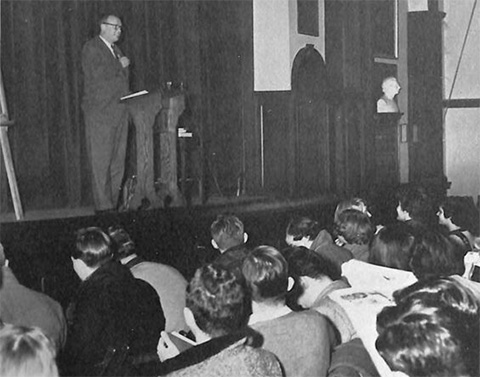
A Western Civ lecture in Coxe Auditorium
Aug. 1945: World War II ends. More than 1,400 alumni, alumnae, students and faculty served in Europe and the Pacific. Thirty-four Hobart men and a William Smith graduate lost their lives in the war.
Aug. 1946: The Colleges struggle back to normal while trying to accommodate an unprecedented influx of returning G.I. Bill veterans who are housed in temporary army barracks quickly constructed on the Quad where the Colleges’ science buildings now sit. Students refer to the barracks as "splinter village."

Exterior of the Twin Oaks Restaurant in 1986.
1947: From 1947 to 1986, the Twin Oaks was the primary student haunt. Located at the corner of Pulteney and Hamilton, where the HWS entrance marker is today, the Oaks offered a chance to get away from the pressures of the day amid the memorabilia of the past: autographed footballs, ancient lacrosse sticks and yellowed photos of HWS.
Jan. 1947: President Potter has a heart attack and dies. Walter H. Durfee, Dean of Hobart College, is made acting president.
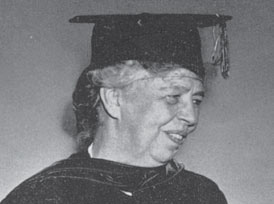
Eleanor Roosevelt during commencement.
June 8, 1947: Former First Lady Eleanor Roosevelt receives an honorary Doctor of Laws degree at the baccalaureate service of the Anniversary Commencement, which celebrated the 125th anniversary of HWS and the sesquicentennial of Geneva Academy.
1948: Dr. Alan Willard Brown, formerly assistant professor of English at Columbia, becomes president. Brown works to build dormitories for Hobart and creates the Office of the Provost.

Inauguration of President Brown (left) with Walter H. Durfee (right), former Hobart College Dean and incoming first Provost of Hobart and William Smith.
1949: Three World War II veterans and enterprising Hobart students, William F. Scandling ’49, LL.D. ’67, Harry W. Anderson ’49, LL.D. ’67 and William Price Laughlin ’49, LL.D. ’67, founded a new food service on campus. The Saga Corporation, named after the Native American word for the area around Seneca Lake where the Colleges are, “Kanadesaga,” grew to become a leader in college dining services. The Marriott Corporation acquired the Saga Corporation in 1986 and assumed responsibility for the Colleges’ dining services. Saga has so long been synonymous with campus dining that the main student dining area in the Scandling Campus Center was officially renamed “The Great Hall of Saga” in conjunction with Hobart’s 175th anniversary.
1949: The HWS Honors program is instituted. Since 1990 -- as far back as the Colleges' digitized records trace – more than 900 students have graduated with Honors.
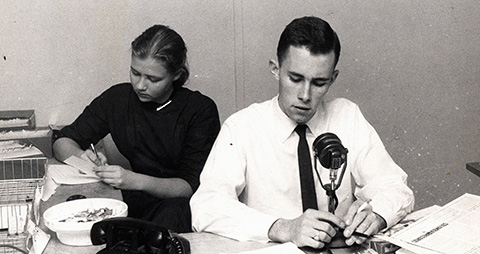
Students working at WEOS in the late 1950s.
Jan. 23, 1949: The Colleges celebrate the centennial of Elizabeth Blackwell’s graduation by presenting an award in her name to 12 internationally acclaimed female physicians. Since then, the Colleges have given the Blackwell Award to 42 women. Read more about Elizabeth Blackwell and the anniversary.
May 6, 1949: WEOS, the campus radio station, signs on the air officially for the first time.

Construction of Bartlett Hall on Nov. 13, 1950, from the Historic Photographs archives.
1950: Construction begins on Bartlett, Hale and Durfee Halls, originally called South, Middle and North Halls. The three buildings for Hobart students replace the army barracks on the Quad. One final barrack remains in place and in use until 1958.
1950: Construction of Gulick Hall begins. Students refer to the building as the "New Student Union" because it houses the Colleges' dining services, a ballroom and other leisure facilities.

Hobart College Air Force ROTC in formation on the Quad, around 1954.
1951: The Air Force ROTC program at the Colleges’ was made mandatory for incoming Hobart students, a policy that lasted until 1964. The program remained on campus until 1970-71, after it was disbanded following ongoing student protests.
Sept. 1951: Due to Korean War and depression years’ low birth rate, enrollment drops to 887 students—615 at Hobart and 272 at William Smith.
Oct. 16, 1953: Hobart soccer wins its varsity opener 4-1 over Oswego State.

Hobart football team in 1954.
Nov. 13, 1954: Hobart puts the bow on a perfect 8-0 season with a 13-6 win over Alfred, who came into the game without a loss. The only undefeated football team in New York State in 1954, the Statesmen’s average margin of victory was 25.5 points.
1955: During Easter, the Schola Cantorum performs at the Metropolitan Church Federation’s dawn service before 7,000 people at Radio City Music Hall and a national audience listening on the NBC Radio Network. Recalled Professor of Music Lindsay A.J. Lafford; “As the curtain rose, the jaws of many of the singers dropped in awe, for most had never been in so vast a theatre.”
1955-56: The Colleges receive a $17,500 gift from the Carnegie Foundation for curriculum revision and a $242,800 gift from the Ford Foundation for faculty salary increases.

1955 photograph of four College Bowl quiz contestants: John Slayden, Warren Herendeen, Paul Minkoff, and Carl Laun
Oct. 12, 1955: A team of four Hobart men picked via an all-college competition appeared on the NBC Radio Network’s College Quiz Bowl.
June 9, 1956: Alumni Day features the playing of the prestigious North-South All-Star lacrosse game before 5,000 fans at Alumni Field. Three players from HWS—George Lassiter, Bill Burham and Jerry Angell—were selected for the North squad. Burham scored a goal but the South prevailed, 20-10.
Sept. 1956: For the first time since the immediate post-World War II period with the influx of students on the GI Bill, enrollment tops the 1,000 mark.

Lansing Hall and Albright Auditorium around 1957 – 1960.
1957: Lansing Hall is completed as the first phase of a science building project that will also include Eaton Hall and Albright Auditorium.
June 1957: The curriculum is revised to offer students three parallel ways to satisfy degree requirements: through coordinated courses, regular departmental courses, and guided individual study.
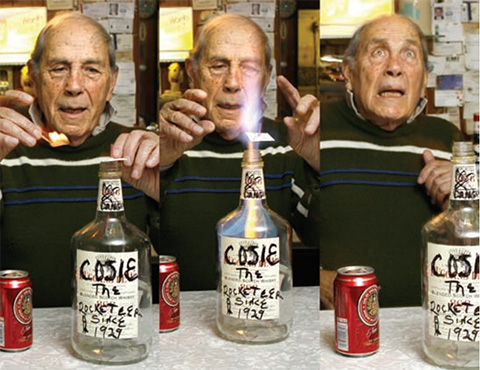
Cosie launching a drink-stirrer at Sam’s Bar & Grill (Composite photo by Lauren Long/Finger Lake Times, appeared in Spring 2008 Pulteney Street Survey)
1957: Sam's Bar & Grill, better known as Cosie's, first started advertising in The Herald in 1957, with a few words in a few square inches: "Sam's Bar -- Ask for Cosmo." Located on Tillman Street and operated by Cosmo Fospero, the bar was a home away from campus for generations of students and faculty.
Sept. 27, 1958: At a special convocation to celebrate the 50th anniversary of William Smith College, the first Elizabeth Blackwell Award for outstanding service to mankind is presented to Gwendolyn Grant Mellon, missionary and founder of Hospital Albert Schweitzer in Haiti.
1958-59: Hobart wrestling competes in its first varsity season.
1959: The Colleges have been at the forefront of a number of academic movements, establishing programs that were among the nation's first including in Far Eastern studies (now Asian languages and cultures) (1959) and Russian studies (1959).
September 1959: HWS announces it has embarked on a $2.5 million capital campaign.

The HWS team going against Wesleyan in the G.E. College Bowl, 1961.
Jan. 1961: A team of students—Jerome Levy ’63, Joseph Rishel ’65, James Zurer ’63, and Marcia Berges Hodges ’61— defeat Baylor on the G.E. College Bowl, a weekly intercollegiate competition on CBS. With the win, HWS retires undefeated at 5-0, joining Colgate and Rutgers as the only teams to post perfect records. Because of the G.E. College Bowl win, Geneva declares Feb. 2 "Hobart and William Smith Day." The whole town rejoices in the team's success, with more than 900 people gathered to greet the celebrities at the Seneca Hotel. Read more about the College Bowl Victory.
1962: The first issue of Echo & Pine, a combined yearbook for Hobart and William Smith Colleges, is released. The yearbook’s foreword says of this new publication: “The combination of our two yearbooks into one with the modern format does not alter, but in face enhances the Echo and Pine’s inseparability with the past.”
1962: St. John’s Tower is constructed one hundred years after the Chapel, symbolically connecting the place of worship with Demarest Hall as a “union of faith and learning.”

Monument in 1961 erected by the Gravity Research Foundation. Roger W. Babson, founder of Foundation, and Louis B. Hirshson shown.
1963: Outside Albright Auditorium, a curious "tombstone" appears with a cryptic message that reads: "Erected to remind students of the blessing forthcoming when a semi-insulator is discovered in order to harness gravity as a free power and reduce airplane accidents." The stone is given to the Colleges by the Gravity Research Foundation and is one of eight placed on college campuses throughout the Northeast. The two trees shading the stone are said to be direct descendants of Newton's famous apple tree. Learn more about the gravity monument here.
1963: The Northern Student Movement is started on campus to provide, according to the yearbook, an opportunity to develop “a meaningful relationship” with the African American community in Geneva and throughout the country.
Nov. 16, 1963: In a piece titled “The Colleges of America’s Upper Class,” published in The Saturday Review, 44 colleges are listed, including HWS.
Nov. 22, 1963: This recollection from Mara O’Laughlin ’66 of what transpired after President John F. Kennedy was assassinated in Dallas, Texas: “I remember coming out of class in Trinity Hall. Without any sort of announcement from the administration there was a migration to the chapel. It was a sea of grief.”
1965: Students begin to take a greater interest in politics. In 1965, there are three clubs dedicated to expressing political views - the Young Democrats, the Young Republicans and the Conservative Club.
1965: Professor of Economics William Bennett teaches the first HWS computer programming course, though it was more than a year later that the Colleges' first computer, an IBM 1130, was installed in the basement of Lansing Hall.

From left to right, Honorary Degree recipient George N. Maybee, Honorary Degree recipient and Trustee Cebern L. Lee, Honorary Degree recipient Lee H. Bristol, President Louis Hirshson, Honorary Degree recipient Thomas Augustus Fraser ’38, Elizabeth Blackwell Award recipient Annette Kaplun-Le Meitour, Honorary Degree recipient Roy W. Moore Jr., Maria Cole (Mrs. Nat King Cole), Merle Gulick, and Honorary Degree recipient Seth N. Genung ’15 at Commencement in 1965. Maria Cole was in attendance to receive her husband’s honorary degree from the Colleges.
Feb. 15, 1965: Singer Nat King Cole, a good friend of Hobart alumnus William Scandling ’49, LL.D. ’67, dies of lung cancer in Santa Monica, Calif. An honorary degree is presented to him posthumously at commencement June 13. An Episcopalian and member of the St. James Church in Los Angeles, Cole gave back to his church in myriad ways, including singing in the choir, giving benefit performances and participating in summer camp projects.
March 20, 1965: Some 125 HWS students and area residents walk down Main Street in solidarity with the historic Selma to Montgomery march led by Dr. Martin Luther King Jr.
April 16, 1965: Robert A. Bristol Gymnasium is dedicated. Among the honored guests that day was Baseball Hall of Famer Stan Musial.
May 15, 1965: Francis L. “Babe” Krause ’25, coach of the Hobart lacrosse team from 1927-1966, is inducted into the Lacrosse Hall of Fame. An All-American during his playing days, Kraus compiled a 207-120-5 record and produced 57 All-Americans.
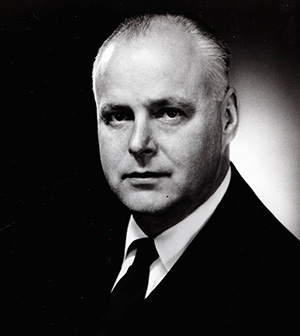
Portrait of President Holland, around 1966
1966: Dr. Albert Edward Holland is made president of the Colleges.
May 3 - 6, 1966: Hobart and William Smith students and some faculty members participate in a 72-hour fast to protest the lack of personal freedoms given to students. Students gather en masse to picket outside Coxe Hall. By 1968, the student code would be entirely overhauled to accommodate the needs of a changing student body.
1966-67: Hobart squash becomes a varsity sport.
1968: The Geneva Scholarship Associates is formed to help financially deserving Geneva High School or DeSales High School graduates attend HWS. Still going strong today, the GSA has enabled more than 200 local students to attend the Colleges by raising more than $2 million in endowed funds to provide direct scholarship assistance.
April 4, 1968: Following the assassination of Dr. Martin Luther King Jr., students join community members in a march down Main Street, an annual practice that continues to this day in early January.
May 20, 1968: Allen Ginsberg, poet and founder of the Beat movement, visits campus and reads his poetry in Albright Auditorium.
Oct. 11, 1968: The first student-trustee meeting is held in Bristol Gymnasium. Nearly the entire student body—1,350 men and women—took part with 17 members of the Board of Trustees. Fourteen questions were prepared by the students and submitted in advance to all Board members.
1968: President Holland resigns. Provost Beverley D. Causey Jr. is elected acting president.
1969: HWS becomes one of the first colleges in the country to offer a women’s studies major.
1969: Bobby Ross ’69 wins his weight class at the ICAC Wrestling Championships.
1969: The Higher Education Opportunity Program is established on campus. Funded by the New York State Department of Education, HEOP is one of the most successful programs of its type in the nation and continues to support HWS students. In 2006, the Governor and the Legislature approve a name change in honor of the important role former Assemblyman Arthur O. Eve P’89, L.H.D. ’10 played in increasing access to higher education in New York State.
1970: The Colleges’ literary magazine, Seneca Review, is first published. Read more about its history here.
1970: Students begin the first-ever recycling program on campus.
1970: After lobbying from students, the Colleges launch one of the first programs in the nation in Black studies (now Africana studies).
1970: The United Blacks student club reorganizes to form the Third World Coalition to include all minority groups on campus. The Coalition proposes and is granted a Minority Cultural Center on campus. The Office of Minority Affairs is renamed the Office of Intercultural Affairs in 1989.
1970: Wendy D. Puriefoy ’71, an expert on school reform and civil society who served as the president of Public Education Network, is the first Student Trustee elected by her classmates to the Board of Trustees.
1970: HWS is named the "upstate headquarters for the "National Student Strike for Peace," the largest student strike in American history, organized as a response to the Kent State Massacre.

President Kuusisto at the Groundbreaking for the Warren Hunting Smith library on July 13, 1974.
June 5, 1970: After five Hobart students were arrested in a drug raid and found out the man they knew as “Tommy the Traveler” was an undercover informant on campus, there was a confrontation between a mass of students and riot police. On the recommendation of the FBI's Counter-Intelligence Program, the Ontario County Sheriff had hired Tommy Tongyai to gain access to the Hobart and William Smith campus by playing the role of an organizer of the radical group Students for a Democratic Society. Read more about Tommy the Traveler here or listen to a podcast about the events created by the Herald in 2019 here.
July 1970: Allan Kuusisto is named president of the Colleges.
Sept. 1970: The Air Force ROTC program is terminated.
Oct. 2, 1970: Koshare, now known as Kinetic Dance Collective, debuts on the Bartlett Theatre stage.
1971: First Coed dorm opens in Potter Hall.
1971: Boswell Field is completed.
1972: Title IX is passed, solidifying the importance of women’s athletics at the Colleges and across the country. Read more about the influential legislation and its impact on HWS.

Schola Cantorum and Inter-Faith Choir rehearsing for performance and Nicholas V. D'Angelo, composer and professor, leading the Syracuse Symphony Orchestra augmented by Schola Cantorum of Hobart and William Smith Colleges and Inter-Faith Choir in Bristol Gymnasium on Sunday, April 9, 1972 as part of the Hobart College sesquicentennial celebrations.
1972: 50 years after the first joint Commencement was held, students vote to receive their diplomas from their classmates.
1972: Led by Gary Abelson ’72, Doug Lewis ’72 and Neal Rose ’72, Hobart golf earned a spot in the NCAA college division tournament.
April 1972: Hobart celebrates its Sesquicentennial.
May 27, 1972: Hobart lacrosse completes a 15-1 season with a 15-12 victory over Washington (Md.) to capture the USILA College Division Championship, the first national championship for any team from the Colleges.

2022 marks the 50th anniversary of Hobart lacrosse's first national championship (Division II/III).
1973: Bruce Springsteen comes to campus during Fall Weekend. Read about alums’ experiences seeing him perform in the Smith Opera House here. He returned in Dec. of 1974 and Springsteen’s management booked him in Geneva for the second show of the Born to Run Tour in July 1975.
1973: Billy Joel visits Hobart and William Smith. Read alums’ reminiscences of the concert and other exciting music performances at the Colleges through the years here and here.
Aug. 15, 1973: John Norvell ’66, P’99, P’02, a now retired Air Force lieutenant colonel and former director of alumni relations at the Colleges, flies the last unofficial combat mission out of Udorn Royal Thai Air Force Base. During the Vietnam War, Norvell was in the 13th Fighter Squadron, also known as the “Panther Pack” in honor of the 2000 lb. black Asian leopard they adopted and named Eldridge. Read more about Norvell on his blog, An American Family.
1974: "Myth, History and Theory" replaces Western Civilization in the curriculum. In the 1973 Hobart and William Smith Quarterly, one of Western Civ's architects, Professor Frank O'Laughlin, in an article titled "Metamorphosis," writes: "None of us felt that the old program was failing in any real sense, or even that it had lost its famous elan... It was rather that a change had occurred in general attitudes toward higher education and, especially among students, toward the story of the past, such that a broad challenge was being issued to the architects of the college curricula..."

Rick Gilbert ’74
May 25, 1974: Hobart lacrosse plays in its first NCAA championship game, suffering a heart-breaking 18-17 loss in overtime at Towson State. Rick Gilbert ’74 had five points in the game, completing his storied career with a program record 444.
1974: Writer Kurt Vonnegut speaks at commencement and receives an honorary degree. Read the transcript of his address here.
Spring 1975: The first study abroad program is directed by Professor Emerita of Art History Elena Ciletti, who leads 29 students on a 10-week tour of Italy, where they explore art in Florence, Rome and Venice.
1975: Rich Kowalski ’76 becomes the second player in NCAA history to rush for at least 1,000 yards in four consecutive seasons.

The research vessel, when it was the Happy K (named after President Kuusisto) before its first christening as the HWS Explorer in 1976.
1976: The Colleges' Geoscience Department acquires its 65-foot lake-research vessel. Originally christened the HWS Explorer, the name of the boat is changed to the William Scandling in 2002, in honor of Scandling’s enduring commitment to the Colleges.
1976: The Warren Hunting Smith Library opens.
1976: The recently established geoscience department receives three grants from the National Science Foundation totaling $326,030.
1976: The Latin American Organization is created to raise awareness of Latin American culture on campus through various programs and events.
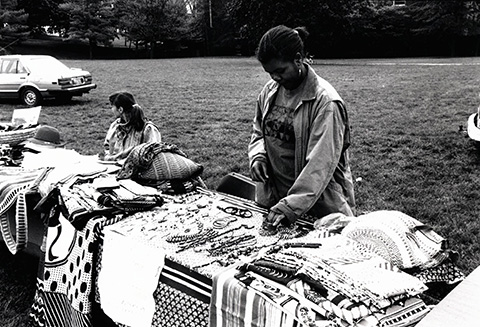
Folk Fest on the Quad.
May 1976: The very first Folk Fest is celebrated. Between 1976 and 2001, HWS Folk Fest included acts like Doc Watson, Bela Fleck, Toots and the Maytals, Phish and The Slip, as well as a number of faculty, staff, student and alum performers, including Folk Fest's founder, Matthew Stamell '78, P'04. Read more about the festival.
June 19, 1976: The rock band Blue Oyster Cult releases Agents of Future, the album that features its first-ever hit single (Don’t Fear) The Reaper, which reached No. 12 on the Billboard chart and was chosen single-of-the-year by Rolling Stone and Creem magazines. “In the four decades since, the song has been tapped more than two dozen times on film, TV, and video games and has become a most pliable standard,” according to The New York Times. The group continues to perform today, led by founding member and lead vocalist Eric Bloom ’67.

Bob Cosby ’77
Nov. 13, 1976: Bob Cosby ’77 becomes the first Statesman to compete in the NCAA Cross Country Championship.
Oct. 29, 1978: Hobart skates to a 3-3 tie with St. John Fisher in its first game as a varsity hockey program.
Dec. 3, 1979: Sensing the need for a campus expression of support for the Americans held hostage in Iran and a plea for compassion from the Iranian students, students Alex Comacho ’81, Cameron Lockhead ’82 and Bruce Burrow ’83 organize a rally that attracts more than 350 students, faculty, staff and townspeople to the steps of Coxe Hall.
May 25, 1980: With an 11-8 triumph over Cortland, the Statesmen capture the inaugural NCAA Division III Men’s Lacrosse Championship.
1981: William Smith athletic teams adopt the Heron nickname following a campus-wide contest. After a powerful and graceful great blue heron flew over field hockey practice, Mary Stowell Nelson ’82 and Ginger Adams Simon ’83 are inspired to submit the Heron nickname that was ultimately chosen over 175 proposals.
April 1982: Ralph Nader visits campus for a lecture.

President Brewster on campus.
1982: The original College Bowl Team of Jerry Levy '63, Marcia Berges Hodges '61, James Zurer '63 and Joseph Rishel '62 return to campus to face off with a group of students. The originals demonstrate they still have what it takes by trouncing the youngsters.
May 30, 1982: Holocaust survivor and author Elie Wiesel gives the commencement address and receives an honorary degree. He will go on the win the Nobel Peace Prize in 1986.

Scandling Center in construction in 1983.
1982: President Kuusisto retires. Yale educated Carroll W. Brewster becomes president.
1984: First annual Lobster Bash held as a fundraiser for the United Way.
March 12, 1984: The Scandling Center opens. Housing the main student dining hall, the post office and the office of Student Activities, Scandling is the center of daily life at the Colleges. The building is made possible through a gift from Trustee William F. Scandling '49, L.H.D. ’67.

Ma aiming a water gun in the Side Show, undated.
May 18, 1985: Hobart wins its sixth consecutive lacrosse national championship, topping Washington (Md.) 15-8 in the title game. In 15 NCAA tournament appearances, the Statesmen were named the Most Outstanding Player 12 times. Marc Van Arsdale ’85 is the only Hobart player to earn the honor twice (1983 & 1985).
1985: Anita Carlson -- known as "Ma" to Side Show regulars -- operated the Geneva watering hole from 1985 until her death in 2019. The jukebox offerings didn't change for years, and Alumni House and Communications created a Spotify playlist that includes 151 songs selected by Carlson's family that represent an era.
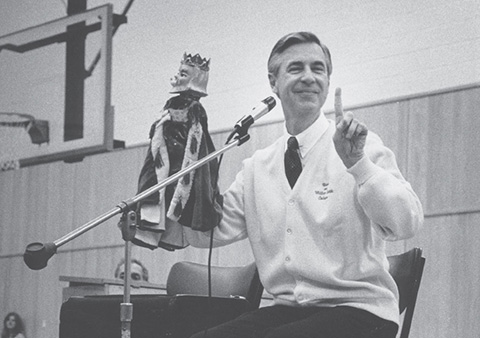
Fred Rogers wearing a Hobart and William Smith sweater.
May 1985: Fred Rogers, creator and host of Mister Rogers’ Neighborhood, speaks at Commencement and receives an honorary degree. In his Commencement address, Fred Rogers shared his warm, neighborly advice with graduating seniors and the HWS community: “What [makes] the difference between wishing and realizing our wishes? Lots of things, of course, but the main one, I think, is whether we link our wishes to our hopes and our hopes to our active striving. It might take months or years for a wish to come true, but it’s far more likely to happen when you care so much about it that you’ll do all you can to make it happen.”

Mr. and Mrs. James Bampton cut the ribbon while President and Mrs. Carroll Brewster look on, 1986.
1986: A ribbon-cutting ceremony is held for the opening of Bampton House, after James William Bampton ’32 gifted the house and concept to the Colleges. Mr. Bampton wanted the House to be a place on campus where Hobart student leaders with significant academic and extra-curricular achievements could live together and uphold Hobart Heritage.
1986: The Colleges begin offering courses in men's studies.
1986: A new curriculum, to take effect for the classes of 1990, is approved. It includes distribution requirements for courses in each academic division; a first-year “Ways of Knowing” course; sophomore-year disciplinary courses; and a strong recommendation of off-campus study, preferably abroad, during the junior year.
1987: The Cellar Pub, formerly The Union, opens in the basement of Coxe Hall.
May 16, 1987: With a 9-5 win over Ohio Wesleyan in the NCAA tournament finale, Hobart Head Lacrosse Coach Dave Urick leads his team to an eighth consecutive national championship, surpassing the mark set by UCLA Men’s Basketball Head Coach John Wooden for the most consecutive championships in a team sport.
1988: The Black Student Union, now known as Sankofa, is founded to promote education and awareness of the black diaspora through programs and events.
1989: The Office of Minority Affairs is renamed the Office of Intercultural Affairs. A memo from the time written by Associate Dean of the Colleges for Intercultural Affairs Edward Blackwell describes the goal of the office, “to create an environment of interactive pluralism where students, faculty and staff have the ability to meet and engage one another across ethnic and racial identities.” The office is currently housed in the Intercultural Affairs Center, which will undergo renovation starting in 2022. Read more about the plans for expansion here.
1989: After more than a decade, the Colleges retire the requirement that all students submit a Baccalaureate essay to graduate.
May 20, 1989: Hobart lacrosse’s string of national championships reaches 10 with an 11-8 win over Ohio Wesleyan. Following the decade of dominance that saw the Statesmen go 129-33, Dave Urick resigns to take over as head coach at Georgetown University.
Oct. 14, 1989: Bristol Field House and Elliott Varsity House officially dedicated.

Exterior of the library with the Scissors sculpture, undated but taken some time before the addition of the Melly Center in the late 90s.
Nov. 1989: The Scissors are erected on the lawn near the library. Designed by the students in Professor of Art and Architecture A.E. Ted Aub’s “3-D Design class,” the sculpture was meant to symbolize the coordinate system. As the student’s statement about the sculpture published in an issue of the Herald states, “Just as the two parts of the scissors work together, so do the separate colleges of Hobart and William Smith.” The metal sculpture that stands on the lawn today is actually a replacement. The original that the students designed in the preceding spring semester was wood and torn down by unknown vandals.
Dec. 14, 1989: Phish plays the Barn! Listen to the recording here: AC/DC Bag - 1989.10.14 - Phish.in
1990s: In the midst of the HIV/AIDS epidemic, the Colleges adopt a new policy: "Those with AIDS or a positive blood test will not be denied access to classes, dormitories, eating places, gymnasiums, swimming pools or other common areas."
Feb. 24, 1990: With a 7-2 win over Colby, Hobart squash wins the Summers Cup at the intercollegiate team championships.
May 19, 1990: Under new Head Coach B.J. O’Hara ’75, the Hobart lacrosse juggernaut maintains its national championship monopoly, outscoring its NCAA tournament opponents a combined 61-22 including an 18-6 win over Washington (Md.) in the title bout. It was also the 11th (and final) time Hobart hosted the Division III championship game.
1991: First year seminars are introduced as a “new approach to ‘general education” that provides an environment for “the independent pursuit of knowledge” and “intellectual growth,” according to the Nov. issue of the Herald. These courses continue to be a key part of the Colleges’ liberal arts curriculum.

President Hersh at his inauguration, 1991.
1991: Carroll W. Brewster retires. Dr. Richard H. Hersh, former director of the Center for Moral Development at Harvard University, becomes president.
May 18, 1991: Hobart lacrosse’s championship streak hits a dozen with a 12-11 win at Salisbury. Tim DeLoe ’92 had a hat trick and was named the Most Outstanding Player, while Bill Miller ’91 scored twice, completing his Hall of Fame career with a record 173 goals.

Jack Fulton ’92
March 1992: Jack Fulton ’92 earns All-America honors in three events at the NCAA Division III Swimming & Diving Championships.
1992: Hobart baseball completes a 25-12-1 season that includes the program’s first NCAA tournament appearance.
Oct. 31, 1992: With a 1-0 victory over RPI, Hobart soccer completes an undefeated regular season, entering the NCAA tournament as the No. 1 ranked team in the nation.
May 30, 1993: A year removed from the end of the streak, Hobart lacrosse returned to the pinnacle of Division III, capturing its 13th championship in 14 seasons with a 16-10 victory over Ohio Wesleyan. In 15 Division III tournament appearances, Hobart’s record stands at an impressive 42-2 (.955). Factor in six Division II tournament appearances (that resulted in national championships in 1976 and 1977), five Division I tournament appearances, and two USILA College Division tournament bids that included the 1972 national championship and Hobart boasts an all-time postseason record of 59-11 (.843).
1993: The Hobart and William Smith admissions offices combine.
May 30, 1993: In College Park, Md., Hobart captures its 13th NCAA Division III lacrosse championship in 14 years with a 16-10 win over Ohio Wesleyan.
1993: Chris Desino ’94 and Rob Desino ’94 win the gold medal in the coxless pair at the IRA Championships. They again ascended to the top of the podium at the 1994 IRA Championships.

Chris Desino ’94 and Rob Desino ’94
1993: Homecoming Weekend marks the official opening and dedication ceremony for the Napier Classroom Center and the Colleges' new science building - Rosenberg Hall. The Weekend also celebrates the opening of the Colleges' ambitious campaign to raise $75 million.
1994: The Colleges eliminate the requirement that all students pass a swimming test before graduation.
1994: First Annual "Celebrate Service...Celebrate Geneva" Day combines the efforts of more than 700 volunteers, including students and townspeople, to improve Geneva. This tradition would later be called “Days of Service” and students continue to participate in community service and volunteerism every year. Today, HWS holds multiple community-wide Days of Service each year, which, combined with the volunteer projects students undertake throughout the academic year, totals more than 80,000 hours of service annually.
1994: For the first time, more students are admitted to William Smith than Hobart.
Jan. 20, 1994: Benjamin Netanyahu, the ninth prime minter of Israel, visits campus to give his views on the Middle East Peace Process and declares the U.N. a "house of untruths." In April, Edward Said, professor of comparative literature at Columbia University and one of the leading intellectual voices in the movement for Palestinian autonomy, says that peace, "has to be a settlement between equals that recognizes our rights as well as theirs."
Feb. 25, 1995: Feminist, communist and former Black Power activist Angela Davis visits campus. She would later return to speak in the fall of 2018 as part of the Fisher Center Series.
1996: The Village at Odell's Pond is constructed offering 100 juniors and seniors a new residence option - apartment-style living in an on-campus location.

Adam Schapiro ’96
May 1996: Adam Schapiro ’96 completed a stellar tennis career in the NCAA Singles Championship quarterfinals. He sported a 75-4 career record in singles play, including a 20-1 mark as a senior.
1996: In the spring, a vote by the faculty and the Board of Trustees approved the "goals curriculum" that shapes students' academic experiences today. In order to graduate, students must demonstrate proficiency in critical and creative thinking, quantitative reasoning, scientific inquiry and the artistic process, and must have an understanding of social inequities, cultural differences and ethical judgment.
1996: Andy Horton ’98 becomes Hobart’s first All-American sailor.
1997: Hobart and William Smith Colleges become the first in the nation to offer a degree in men's studies - a minor. William Smith student Courtinay L.C. Casey '01 and Hobart student Joseph Gregorio '01 are the first students to declare the minor.
1997: Long a home for poetry and nonfiction work that defies categorization, the Seneca Review begins publishing lyric essays. As John D’Agata ’95 and the late Seneca Review editor and Professor of English Deborah Tall write in 1999, the lyric essay, “with its malleability, ingenuity, immediacy, complexity and use of poetic language …give[s] us a fresh way to make music of the world.”
Feb. 26, 1997: Maya Angelou speaks on campus.

Students gather for the filming of the opening segment for “Good Morning America,” 1997.
April 2, 1997: A group of students gives a rowdy hello from the steps of Coxe Hall on “Good Morning America” in honor of the Colleges’ 175th anniversary.
April 17, 1997: Hobart celebrates its 175th Anniversary. The event kicks off with a ceremonial cutting of a 175th Birthday Cake for the College.
1998: With a generous gift from Emily and the late Richard Fisher P’93, The Fisher Center for the Study of Women and Men is founded, now called the Fisher Center for the Study of Gender and Justice. Over the years, the center has hosted more than 175 events on campus, with presenters including Angela Davis, Michael Kimmel and Terry Tempest Williams, among many others. Since its founding, the Fisher Center has been the campus and community hub for exploring gender-related fields in the arts, humanities, and social and natural sciences, hosting speakers and events that focus on democratic ideals of equity, mutual respect and common interest.

Professor Tenzin Yignyen constructing a sand mandala with students in 2009.
1998: For the first time, Religious Studies Professor Tenzin Yignyen creates a sand mandala on campus. Together with other monks, he then dismantles it with breath, scattering the sand into Seneca Lake.
Oct. 3, 1998: The Dr. Frank P. Smith ’36 Squash Center is dedicated.
Nov. 14, 1998: Dr. Maulana Karenga, the Chair of the Department of Black Studies at California State University and the man who established the African-American celebration of Kwanzaa in 1966, is the featured speaker at the campus Kwanzaa celebration.
1999: The Afro Latino Alumni and Alumnae Association (ALAA) is formed to promote the interests of all graduates of color. Horace Allen ’85 and Reeshemah Brightley ’99 are elected its first president and vice-president. ALAA members continue to serve as mentors to students and fellow alums, and organize and sponsor career panels and networking conferences.
1999: The Caribbean Student Association is formed to celebrate the richness of Caribbean culture through educational and social events.

President Mark D. Gearan L.H.D. ’17, P’21 with students in 1999.
1999: Mark D. Gearan is named president. Gearan is the former director of the Peace Corps and, during the Clinton administration, was assistant to the president, director of communications and deputy chief of staff. He would go on to be the Colleges’ longest serving president. Read about Gearan’s inauguration as covered in the Pulteney Street Survey here.
April 17, 1999: First Latin American Organization's Cultural Extravaganza is celebrated.
Jan. 11, 2000: More than 2,000 people turn up to watch a conversation about public service between First Lady Hillary Rodham Clinton and students, the first of President Gearan’s President’s Forum series.
Aug. 2000: Since switching to a trimester system during World War II to accommodate the Navy V-12 program, the Colleges go back to two semesters.
Nov. 18, 2000: Hobart football plays its first NCAA playoff game, a 25-0 shutout of Bridgewater State.
Feb. 24, 2001: Behind Tournament MVP Joe Corbett ’03, Hobart basketball defeats RPI 67-58 to clinch the UCAA Championship and earn the program’s first NCAA tournament bid.
Sept. 2001: Over Labor Day Weekend, Former President Bill Clinton and United States Senator Hillary Clinton are guests of the Gearans. During a welcome ceremony on the Quad, President Clinton gives what he calls a mini class on global unity and Senator Clinton discusses the importance of environmental protection in the Finger Lakes.
Sept. 11, 2001: The HWS community lost three alumni in the attacks at the World Trade Center, all of whom worked for the financial services firm Cantor Fitzgerald: Andrew H. Golkin ’93; Scott W. Rohner ’01; and Michael J. Simon ’83, P’11, P’13.

John H. Cozzens ’41 Memorial Field dedicated.
Oct. 20, 2001: John H. Cozzens ’41 Memorial Field dedicated.
2002: Hobart and William Smith Colleges become the first college or university in the United States to offer an undergraduate major in the field of LGBT/Queer Studies. Today, The Critical Sexuality and Queer Studies program at HWS continues to grow and evolve.
2002: The Finger Lakes Institute, an organization dedicated to the promotion of environmental research and education about the Finger Lakes Region, is established and housed on South Main Street. Learn more about the Finger Lakes Institute here.

RFK Varsity Strength and Conditioning Center dedicated.
April 12, 2002: RFK Varsity Strength and Conditioning Center dedicated. The RFK Center honors the generosity and loyalty of three Hobart legends: Dr. Robert Raleigh '73, Jeremy Foley '74, and James Kraus '74.
Oct. 2002: More than 50 students, travel by bus to Washington, D.C., to participate in the National Anti-War protest.
Oct. 2002: The Colleges receive the largest single gift in history when William F. Scandling '49, LL.D. '67 contributes $15 million.
April 2003: The first HWS Day, focused on Middle East culture, takes place and includes lectures, films, plays and other events planned by students and faculty.

H.J. McCooey Memorial Field is dedicated.
April 4, 2003: H.J. McCooey Memorial Field, a 1,500 seat artificial turf stadium, is dedicated. The facility is made possible by a lead naming gift from the family of Herbert J. McCooey Sr. P'76, P'78, P'82, P'90, P'92, GP'04, GP'08, GP'09, a former Wall Street broker who sent five of his seven children to the Colleges.
Oct. 25, 2003: Bozzuto Boathouse is dedicated and named in honor of Charles Bozzuto, father of the project's lead donor, Honorary Trustee Thomas S. Bozzuto '68, L.H.D. '18. It houses the Colleges' nationally ranked sailing team and also benefits the Outdoor Recreation Adventure Program. Read about the dedication here.

Julia James ’04
Nov. 26, 2003: Julia James ’04 is awarded a Rhodes Scholarship, the first William Smith student to earn the scholarship.
March 6, 2004: In front of a sellout crowd at The Cooler, the Hobart hockey team stuns ninth-ranked RIT 3-1 to capture the ECAC West Championship. The following day, the Statesmen received their first invitation to compete in the NCAA tournament.
April 14, 2004: The Black Eyed Peas come to the Smith Opera House.
2004: Hobart rowing alumnus Kent Smack ’97 competes in the 2004 Olympics in Athens, Greece, as a member of Team USA’s men’s quadruple sculls.
Sept. 2004: Stern Hall, an academic building housing the departments of political science, anthropology/sociology, economics and Asian languages and cultures, is officially dedicated. It is named in honor of lead donor Herbert J. Stern '58, LL.D. '74, P'03.
2004: Trinity Hall, the second oldest building on campus, is renovated to house the Salisbury Center at Trinity Hall, including the Career Services Office, the Community Engagement Office, and the Center for Global Education. The Center is named in honor of lead donor and Trustee Charles Salisbury Jr. '63, P'94, L.H.D.'08.
2004: De Cordova Hall, named for Arthur E. de Cordova '56, L.H.D. ’05, is completed along with Caird Hall, named for James F. Caird '56, L.H.D. '12 and his wife, Cynthia L. Caird L.H.D. ’12. Located on Emerson Hill, the coeducational residences includes 88-beds in singles, doubles and quads.
Feb. 22, 2005: HWS Day 2005, dedicated to Einstein's Legacy, celebrates the 100th anniversary of Einstein's "miraculous year" - 1905 - during which he laid the foundations for the theories of relativity, quantum and Brownian motion.
2005: HWS is chosen by The Princeton Review and Campus Compact as one of the nation's best colleges for fostering social responsibility and public service.
2005: First students receive the degree of Master of Arts in teaching, exclusively for HWS undergraduate students who enrolled in the Teacher Education Program. HWS has since produced more than 100 M.A. in Teaching graduates.
2005: First performance by President Gearan’s Garage Band at the Senior Dinner, featuring a mix of faculty, staff and other community members with the President on keyboards and vocals. Read more about the Garage Band tradition here.
April 19, 2005: Peter Piné ’05 wins his 76th career singles match, breaking the Hobart record set by Hobart Hall of Famer Adam Schapiro ’96. A two-time All-Liberty League selection, Piné finished his career with a 77-24 career mark.

Peter Piné ’05
June 7, 2005: HWS wins the ICSA Team Race National Championship. The Colleges finished the regatta with a 13-4 record, three wins better than Harvard, Southern California and Yale, which tied for second. Three days later, HWS won the ICSA Dinghy National Championship, 38 points ahead of the runner-up, Hawaii.
2006: The Colleges started partnering with Ontario ARC to offer the College Experience program, making it more accessible for students with developmental disabilities to take college courses and participate in college life.
Sept. 2006: “Campaign for the Colleges,” one of the most ambitious fundraising campaigns in the Colleges’ history, is kicked off to support a strategic plan called HWS 2010. The Campaign eventually raised over $200 million to fund renovations, on-campus improvements, endowment support, and more.
Nov. 2006: The Katherine D. Elliott Studio Arts Center, named in honor of Trustee Katherine D. Elliott ’66, L.H.D. ’08 and her partner Richard Seth Abramson, and The Goldstein Family Carriage House, funded by the Sheldon and Ruth Goldstein foundation, in honor of the couple’s granddaughters, Sara Nargiso ’07 and Rachel Nargiso ’04, are dedicated, marking an important expansion of arts at the Colleges.
2006: The First Generation Initiative is established to ensure that first-generation students have academic, social and co-curricular guidance, as well as visibility on campus. In 2018, Board Chair Thomas S. Bozzuto '68, L.H.D. '18 who was himself a first-generation student establishes the Bozzuto Family First-Generation Endowed Scholarship with a $1 million gift.
June 2007: Geneva Scholarship Associates (GSA) celebrates its 40th year providing financial support to academically and financially deserving students from Geneva High School or DeSales High School so that they may attend Hobart and William Smith Colleges. Colleges President Mark D. Gearan presents President's Medals to each of the founders; Frank Pullano, Dr. Ed Cuony, T. Robert "Bob" Saunderson, Grace Parrott, widow of co-founder John Parrott, and Neil Marvin. The GSA fund also achieves a milestone, exceeding $1 million for the first time thanks to a record contribution from Stuart Piltch '82, P'11 and his family.
July 2007: Running back Doug Blakowski ’07 and Team USA won the gold medal at the World Championship of American Football in Kawasaki, Japan. The Americans defeated the host nation 23-20 in overtime in the gold medal game with Blakowski rushing 10 times for 55 yards.

Doug Blakowski ’07
Sept. 2007: President Gearan signs the American College and University Presidents Climate Commitment, making Hobart and William Smith Colleges a charter member of an effort to reduce emissions of gases responsible for global warming.
2007: The renovation is completed on the Abbe Center for Jewish Life made possible through the generosity of former Trustee Richard K. Abbe ’92, P’19, and the house opens as a space for students of Jewish faith. HWS Hillel is also hosted in the space which includes the Tina Wasserman Kosher Kitchen and the Wasserman Garden of Quiet Repose, named in honor of Trustee Dr. Richard L. Wasserman '70 and his wife Tina, a bestselling cookbook author who is an expert on the Jewish diaspora.
2008: William Smith College celebrates its Centennial. Read about the Centennial gala and the celebrations here.
April 26, 2008: Citing challenges inherent in recruiting Division I student-athletes without athletic scholarships, the Board of Trustees votes to reclassify Hobart lacrosse from Division I back to Division III starting in the 2008-09 academic year. An outpouring of support against the move from alumni and others, many expressing concern about losing longtime rivalry games with Cornell University and Syracuse University, results in the governing board reversing its decision and keeping the Statesmen a NCAA Division I member.
June 2008: The Vandervort Room, a 4,600-square-foot multi-purpose room, is dedicated in honor of Paul and Grace Vandervort, parents of lead donor Janet Vandervort Cable '45.

Ribbon cutting of Scandling Center re-opening, 2008.
Sept. 2008: Nearly 25 years after its doors first opened, HWS faculty, staff and students gather for the ribbon cutting and official grand re-opening of the newly named and newly renovated Scandling Campus Center. The renovations added more than 17,000 additional square feet to the building, traditionally a hub of student activity, making room for a student activities commons, game room, lounge areas, marketplace cafe, outdoor terrace and the Vandervort Room.
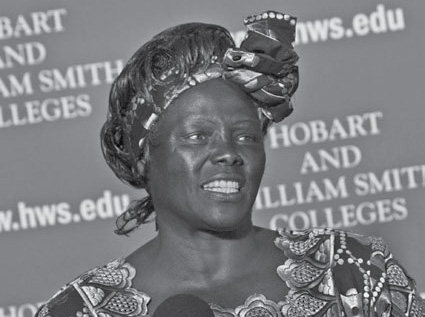
Wangari Maathai P'94, P'96, L.H.D. '94 speaking on campus.
2008: Wangari Maathai P'94, P'96, L.H.D. '94, recipient of the 2004 Nobel Peace Prize and founder of the Green Belt Movement, comes to campus to accept the Elizabeth Blackwell Award.
Nov. 16, 2008: Hobart soccer defeats Cortland 1-0 in the second round of the NCAA tournament. It marks the Statesmen’s deepest tournament run (the third round was hosted be Loras College in Dubuque, where the Statesmen fell to Ohio Northern 2-1).
Oct. 5, 2009: Cornel West, one of America’s most famous public intellectuals, joins the HWS community as part of the President’s Forum.

James F. ’56 and Cynthia L. Caird cut the ribbon the Caird Center for Sports and Recreation.
2010: James F. ’56 and Cynthia L. Caird come to campus to dedicate the Caird Center for Sports and Recreation that bears their name. The construction of the Center includes a FieldTurf surface, lighting, grandstand and press box for Boswell Field, refurbished and expanded team rooms in Elliott Varsity House, and a new sod surface for William Smith Field.
2011: Award-winning writer Tom Piazza is selected as the first resident of the Peter Trias Residency for Writers. Funded by the Peter Trias ’70 Endowed Fund for Poetry and Creative Writing, the residency is designed to bring poets and writers of distinction to campus for year-long appointments. Read more about the residency and Peter Trias here.
2012: St. John’s Chapel, one of the oldest buildings on the HWS Campus, marks its 150th anniversary.
2012: The HWS Debate team wins the U.S. National Championship. They would go on to rank 21st in the world. Read more about the HWS team’s performance in the 2012 World University Debate Championship here and learn more about the Debate team today here.
2012: Campaign for the Colleges raises more than $205 million, making it the largest and most comprehensive fundraising effort in the Colleges’ history. In total, $74 million is added to the endowment, creating more than 90 new student scholarships, three new endowed professorships and 57 new endowed funds supporting programs in technology, public service and internships. The Campaign also allows the Colleges to embark on a comprehensive campus revitalization initiative, constructing six new buildings and significantly renovating 22 others, as well as providing support for innovative programs that are housed in the new Rosensweig Learning Commons, the Finger Lakes Institute and the Centennial Center for Leadership.
2012: Sailing alumni Trevor Moore ’07 and Rob Crane ’09 competed in the 2012 Summer Olympics in London. Competing for Team USA, Crane was 29th out of 49 entries in the Men’s Laser and Moore was 15th out of 20 entries in the 49er.

Ribbon cutting on the new Muslim Life Center in 2019.
2013: The Colleges welcome its first POSSE cohort of ten students, from Los Angeles, to campus. The successful group graduates in 2017 with POSSE president and founder Deborah Bial L.H.D. ’17 by their side.
2013: The Muslim Student Center is established to provide an environment for prayer and community engagement among Muslim students, faculty and staff. In the fall of 2019, at the request of students for a more centrally located space, the center is moved to Medbery Hall.
2013: The Race and Racism coalition is created by students to engage in dialogues to improve cultural and institutional ideas about and responses to issues of race on campus and in society.
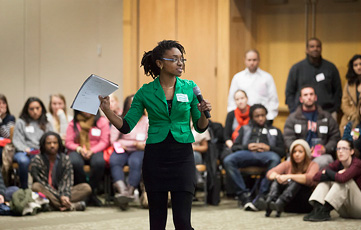
Race and Racism Coalition dialogue session, 2013
March 7, 2014: With a second half free throw, Richie Bonney ’14 broke the Hobart basketball career scoring record. His 30-point, 10-rebound effort against No. 21 Scranton led the Statesmen to a 94-81 victory in the NCAA tournament first round. Bonney finished his career with 1,738 points and was named the 2014 Jostens Trophy winner as the best student-athlete in Division III men’s basketball.
2014: The Culture of Respect Steering committee is formed, including 22 members of the Colleges’ community, to “examine, research and offer recommendations designed to elicit important positive change” on a range of topics, from athletics and Greek life to the coordinate system.
Sept. 11, 2014: Connor May ’16 and Jack Slattery ’16 start the Kappa Alpha tradition of placing 2,977 American flags on the Quad to observe the anniversary of the 9/11 attacks. Both brothers were impacted by the attacks and wanted to create a fitting tribute on campus. Read more about the tradition here. Starting in 2020, the brothers now include flags of over 60 other countries to represent the 372 foreign nationals who also lost their lives in the attacks.

Professor May in 2014 with some of the members of Mosaic.
Dec. 6, 2014: D3football.com National Defensive Player of the Year Tyre Coleman ’15 posts a pair of sacks against No. 4 Wesley in the NCAA quarterfinals. He finished his career with 51 sacks, second in NCAA Division III history.
2014: Associate Professor of Theatre H May establishes Mosaic NY, a student theatre group, to create and perform works of theatre that promote dialogue, develop community, celebrate diversity, and encourage the active pursuit of social justice.

Ali Marpet ’15
May 1, 2015: Ali Marpet ’15 is the 61st overall pick in the NFL Draft, the highest a Division III player has ever been chosen. He started at right guard in all 13 games he played as a rookie for Tampa Bay.
2015: A group of students led by Assistant Professor of Physics Ileana Dumitriu partnered with NASA to build a rocket payload capable of launching though the Colorado Space Grant Consortium RockSat-C Program, representing one of the only liberal arts schools in the competition and becoming the first group of HWS students to ever successful launch anything into space. Learn more about the launch here.

We the Unheard student protest in 2015.
Nov. 13, 2015: The We the Unheard Student Protest is led by students calling for increased support and diversity on campus, specifically pushing for a Diversity Officer and increased racial representation across the institution.
2016: The Colleges’ solar farms open. Hobart and William Smith’s solar farms deliver 50 percent of the Colleges’ electricity. Split between two sites in the Town of Geneva and the Town of Seneca, the farms generate up to five megawatts of electricity through more than 16,000 panels, which span the equivalent of 14.5 football fields. Read more about them and the Colleges’ commitment to renewable energy here.
2016: Students vote to receive their diplomas in alphabetical order rather than by College.

Opening for Gearan Center celebrated with a ribbon cutting ceremony, 2016.
Jan. 23, 2016: The new Gearan Center for the Performing Arts, named in honor of President Mark D. Gearan and Mary Herlihy Gearan, opens on campus. The facility provides academic and performance space for the departments of music, dance, theatre, and media and society. This was the last of a significant amount of construction and renovation projects that took place during Gearan’s presidency. Read about them all here.
Oct. 2016: The Thomas Poole Family Admissions Center is dedicated at a celebration of the 10th anniversary of the renovation of the building to honor the benefactors, longtime HWS Trustee Thomas B. ’61, L.H.D. ’06 and Mary Jane Poole P’91. Read more about the renovation and dedication here.
Dec. 2016: The Colleges name its first Diversity Officer and develop the Strategic Diversity Plan to “strive to create a just and inclusive environment where all students, faculty, and staff are valued and respected.” Read about the Strategic Diversity Plan and the Office for Diversity, Equity, and Inclusion here and read about Khuram Hussain’s 2020 appointment as the Colleges’ Vice President for DEI here.
2017: HWS officially establishes the Upsilon Pi charter of the Alpha Phi Alpha fraternity, the first intercollegiate Greek-letter organization established for African American men. Read more about the inaugural charter here.
2017: The Princeton Review ranks HWS number one in the nation in Study Abroad, for the first of two consecutive years. Read more about it here.
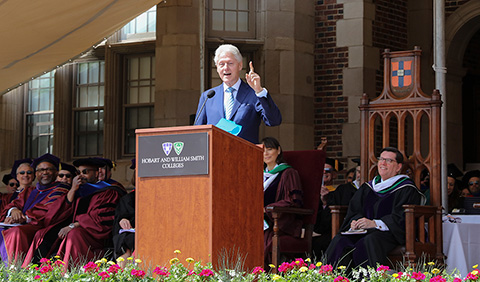
Former President Bill Clinton speaking on the Quad during the 2017 Commencement.
May 2017: Former President Bill Clinton gives the commencement speech and receives an honorary degree. Read more about the address here.
Sept. 4, 2017: The LGBTQ+ Resource Center, located on the first floor of de Cordova Hall, offers a space for students and organizations to meet and find campus and community resources. Its opening coincides with the 15th anniversary of Hobart and William Smith’s LGBT Studies program, the first of its kind in the country.

Dr. Gregory J. Vincent ’83 is inaugurated as the 27th president of Hobart College and the 16th of William Smith College.
Oct. 27, 2017: Dr. Gregory J. Vincent ’83 is inaugurated as the 27th president of Hobart College and the 16th of William Smith College. A national expert on civil rights, social justice and campus culture, Vincent is the first African American to lead the Colleges.
April 13, 2018: After President Vincent ’83 resigns, Professor Emeritus of Economics Pat McGuire serves as interim president while HWS conducts a national search.
Oct. 2018: The Bozzuto Center for Entrepreneurship in downtown Geneva is officially dedicated and named in honor of Trustee Thomas S. Bozzuto ’68, L.H.D. ’18. Read more about the Bozzuto Center here.
2019: After a year of work by a task force of faculty, staff, students and trustees, the Board of Trustees puts into place a plan to make it possible for students to select “Hobart and William Smith Colleges” on their diploma in addition to the traditional Hobart College diploma and William Smith College diploma. The State approves the change and the Classes of 2020 are the first with the option. Read more about these efforts and the history of the coordinate system here.

President Joyce P. Jacobsen named the next President of Hobart and William Smith at an event in February 2019. She is pictured with Chair of Board of Trustees Thomas Bozzuto ’68, L.H.D. ’18 (left) and Co-Chair of the Search Committee Andrew G. McMaster Jr. ’74, P’09.
July 1, 2019: Joyce P. Jacobsen begins serving as the 29th President of Hobart College and the 18th of William Smith College. Jacobsen is a renowned scholar of economics, an award-winning teacher and an experienced administrator with degrees from Harvard, The London School of Economics and Stanford University. She is the first woman to serve as president of Hobart and William Smith Colleges. Read more about President Jacobsen here.
Sep. 28, 2019: The Thomas B. Poole and Family Sports Dome is dedicated during Homecoming and Family Weekend. The Dome houses a nearly 86,000 square-foot FieldTurf surface that can be used for all of the Colleges’ field teams and was made possible by a lead gift from Trustee Thomas B. ’61, L.H.D. ’06 and Mary Jane Poole P’91. Read more about the Dome here.
Oct. 18, 2019: The inauguration of Joyce P. Jacobsen is held on the steps of Coxe Hall. Jacobsen said it was an opportunity of a lifetime to head the Colleges, which she described as “spunky, scrappy colleges that have survived numerous existential threats over their years and nonetheless just keep on keeping on, hustling and marketing and serving the community in which they are embedded.”
2019: The 50th anniversary of the Higher Education Opportunity Program (HEOP) is celebrated on campus. Founded by State Assemblyman Arthur O. Eve P’89, L.H.D. ’10, more than 1,000 HWS students have participated.
2019: The Peace Corps ranks HWS No. 3 among small-size schools on the agency’s list of top volunteer-producing colleges and universities.
Feb. 12, 2020: Hobart and William Smith are ranked among U.S. colleges and universities that produced the most 2019-2020 Fulbright U.S. students.

March 12, 2020: Six days removed from a 62-61 win at No. 17 Springfield, the Hobart basketball team was practicing on the court at Christopher Newport University when the Statesmen learned their third round game against the Captains as well as the rest of the NCAA tournament was being canceled due to the pandemic. The 2019-20 Statesmen had a 23-5 record, tying the record for wins in a season and raising the mark for season winning percentage (.821). The NCAA’s decision also impacted the Hobart hockey team which was supposed to travel to Michigan for its first round game at Adrian. Intercollegiate athletics at the Colleges remained shuttered for nearly a year as the world dealt with COVID-19.
March 13, 2020: With the safety of students, faculty, staff, and the Geneva community of utmost concern, the outbreak of COVID-19 forces the HWS administration to move most students off campus and shift to a remote learning model. Commencement and reunion are postponed until 2021. A newly formed Students Emergency Fund, coordinated by alumni and alumnae leadership and students raises more than $60,000 to provide students with immediate financial assistance. In addition, two regional foundations—the Fred L. Emerson Foundation and the Max and Marian Farash Charitable Foundation—make gifts to help the HWS community help with COVID-related expenses.
May 31, 2020: HWS closes out the 2020 fiscal year with more than $22 million in new gifts and commitments, making it the largest fundraising year in history.
June 2020: HWS faculty and students institute a series of events, resources and programs in response to the killings of George Floyd, Ahmaud Arbery, Breonna Taylor and other Black Americans.
July 2020: The 2020 fall sports season is cancelled due to the COVID-19 pandemic.
Aug. 2020: Students return to campus for the first time since the beginning of the pandemic. In-person instruction remains an option for students due to the campus community’s diligence in wearing masks, practicing physical distancing, completing daily health checks, testing and eventually when available, getting vaccinated.
Sept. 2020: President Jacobsen declares the 2020-2021 school year to be “The Year of Engagement” and asks the HWS community to engage “with new ideas, communities and urgent social problems, using the power of liberal arts.”
Nov. 9, 2020: The 2020-21 winter sports season is cancelled due to COVID.
December 7, 2020: The campus’ chapter of Kappa Alpha celebrates its 175th anniversary. Read more here.
March 3, 2021: Associate Vice President and Director of Athletics Deb Steward announces that all nine HWS spring sports teams will return to action.
May 1, 2021: Hobart rowing wins its 15th consecutive Liberty League Championship.
2021: The Colleges announce the new Master of Science in Management that allows students to complete a bachelor’s and master’s degree in as few as four years. Learn about the new degree here.
2021: For the first time in history, the HWS endowment has now exceeded $300 million. For comparison, in the early 1980s, the endowment was $8 million.
Aug. 2021: The Colleges announce plans to add 12 sports to its roster. The expansion begins in the 2022-23 academic year when Hobart welcomes back alpine skiing, baseball, and swimming and diving, and William Smith adds alpine skiing, bowling and volleyball. Hobart volleyball begins competition in 2023-24. The following year, Hobart and William Smith will compete in indoor and outdoor track and field. The plan concludes in the 2025-26 season with the addition of softball.
Aug. 2021: Students return to campus for the 2021-22 academic year. COVID-19 vaccinations are required.
Dec. 2021: President Jacobsen announces that all faculty, staff and students must be vaccinated and have a booster shot.
Jan. 2022: The Colleges announce a new minor in Aquatic Studies.
July 2022: President Emeritus Mark D. Gearan L.H.D. ’17, P’21 was named the 30th president of Hobart and the 19th of William Smith following the resignation of Joyce P. Jacobsen. After leaving Hobart and William Smith in 2017, Gearan served as President in Residence at the Harvard Graduate School of Education, and in 2018 was appointed Director of the Institute of Politics at the Harvard Kennedy School. Jacobsen, an expert on labor economics, particularly the economics of gender, joined the HWS Economics Department as a professor following her resignation.


